inbox and environment News: Issue 578
April 2 - 15 2023: Issue 578
Protect Mona Vale's Bongin Bongin Bay - Establish An Aquatic Reserve
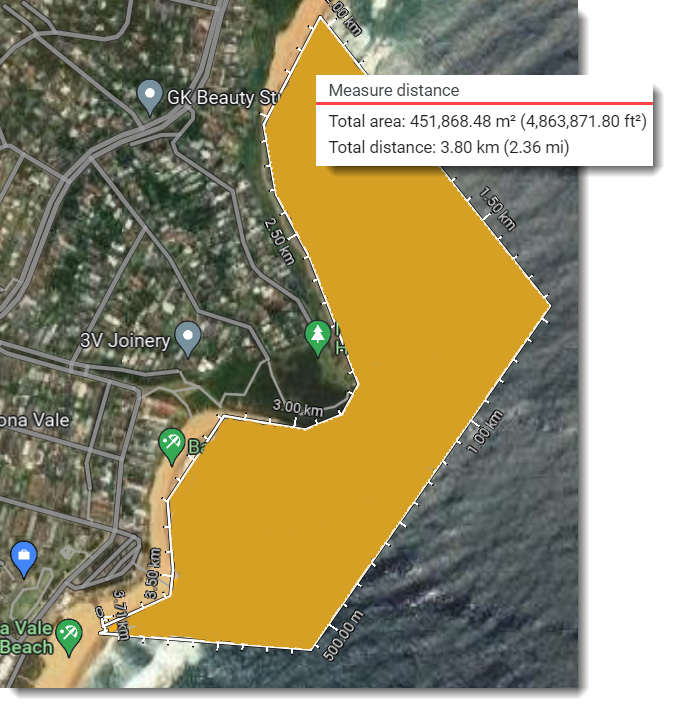
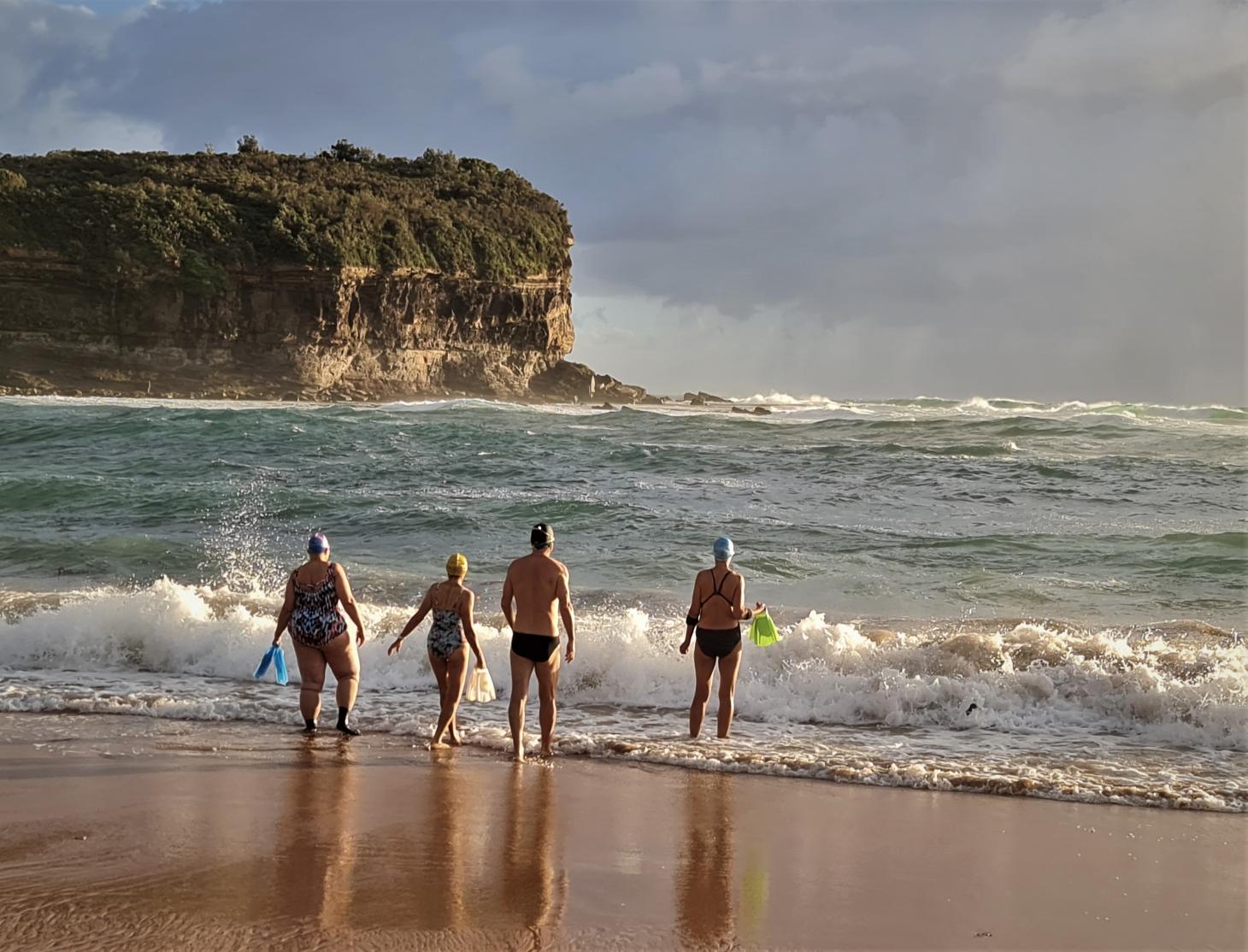
More Runoff Pollution - Narrabeen- Collaroy Beachfront
March 30, 2023: Oily muck oozing out of a drain at Frazer Street, Collaroy - Narrabeen beach.
Council informed - water flow was stopped.
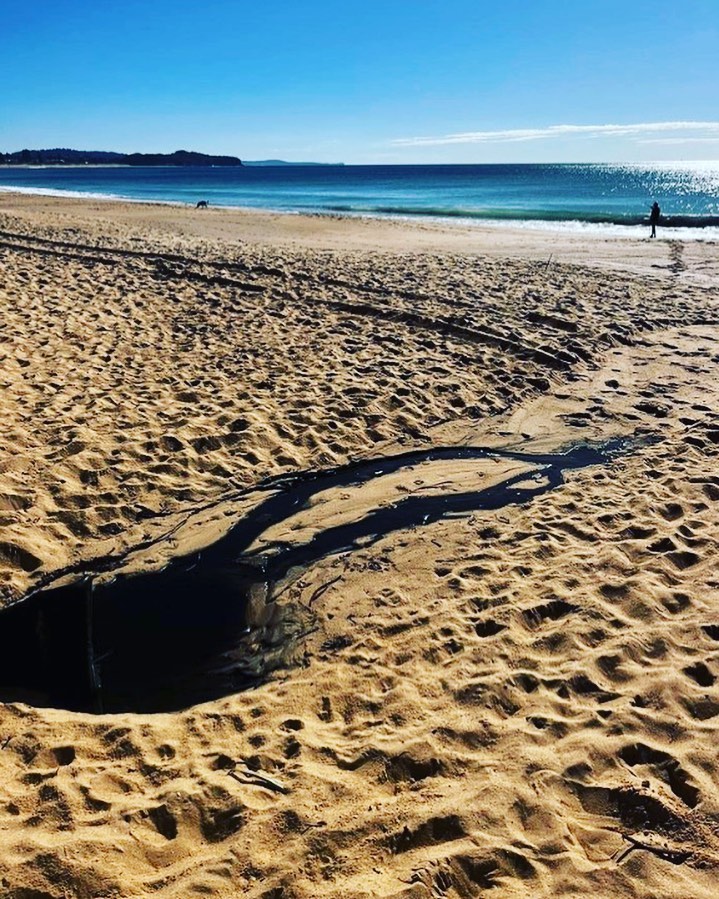
Photo: Surfrider Foundation Northern Beaches
Rainbow Lorikeet Pair Feasting On Palm Flowers
Careel Bay, March 30 2023
Photos: AJG
.jpg?timestamp=1680382887182)
.jpg?timestamp=1680293666288)
New Handrail Installed At North Avalon Beach
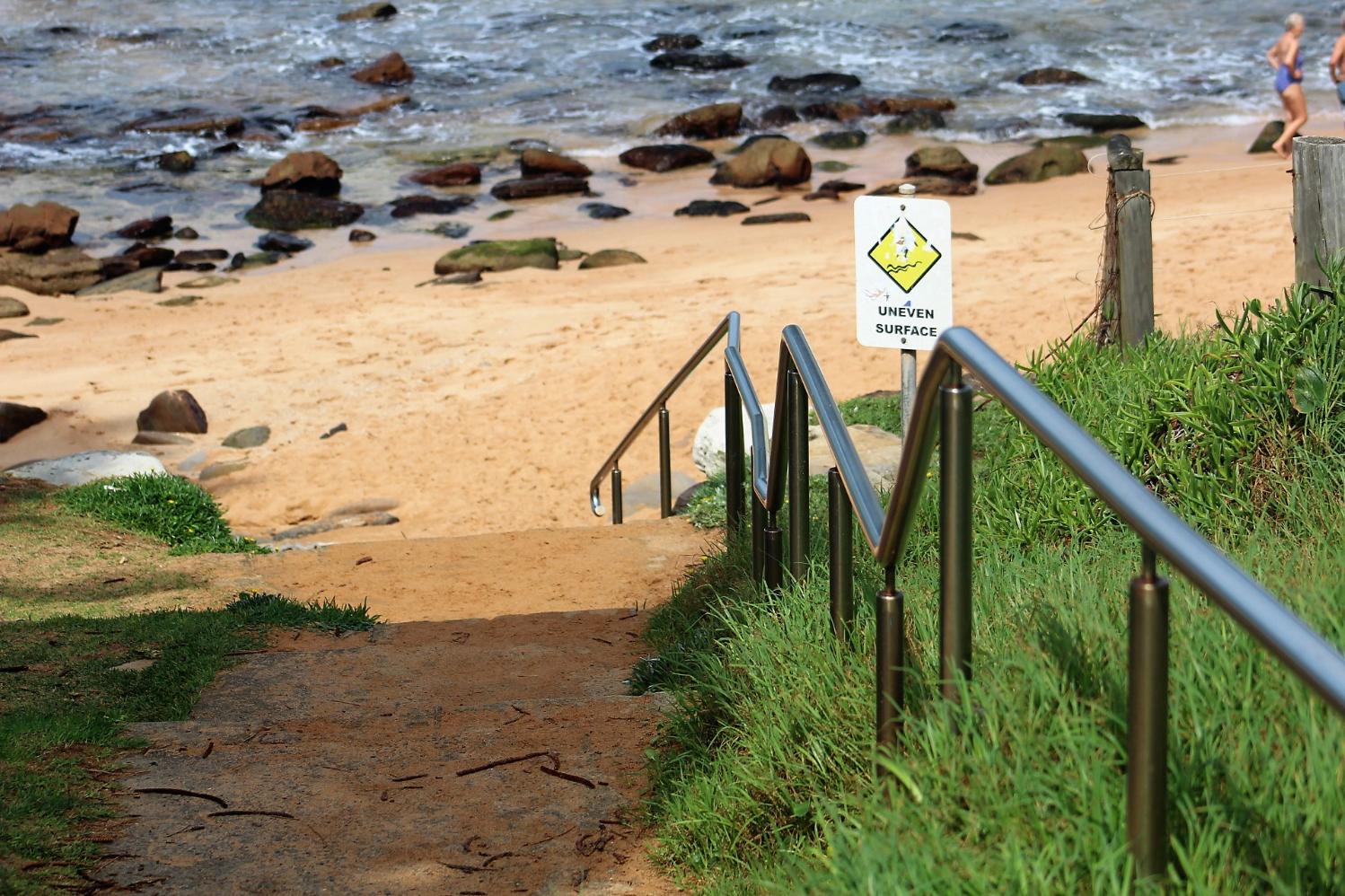
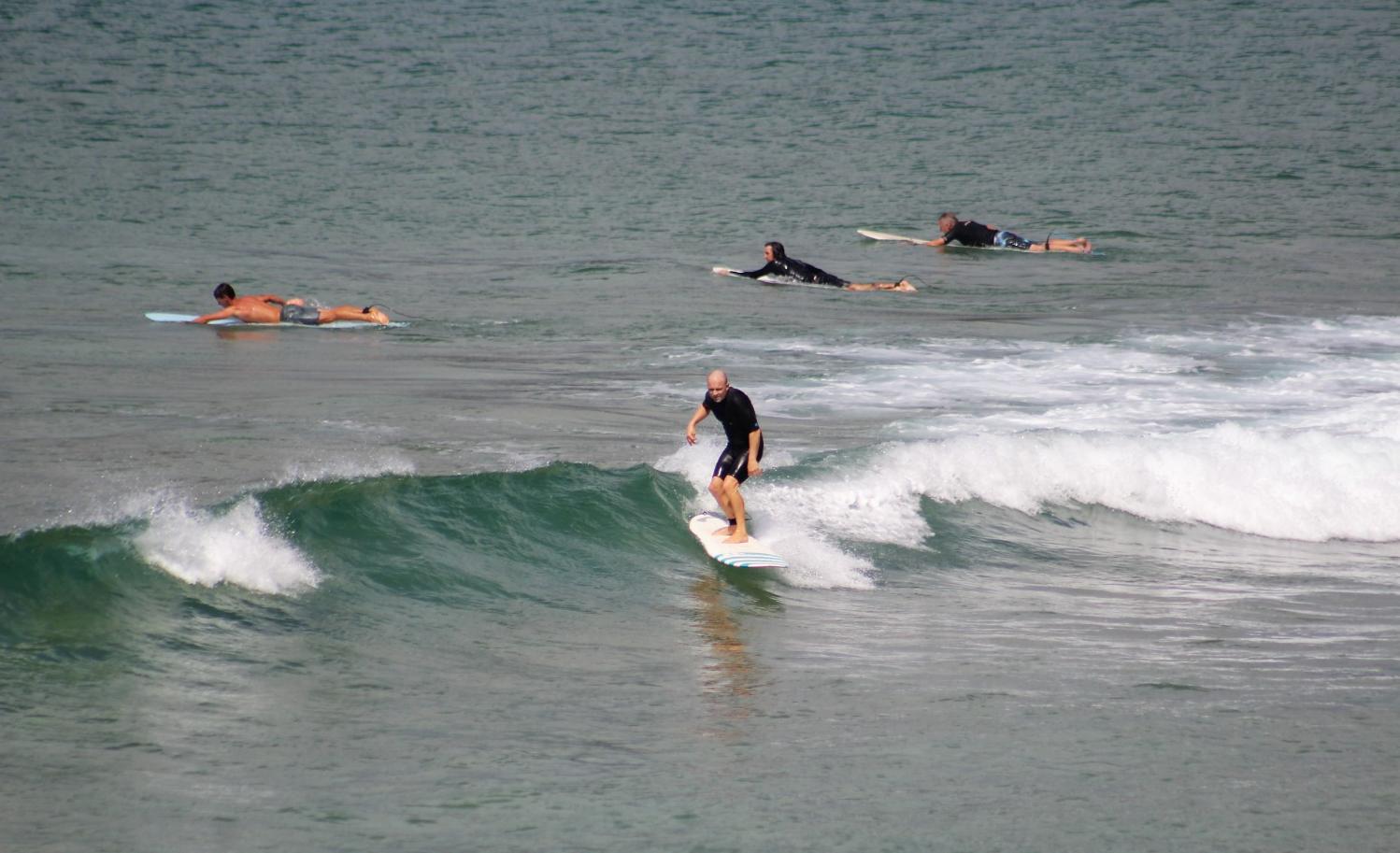
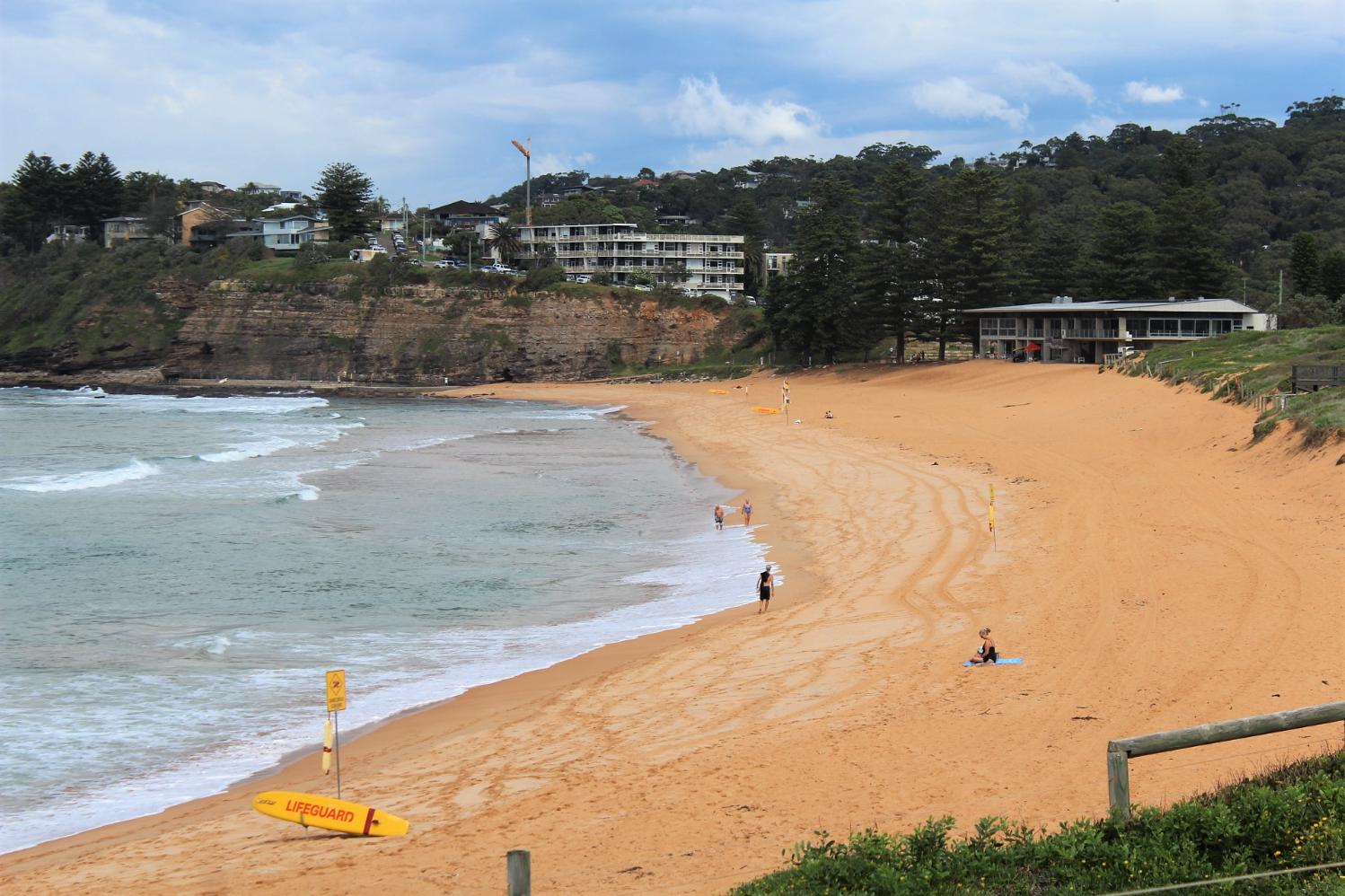
Swamp Wallaby At Palm Beach
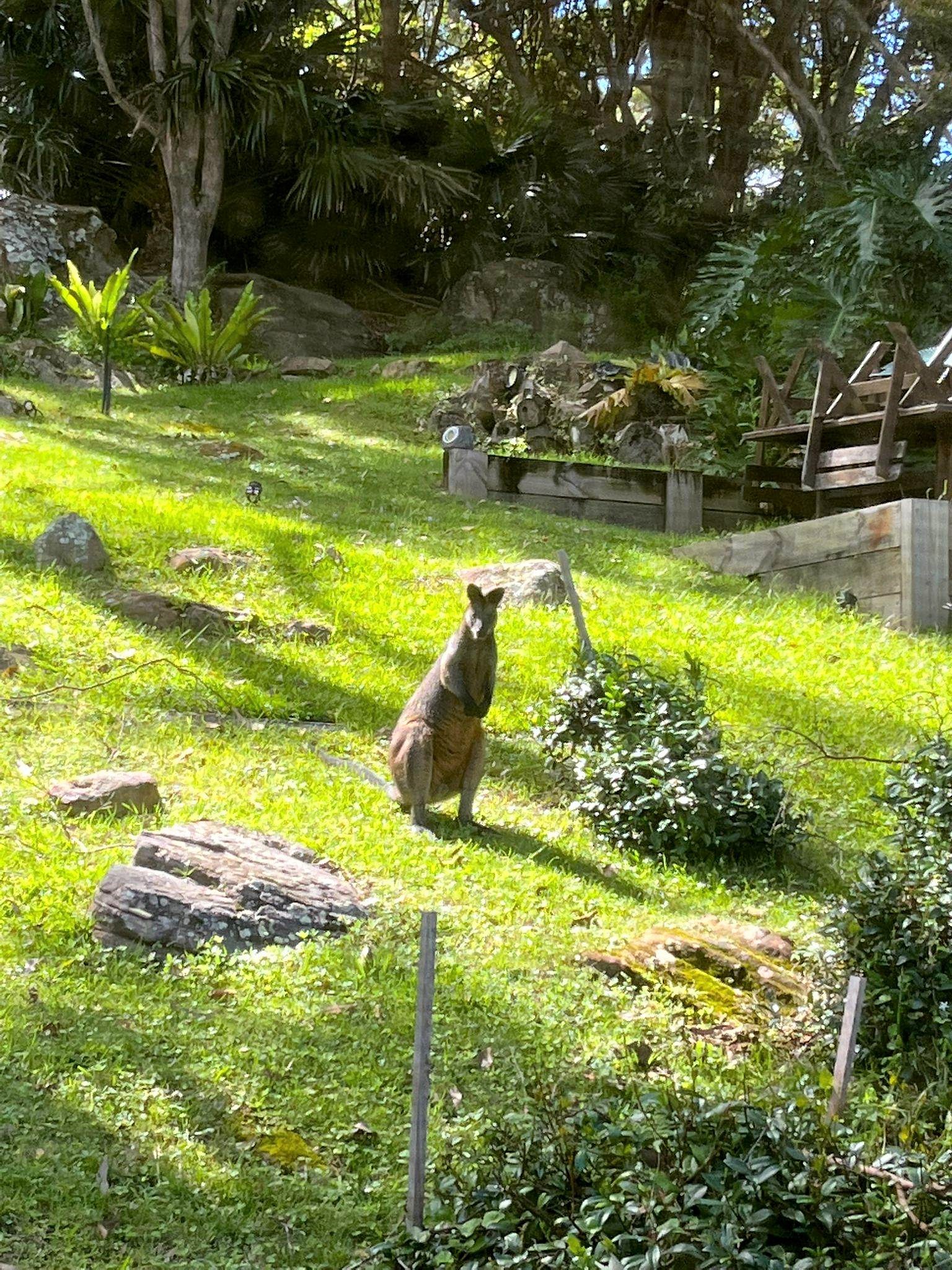
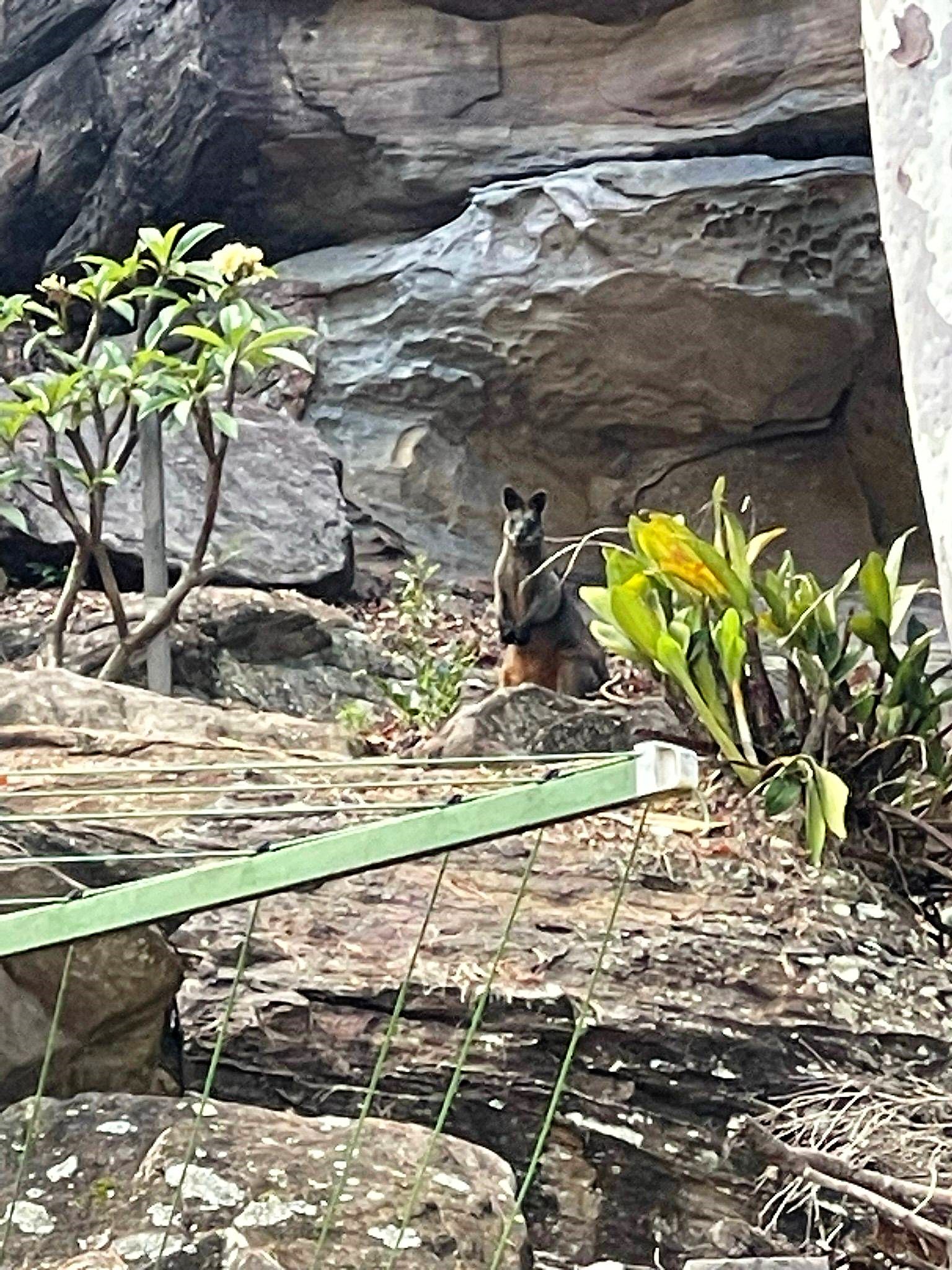
Westleigh Park - Critically Endangered Forest - POM Open For Feedback By Hornsby Council Until April 8
Purchased from Sydney Water in 2016, the 36-hectare Westleigh Park, Hornsby Council states, will play a key role in recreational provision for the district including a diverse range of provisions for formal sports, passive recreation (e.g. picnics, walking, playground), mountain biking and ancillary facilities (including internal roads, carparks, amenities buildings, shared paths and water management).
At its 8 March 2023 Council Meeting, Hornsby Council endorsed a revised draft Master Plan for Westleigh Park to be published for comment as part of the exhibition of the draft Plan of Management (read the Business Papers and Minutes).
The revised draft Master Plan seeks to provide a conceptual framework for ongoing planning on the site.
The draft Plan of Management establishes an appropriate character and scale for the development and management for Westleigh Park. It will enable the construction of new open space facilities at Westleigh Park to commence and will help identify a program of development and ongoing maintenance works.
Closes April 9, 2023
Visit: https://yoursay.hornsby.nsw.gov.au/westleigh-park-plan-management
Video published March 24, 2023 by Wild Bush Solutions
Calling All Citizen Scientists: Hunt For Shark Egg Cases Launches In Australia
March 20, 2023: CSIRO, Australia’s national science agency, is calling on citizen scientists to find and record egg cases washing up on Australian coasts, so researchers can better-understand oviparous chondrichthyans: egg-laying sharks, skates and chimaeras.
The Great Eggcase Hunt, an initiative of United Kingdom-based charity The Shark Trust, has launched in Australia in partnership with CSIRO to help provide new data for scientists studying the taxonomy and distribution of oviparous chondrichthyans.
Helen O’Neill, CSIRO Australian National Fish Collection biologist, said recording sightings of egg cases on beaches and coastlines would help scientists discover what the egg cases of different chondrichthyans look like, with some species still unknown.
“Egg cases are important for understanding the basic biology of oviparous chondrichthyans, as well as revealing valuable information such as where different species live and where their nurseries are located,” Ms O’Neill said.
Cat Gordon, Senior Conservation Officer at The Shark Trust, said the Great Eggcase Hunt began in the United Kingdom 20 years ago and has since recorded more than 380,000 individual egg cases from around the world.
“We’re really excited to be partnering with CSIRO to officially launch this citizen science project in Australia and to be able to expand the Shark Trust’s eggcase identification resources," Ms Gordon said.
"There’s such a diversity of species to be found around the Australian coastline, and with a tailored identification guide created for each state, they really showcase the different catsharks, skate, horn sharks, carpetsharks and chimaera eggcases that can be found washed ashore or seen while diving,” she said.
Also known as mermaids’ purses, egg cases come in many different shapes and colours, ranging from cream and butterscotch to deep amber and black. They range in size from approximately 4 to 25 centimetres.
Some egg cases have a smooth and simple appearance, while others have ridges, keels or curling tendrils that anchor them to kelp or coral. Port Jackson sharks have corkscrew-shaped egg cases that they wedge into rocks.
Each different species' egg case has a unique morphology that is helpful in taxonomy, the science of describing and naming species.
“At the Australian National Fish Collection, we are matching egg cases to the species that laid them,” Ms O’Neill said.
“We borrow egg cases from other collections, museums and aquariums around the world and use our own specimens collected from fish markets and surveys at sea or extracted from the ovaries of preserved specimens in our collection,” she said.
Chondrichthyans have the most diverse reproduction strategies found among vertebrates, encompassing parthenogenesis (no father), multiple paternity (more than one father of the litter), adelphophagy (baby sharks predating each other in the womb) and various modes of egg laying.
Egg cases found on beaches rarely contain live embryos, whose incubation times range from a few months up to three years, depending on the species.
“Egg cases found washed up on beaches have likely already hatched, died prematurely due to being washed ashore or been predated on by creatures like sea snails, who bore a hole in the egg case and suck out the contents,” Ms O’Neill said.
The Shark Trust is a United-Kingdom-based charity dedicated to safeguarding the future of sharks, skates, rays, and chimaera through positive change. The Trust achieves this through science, education, influence and action.
To get involved in the Great Eggcase Hunt, you can record sightings via the Shark Trust citizen science mobile phone app or through the project website: www.sharktrust.org/greateggcasehunt
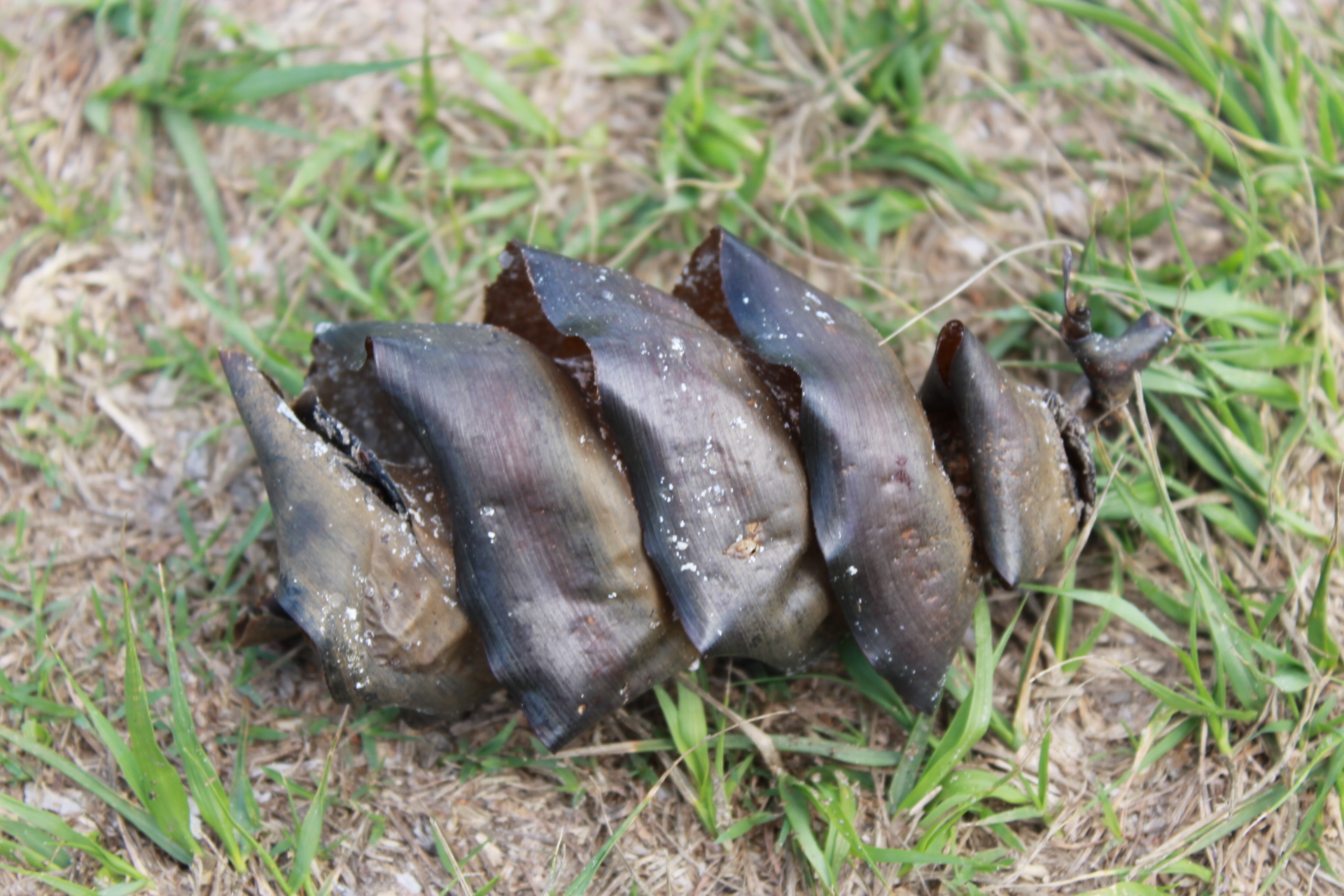
Photo: Port Jackson shark egg on Station Beach at Pittwater. Image PON/AJG
The Port Jackson shark (Heterodontus portusjacksoni) is a nocturnal, oviparous (egg laying) type of bullhead shark of the family Heterodontidae, found in the coastal region of southern Australia, including the waters off Port Jackson. It has a large, blunt head with prominent forehead ridges and dark brown harness-like markings on a lighter grey-brown body, and can grow up to 1.65 metres (5.5 ft) long. They are the largest in the genus Heterodontus.
The Port Jackson shark is a migratory species, traveling south in the summer and returning north to breed in the winter. It feeds on hard-shelled mollusks, crustaceans, sea urchins, and fish. Identification of this species is very easy due to the pattern of harness-like markings that cross the eyes, run along the back to the first dorsal fin, then cross the side of the body, in addition to the spine in front of both dorsal fins.
These sharks are are oviparous, meaning that they lay eggs rather than give live birth to their young. The species has an annual breeding cycle which begins in late August and continues until the middle of November. During this time, the female lays pairs of eggs every 8-17 days. As many as eight pairs can be laid during this period. The eggs mature for 10–11 months before the hatchlings, known as neonates, can break out of the egg capsule.
Port Jackson shark adults are often seen resting in caves in groups, and prefer to associate with specific sharks based on sex and size. Juvenile Port Jackson sharks, on the other hand, do not appear to be social. A captive study showed that these juveniles did not prefer to spend time next to other sharks, even when they were familiar with each other (i.e. tank mates). Juvenile Port Jackson sharks have unique personality traits, just like humans. Some were bolder than others when exploring a novel environment and they also reacted differently to a stressful situation (in choosing a freeze or flight response).
Juvenile Port Jackson sharks are also capable of learning to associate bubbles, LED lights, or sounds with receiving a food reward, can distinguish different quantities (i.e. count), and can learn by watching what other sharks are doing.
At least in some of these lab experiments males are shyer than females and boldness increases with consecutive trials of the same experiment. In experiments with different music genres, none of the sharks tested learned to discriminate between a jazz and a classical music stimulus.
Port Jackson Sharks are considered harmless to humans, although the teeth, whilst not large or sharp, can give a painful bite.
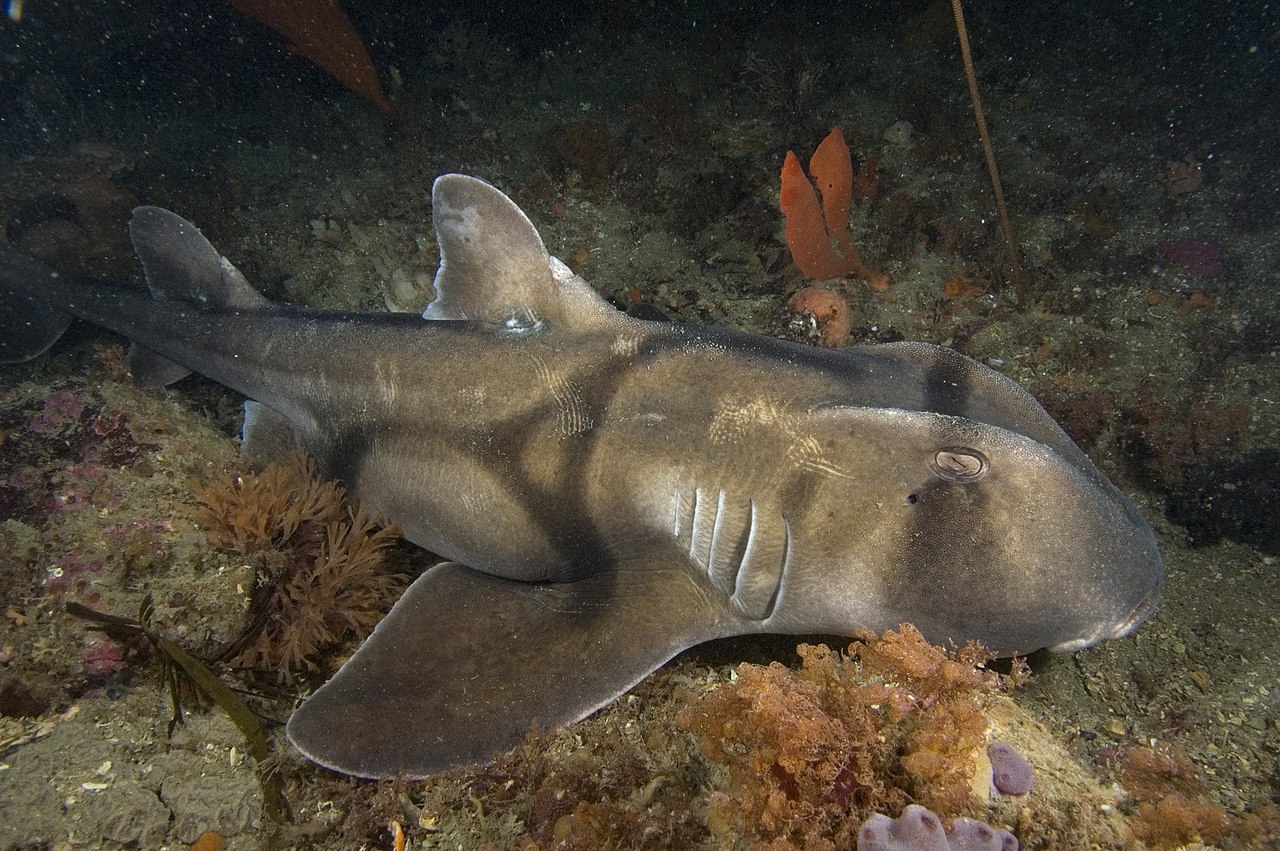
Heterodontus portusjacksoni. Photo: Mark Norman, Museums Victoria
Cat Owners Encouraged To Keep Their Pets Safe At Home
Wednesday, 1 March 2023
Northern Beaches residents are being encouraged to keep their pets safe at home as part of a new animal protection campaign.
According to RSPCA NSW, two out of three cat owners have lost a cat to a roaming-related accident, and one in three to a car accident. Northern Beaches Council is proud to be one of 11 councils partnering with RSPCA NSW as part of the Keeping Cats Safe at Home project.
Promoting responsible ownership, the new campaign goes beyond desexing and micro chipping of beloved cats and asks owners to consider keeping their cats at home.
Northern Beaches CEO Ray Brownlee said there’s a dual benefit to cats and local wildlife that flows directly from promoting responsible ownership of domesticated cats.
“Northern Beaches residents love their pets, but they’re also passionate about protecting the local environment,” Mr Brownlee said.
“Because pet cats occupy a special place in our hearts we need to educate the community on how have them microchip and desexed to keep them safe. This initiative has an educational focus. It aims to protect tiny native species like lizards, mammals, baby birds and frogs, while also preventing domesticated cats from falling prey to road accidents.”
In 2021, the NSW Government awarded a $2.5 million grant from the NSW Environmental Trust to RSPCA NSW to deliver the project.
To help promote the campaign, Council is asking cat-lovers living on the Northern Beaches to submit a photo of their cat or kitten living their best life at home and go in the draw to win one of 10 $1000 vouchers for a deluxe outdoor cat enclosure from Catnets. The competition opens on March 1st and closes on Sunday April 9th 2023. Finalists will be published in an online gallery.
For competition details visit www.northernbeaches.nsw.gov.au/environment/non-native-animals/cats/competition-keeping-cats-safe-home
Learn more about keeping cats safe at www.rspcansw.org.au/keeping-cats-safe
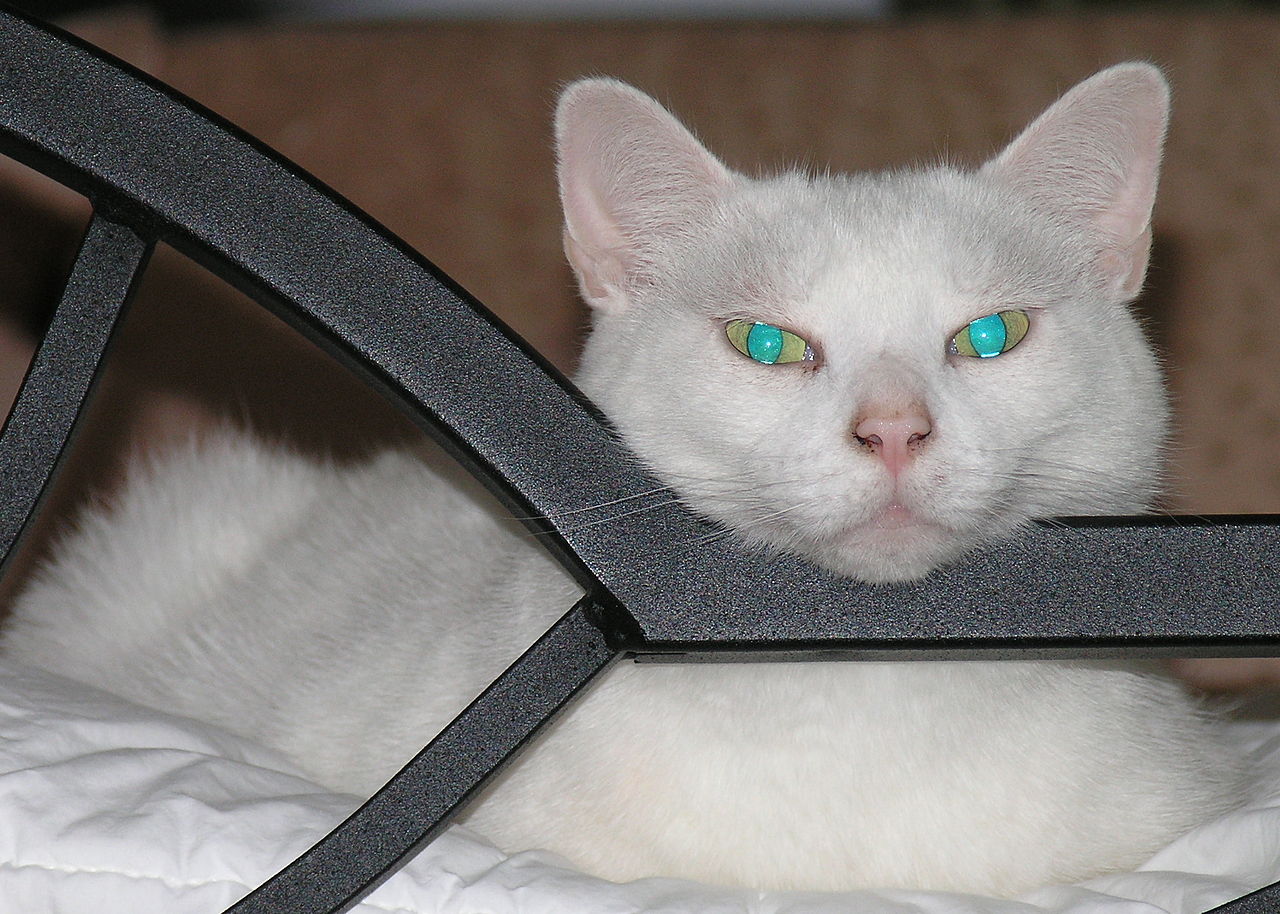
Photo: Greg Hume
Black Summer Vigil For Wildlife: April 2nd
The New South Wales Wildlife Council invites all wildlife carers, wildlife vets, vet nurses, first responders and supporters to the upcoming Black Summer Vigil for Wildlife on Sunday April 2nd 2023 starting at 2pm.
Please join us for the Black Summer Vigil, a three-year anniversary memorial service for the three billion animals who lost their lives in the fires – “one of the worst wildlife disasters in modern history”.
Attend online or in-person at Camperdown Memorial Rest Park (Sydney).
RSVP at: blacksummervigil.com
You’ll hear personal stories from the NSW Wildlife Council, Southern Cross Wildlife Care and other first responders across wildlife rescue, rural fire service, photojournalism, Aboriginal custodianship, veterinary medicine, ecology and more.
+ Performance and Ceremony by Jannawi Dance Clan, sharing a Dharug cultural perspective to honour the Ancestors and bring the spirit of the animals into our midst.
Join us to honour the animals who perished – and in doing so, celebrate the unique and extraordinary wildlife of these lands.
Speakers include:
Greg Mullins, Former Commissioner, Fire and Rescue NSW; Climate Councillor and founder, Emergency Leaders for Climate Action. Greg warned Australia's then–Prime Minister in April 2019 that a bushfire catastrophe was coming. He pleaded for support and was ignored, then risked his life dealing with the ramifications on the ground. “You couldn’t see very far because of the orange smoke. Everything was dark. It was probably 2 o’clock in the afternoon but it was like night. Then I saw something moving on the side of the road and I walked closer. It was a mob of kangaroos. The speed of that fire with its pyroconvective storm driving it in every direction, they had nowhere to go. They came out of the forest, on fire, and dropped dead on the road. I’ve never seen that. Kangaroos know what to do in a fire. They’re fast animals. Climate change, driven by the burning of coal, oil, and gas is driving worsening bushfires across Australia, and putting our precious, irreplaceable wildlife in danger.”
Internationally recognised ecologist and WWF board member, Professor Christopher Dickman oversaw the work calculating the animal deaths from Black Summer. A Fellow of the Australian Academy of Science, Professor Dickman already wore the heavy task of being an ecologist during the sixth mass extinction, in the country that has the worst rate of mammalian extinction in the world. On 8 January 2020 media around the world shared his finding that Black Summer fires had killed one billion animals. Sadly, the fires continued for two more months, and his team's final count was three billion. This does not include invertebrates: it is estimated 240 trillion beetles, moths, spiders, yabbies and other invertebrates died in the fires.
Coming up from the South Coast, owner of Wild2Free Kangaroo Sanctuary Rae Harvey, as seen in The Bond and The Fire. She is in the sad position of having personally known and cared for a number of Black Summer's victims: many of the orphaned joeys she cared for were killed in the fires. (She nearly died herself too.) For three years, she has been unable to even speak their names. Now, for the first time, she will tell the story of the joeys she lost.
Cultural burning practitioner and Southern NSW Regional Coordinator with Firesticks Alliance, Djiringanj-Yuin Custodian Dan Morgan. Dan practises using Aboriginal knowledge to heal Country. He has worked for 18 years with the NSW National Parks & Wildlife Service and is on the board of management for the Biamanga National Park, a sacred area home to the last surviving koalas on the NSW south coast – which was partly destroyed by the fires of Black Summer. “The animals that live on our sacred sites are our Ancestors, it's our Cultural obligation to protect them. We have evolved with our Country over thousands of years, nourishing and protecting all living species. Our Country represents our people. So when the fires came, it was devastating to see the aftermath, and the feeling of helplessness was truly traumatising for our people, due to the denial of our Cultural right to manage Country as our Ancestors did for thousands of years prior to colonisation. Australia needs to make legislative changes that allow us to heal Country and our community through the fire knowledge and to stop incinerating ecosystems with destructive 'hazard-reduction' burns."
Head of Programs & Disaster Response at Humane Society International (HSI), Evan Quartermain was one of the first responders on Kangaroo Island where nearly 40% of the island burnt at high severity: “Those were some of the toughest scenes I’d ever witnessed as an animal rescuer: the bodies of charred animals as far as the eye can see. Every time we found an animal alive it felt like a miracle.” As a result of this firsthand experience, HSI commissioned a report into the state of Australia's disaster response for wildlife, which we'll also hear about.
+ More to come.
The Black Summer Vigil is brought to you by the Department of Animals, Animals Australia, the NSW Wildlife Council, World Animal Protection, Humane Society International and Defend the Wild, with support from WIRES, Firesticks Alliance, Nature Conservation Council of NSW, Wild2Free Kangaroo Rescue, Four Paws, Friends of the Koala and Kangaroos Alive.

Permaculture Northern Beaches - Upcoming Events
- Learn about Permaculture design
- Caring for and raising chickens
- Native bees and bee hotels
- Living Skills - soap making
- AND Live Music!
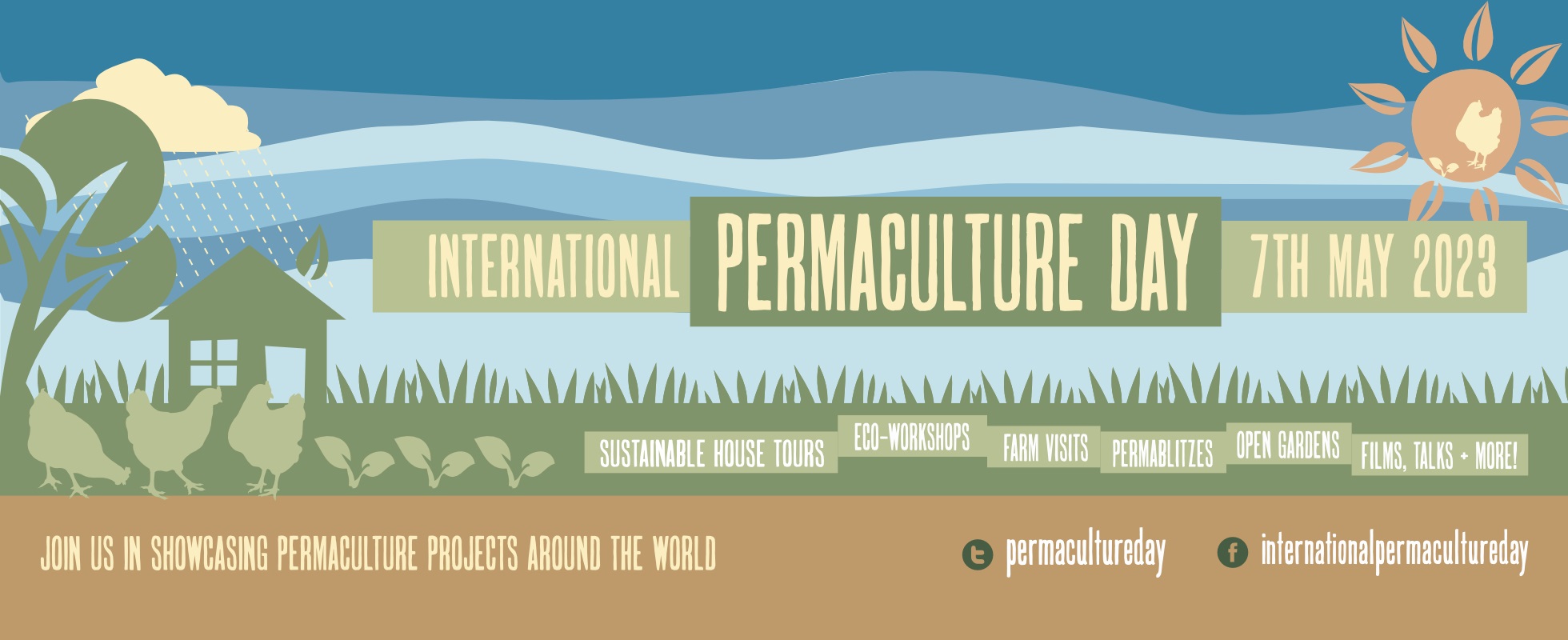
Northern Beaches Clean Up Crew: Avalon Beach April 30
Come and join us for our family friendly April clean up, close to Avalon Surf Lifesaving Club (558 Barrenjoey road, Avalon) on the 30th at 10am.
We have gloves, bags, and buckets, and grabbers. We're trying to remove as much plastic and rubbish as possible before it enters the ocean. Some of us can focus on the bush area and sandy/rocky areas, and others can walk along the beach and even clean up in the water (at own risk). We will clean up until around 11.20, and after that, we will sort and count the rubbish so we can contribute to research by entering it into a marine debris database. The sorting and counting is normally finished around noon, and we'll often go for lunch together at our own expense. We understand if you cannot stay for this part, but are grateful if you can. We appreciate any help we can get, no matter how small or big.
No booking required - just show up on the day. We're a friendly group of people, and everyone is welcome to this family friendly event. It's a nice community - make some new friends and do a good deed for the planet at the same time. For everyone to feel welcome, please leave political and religious messages at home - this includes t-shirts with political campaign messages. There is a council carpark, but it is often busy on Sundays, so check streets close by as well if it's full or please consider using public transport.
Message us on our social media or send us an email if you are lost. All welcome - the more the merrier. Please invite your friends too!
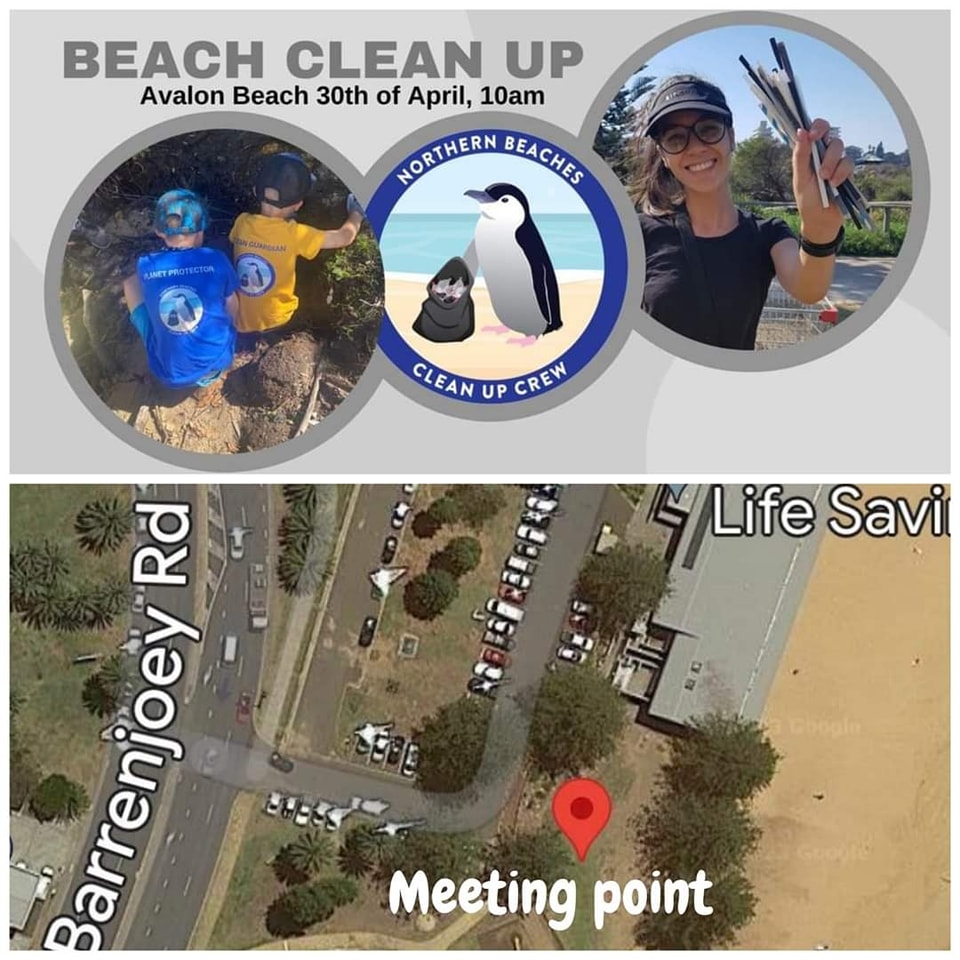
Report Fox Sightings
%20(1).jpg?timestamp=1675893929686)
Weed Of The Week: Cassia - Please Pull Out And Save Our Bush
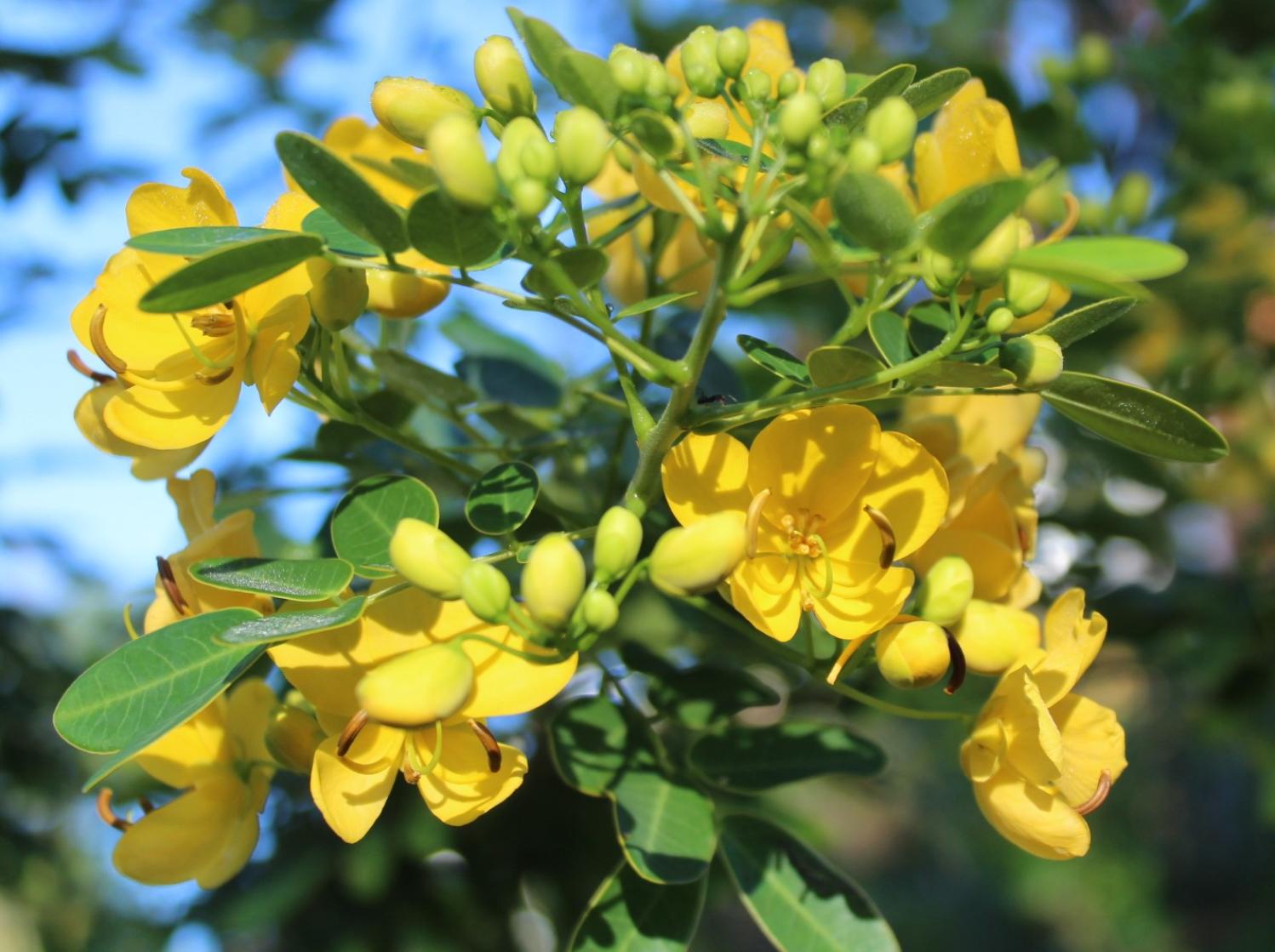
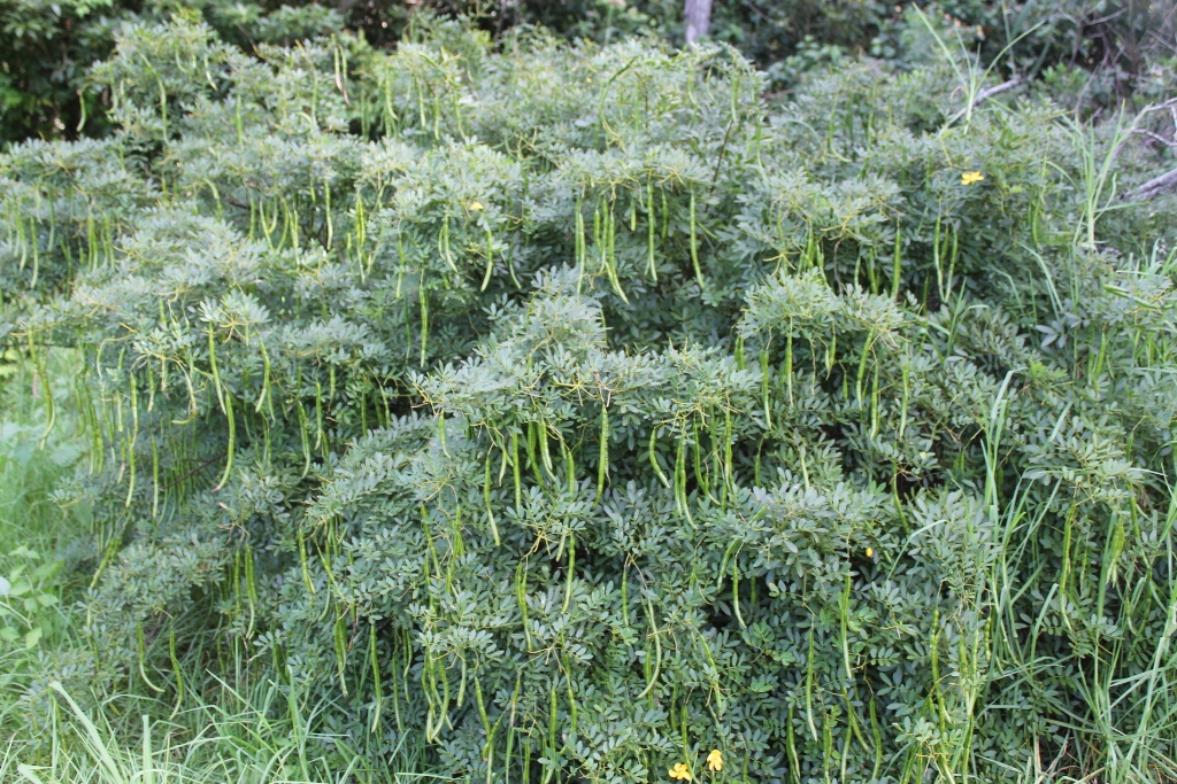
New Marine Wildlife Rescue Group On The Central Coast
A new wildlife group was launched on the Central Coast on Saturday, December 10, 2022.
Marine Wildlife Rescue Central Coast (MWRCC) had its official launch at The Entrance Boat Shed at 10am.
The group comprises current and former members of ASTR, ORRCA, Sea Shepherd, Greenpeace, WIRES and Wildlife ARC, as well as vets, academics, and people from all walks of life.
Well known marine wildlife advocate and activist Cathy Gilmore is spearheading the organisation.
“We believe that it is time the Central Coast looked after its own marine wildlife, and not be under the control or directed by groups that aren’t based locally,” Gilmore said.
“We have the local knowledge and are set up to respond and help injured animals more quickly.
“This also means that donations and money fundraised will go directly into helping our local marine creatures, and not get tied up elsewhere in the state.”
The organisation plans to have rehabilitation facilities and rescue kits placed in strategic locations around the region.
MWRCC will also be in touch with Indigenous groups to learn the traditional importance of the local marine environment and its inhabitants.
“We want to work with these groups and share knowledge between us,” Gilmore said.
“This is an opportunity to help save and protect our local marine wildlife, so if you have passion and commitment, then you are more than welcome to join us.”
Marine Wildlife Rescue Central Coast has a Facebook page where you may contact members. Visit: https://www.facebook.com/profile.php?id=100076317431064
- Ph: 0478 439 965
- Email: marinewildlifecc@gmail.com
- Instagram: marinewildliferescuecc

Watch Out - Shorebirds About
.JPG.opt1460x973o0,0s1460x973.jpg?timestamp=1663629195339)
Possums In Your Roof?: Do The Right Thing

Aviaries + Possum Release Sites Needed

Bushcare In Pittwater
Where we work Which day What time
Avalon
Angophora Reserve 3rd Sunday 8:30 - 11:30am
Avalon Dunes 1st Sunday 8:30 - 11:30am
Avalon Golf Course 2nd Wednesday 3 - 5:30pm
Careel Creek 4th Saturday 8:30 - 11:30am
Toongari Reserve 3rd Saturday 9 - 12noon (8 - 11am in summer)
Bangalley Headland 2nd Sunday 9 to 12noon
Bayview
Winnererremy Bay 4th Sunday 9 to 12noon
Bilgola
North Bilgola Beach 3rd Monday 9 - 12noon
Algona Reserve 1st Saturday 9 - 12noon
Plateau Park 1st Friday 8:30 - 11:30am
Church Point
Browns Bay Reserve 1st Tuesday 9 - 12noon
McCarrs Creek Reserve Contact Bushcare Officer To be confirmed
Clareville
Old Wharf Reserve 3rd Saturday 8 - 11am
Elanora
Kundibah Reserve 4th Sunday 8:30 - 11:30am
Mona Vale
Mona Vale Beach Basin 1st Saturday 8 - 11am
Mona Vale Dunes 2nd Saturday +3rd Thursday 8:30 - 11:30am
Newport
Bungan Beach 4th Sunday 9 - 12noon
Crescent Reserve 3rd Sunday 9 - 12noon
North Newport Beach 4th Saturday 8:30 - 11:30am
Porter Reserve 2nd Saturday 8 - 11am
North Narrabeen
Irrawong Reserve 2nd Saturday 2 - 5pm
Palm Beach
North Palm Beach Dunes 3rd Saturday 9 - 12noon
Scotland Island
Catherine Park 2nd Sunday 10 - 12:30pm
Elizabeth Park 1st Saturday 9 - 12noon
Pathilda Reserve 3rd Saturday 9 - 12noon
Warriewood
Warriewood Wetlands 1st Sunday 8:30 - 11:30am
Whale Beach
Norma Park 1st Friday 9 - 12noon
Western Foreshores
Coopers Point, Elvina Bay 2nd Sunday 10 - 1pm
Rocky Point, Elvina Bay 1st Monday 9 - 12noon
Friends Of Narrabeen Lagoon Catchment Activities

Gardens And Environment Groups And Organisations In Pittwater
Federal Government States It Is Using Every Tool In The Box To Conserve More Of Our Iconic Landscapes; Invites Feedback On Framework
- A geographically defined area other than a Protected Area, which is governed and managed
- in ways that achieve positive and sustained long-term outcomes for the in-situ conservation
- of biodiversity, with associated ecosystem functions and services and where applicable,
- cultural, spiritual, socio-economic, and other locally relevant values.
Australia’s safeguard mechanism deal is only a half-win for the Greens, and for the climate
Kate Crowley, University of TasmaniaLabor and the Greens on Monday announced a deal to strengthen a key climate policy, the safeguard mechanism, by introducing a hard cap on industrial sector emissions.
But the Greens failed in their bid to force Labor to ban new coal and gas projects.
Labor did give ground in setting a hard cap on emissions which should – if it works – make many new fossil fuel projects unviable.
This isn’t the end of the climate wars – but the politics are changing. Denial and inaction are over. Now we’re seeing a tussle between the urgency of the Greens, Teals who want to ban fossil fuels and the Labor government as it balances demands from industry, climate voters and the unions.
All the while, our carbon budget is shrinking and the time available to act on climate change is disappearing.
How Did We Get Here?
In May last year, the Coalition government lost office after almost a decade of climate policy failures.
Labor won government. But the balance of power changed in other ways too. Seven Climate 200-backed Teal independent MPs were elected. The Greens had a record four members elected to the House of Representatives and gained the balance of power in the Senate.
Labor immediately set a new goal of cutting emissions 43% by the end of the decade. To do it, they pledged to strengthen the Coalition’s questionable safeguard mechanism. This scheme’s emissions allowances had been set too high, and there were too many exemptions, meaning it wouldn’t have cut the promised 200 million tonnes of emissions by 2030.
Labor promised to fix these problems. The Greens and Teals were extremely sceptical. The resulting negotiations have lasted months, and left many disillusioned about how ambitious Labor will really be on climate.
But we do have something. Yesterday, a deal was announced and Labor’s reformed plan passed the lower house en route to the Senate. The Liberal and National parties voted against the reforms, even though it is their own – indeed their only – climate policy.
Were The Negotiations Worth It?
Hopefully. But it hasn’t been smooth sailing to secure Green and Teal support.
From the outset the Greens tried to drive a hard bargain by seeking an end to all new coal and gas projects. This, the government made clear, was not going to happen, and it didn’t.
Relations deteriorated rapidly as the government looked set to keep backing new coal and gas projects. Even so, the Greens kept negotiating. This produced an early win – the government ruled out using its new A$15 billion National Reconstruction Fund to invest in coal, gas or logging native forests.
Labor did not give ground on no new coal and gas. But the Greens did secure a legislated cap on the total industrial emissions covered by Australia’s 215 largest polluters covered by the safeguard mechanism – essentially, fossil fuel industries and manufacturers.
Greens leader Adam Bandt says the cap will mean only half of the 116 proposed coal and gas projects can proceed. But this isn’t guaranteed. Some projects would not have been viable regardless. And laws can be readily changed.
It remains to be seen how the concessions won by the Greens will work in practice.
What About The Teals?
The Teals have been less visible in this process, but they haven’t been sitting idle. Both the Teal independents and independent senator David Pocock have called for an absolute cap on industrial emissions.
Indeed, founding Teal Zali Steggall was the first to call for a UK-style “climate budget”, which proved palatable for that country’s conservative government.
Besides an emission cap, the Teals have called for restraint around the use of offsets and increased legitimacy on the use of controversial carbon offsets to ensure emissions are actually cut, not just offset. They advocate stronger oversight by the Climate Change Authority and other regulators.
Teal Sophie Scamps has proposed a means of ending the revolving door between the fossil fuel industry and government positions which influence government’s climate policy.
Teal Kylea Tink proposes expanding the safeguard mechanism to cover more of the economy. At present, the mechanism only covers about 30% of Australia’s emissions and is limited to industrial facilities emitting over 100,000 tonnes a year. Tink wants this to be lowered to 25,000 tonnes.
In the Senate, Labor needs David Pocock’s vote as well as the Greens to pass the bill. Pocock’s constituents are worried about the effect of new fossil fuel projects on our shrinking carbon budget. But as a pragmatist wanting action rather than inaction, he has given his support.
Where To Next?
Attention will remain on the Greens, given they hold the balance of power in the Senate. They have capitalised on this, making sure to capture the media narrative by claiming the win – and flagging political fights to come over new fossil fuel projects.
But the Greens have also taken some friendly fire. Many environmentalists have been privately and publicly critical of a deal struck which does not rule out continued fossil fuel expansion in one of the world’s largest suppliers. Greens senator Nick McKim hit back at those in the movement he claim had undermined negotiations.
Greens founder Bob Brown dubbed Labor’s rejection of no new coal and gas a “colossal mistake”. He warned if climate minister Chris Bowen moves to weaken the hard cap on emissions, “it will bring the house down.”
We’ve seen this kind of backlash before, and it can be dangerous. Similar outrage helped kill the Rudd Labor government’s Carbon Pollution Reduction Scheme.
This is just the start. Having achieved a hard emissions cap, the Greens must ensure the cap actually caps emissions. That it’s set at the right level. And that it can’t be dodged or gamed. Stopping half of the mooted 116 fossil projects is hypothetical right now. Their voters will want them to deliver. ![]()
Kate Crowley, Adjunct Associate Professor, Public and Environmental Policy, University of Tasmania
This article is republished from The Conversation under a Creative Commons license. Read the original article.
Greens will back Labor’s safeguard mechanism without a ban on new coal and gas. That’s a good outcome
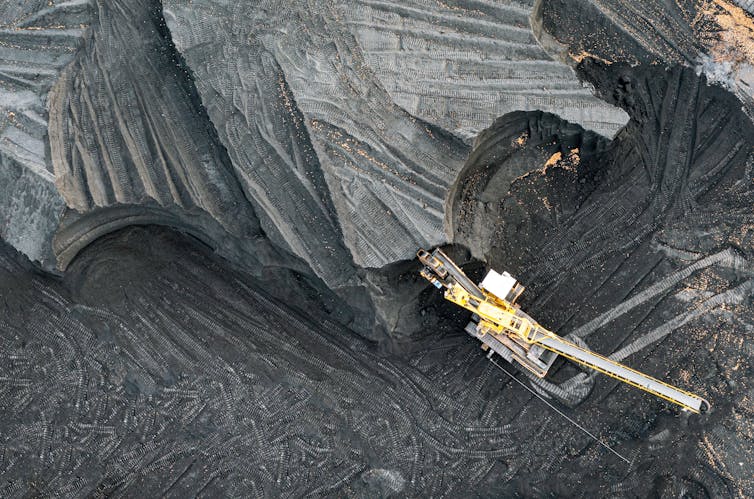
Labor and the Greens have reached a compromise on the safeguard mechanism after months of tense negotiations, giving the government the numbers it needs to pass the bill into law.
Greens leader Adam Bandt on Monday announced his party had secured a hard cap on emissions from polluters covered by the scheme. The cap will potentially affect new or expanding fossil fuel projects. But it falls short of the main concession the Greens originally demanded from Labor – an outright ban on new gas and coal projects.
The safeguard mechanism aims to curb emissions from about 215 of Australia’s biggest polluters. Labor’s tightening of the policy is crucial if Australia is to meet its emissions reduction target of 43% by 2030.
Building a hard emissions cap into the safeguard mechanism will go some way to giving this policy teeth. By limiting emissions to 140 million tonnes – the current emissions from industries covered by the scheme – it will make it harder for new fossil fuel projects to be viable.
How Will The Hard Cap Work?
Under the hard cap, the energy minister of the day will decide whether to permit a new fossil fuel project. The decision will be based on advice from the Climate Change Authority on projected gross emissions – meaning without carbon offsets being used.
The carbon budget for the sector will ensure Australia’s net emissions are in line with the central objective of the policy.
While the cap doesn’t prevent new projects, it does give us a level of confidence that any future projects can’t emit past a certain level.
Some 116 fossil fuel projects are being planned in Australia. Bandt says the cap means half of them will no longer proceed – and projects further along, such as fracking in the Northern Territory’s Beetaloo Basin, may no longer be feasible.
Bandt says Labor “still wants to open the rest” of the 116 projects in the pipeline, adding: “now there is going to be a fight for every new project that the government wants to open”. In reality, history suggests many of these projects would not have proceeded anyway, so we shouldn’t put too much weight on Labor’s concession.
No New Fossil Fuels Was A Hard Sell
From the outset of negotiations, Labor would not budge on the Greens’ demand to ban new coal and gas projects. On Monday, Bandt said trying to strike a deal with Labor was:
like negotiating with the political wing of the coal and gas corporations. Labor seems more afraid of the coal and gas corporations than climate collapse. Labor seems more afraid of Woodside than global warming.
But banning new coal and gas projects is a hard sell.
Fossil fuel projects in Australia have traditionally enjoyed bipartisan support. The Coalition likes them because they support corporations and exports. And many in Labor’s union base like the well-paid, reliable work the mines offer.
And then there’s the simple fact of supply and demand. Right now, the world is still 81% powered by fossil fuels. We have not yet built enough clean alternatives.
Right now, we ship large volumes of liquefied natural gas (LNG) and coal to countries in our region such as China, Japan and South Korea. If Australia banned new gas projects, these exports would be at risk. Our Asian trading partners would probably have to find new suppliers once the long-term contracts ended.
For these reasons and more, the odds were stacked against the Greens and their demands.
Where To Now?
Bandt has rightly pointed to the latest report by the Intergovernmental Panel on Climate Change, which makes it clear the world must stop opening coal and gas mines if it wants to avert the worst damage from climate change.
But for the next few decades, the world is likely to keep using fossil fuels alongside renewables and other clean options. So what options does Australia have to make a significant dent in global emissions?
It should publicly plan to for a future without fossil fuel exports – and work with our fossil fuel customers in Asia to offer them green alternatives.
Australia is well placed to explore industries such as green cement, critical minerals such as cobalt, green iron ore and green hydrogen. If we can ramp these industries up as demand for legacy fossil fuels wanes, we could find a sweet spot.
We should take punts on technologies and products which may – or may not – become vitally important. Not every clean tech development will succeed. But some will.
We want companies such as Nippon Steel to invest in green steel in Australia. We need business leaders to invest in green hydrogen exports – even though there’s a chance of failure.
United States President Joe Biden has embraced this logic. Environmentalists have condemned his approval of new fossil fuel projects. But the Biden administration last year passed a A$530 billion bill to pump huge funds into heat pumps, solar, wind and other clean technologies. If we don’t tackle demand, there will be no way to stop supply.
And Australia must also reduce its own fossil fuel demand, by shifting to zero-emissions in power and transport sectors as quickly as possible.
Do We Now Have A Legitimate Emissions Policy?
The policy outcome announced on Monday will make a major contribution to meeting Australia’s emissions reduction targets, and marks a major jump in climate ambition.
But as ever, the devil can be in the detail. We must wait to see how the reformed scheme, with its new conditions, will work. ![]()
Tony Wood, Program Director, Energy, Grattan Institute
This article is republished from The Conversation under a Creative Commons license. Read the original article.
Australia will have a carbon price for industry – and it may infuse greater climate action across the economy
Frank Jotzo, Australian National UniversityAustralia is about to take a big, constructive step on climate change policy: we will have a carbon price for the industry sector, under the safeguard mechanism.
It comes nine years after the Abbott Coalition government abolished Labor’s carbon price. The safeguard mechanism lay as a sleeper for many years – legislated in large parts under the Coalition government, but kept ineffective due to how it was implemented.
The mechanism will become effective as a so-called “baseline and credit scheme”, putting a price signal on about 30% of Australia’s greenhouse gas emissions. It will create a sizeable financial incentive to cut emissions in industry, even though it also relies on land-based carbon offsets.
Under the parliamentary compromise this week between Labor, the Greens and some crossbenchers, the legislation will prescribe that overall emissions from industrial facilities covered by the scheme cannot rise over time.
Implementation of the safeguard mechanism bodes well for future climate policy in Australia. The policy does not have bipartisan support but the Dutton opposition is not vocal about it.
It could be a basis from which to expand sensible economic climate policy instruments to other parts of the Australian economy and infuse greater climate policy ambition throughout.
How The Safeguard Mechanism Will Work
The safeguard mechanism applies to 215 of Australia’s largest greenhouse gas emitters. It requires them to keep their net emissions below a set limit, known as a baseline.
Facilities under the scheme include gas extraction and processing coal mines, factories producing steel, aluminium and cement, and more. Importantly, the electricity generation sector is excluded from the scheme.
The safeguard mechanism covers a smaller share of the economy than the Gillard government’s carbon pricing scheme, which operated from 2012 to 2014. That scheme also covered the electricity sector and some other emissions.
But the trading price of emissions credits under the safeguard mechanism will likely be much higher than under the earlier scheme. It will be capped at A$75 a tonne, with that cap rising over time.
The higher the price, the stronger the financial incentive to cut emissions, such as by investing in low-emissions processes and equipment.
Under the scheme, a facility’s baseline is set depending on the emissions-intensity of the goods they produce and the amount of product they make.
New facilities will get low baselines, reflecting international best-practice in production. The federal government will issue credits to facilities that remain below their baseline emissions. If a facility exceeds its baseline, it must cover the excess by purchasing carbon credits – either from other facilities, or from outside the scheme.
The credits trade at a market price. That creates the financial incentive for everyone in the scheme to cut emissions – either to save money or to make money. In that way, it works like an emissions trading scheme.
But the scheme will not be a source of revenue for government. That has been seen as a political necessity, but it’s also a lost fiscal opportunity.
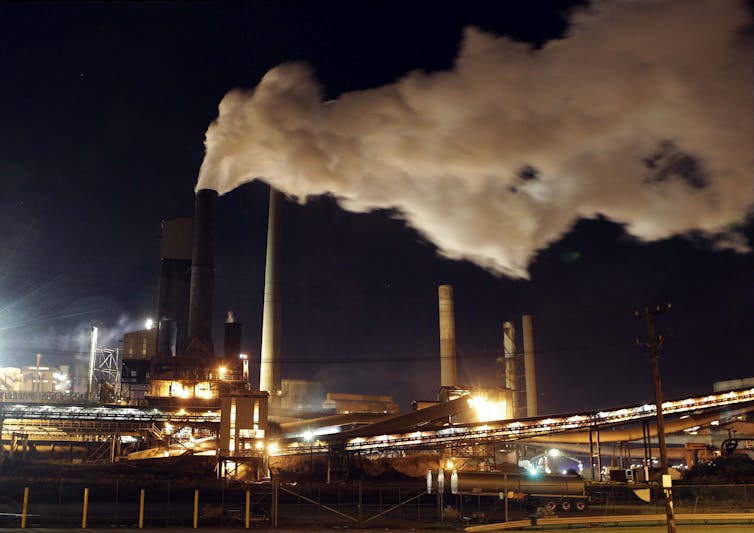
A Big Role For Offsets
Emissions baselines under the safeguards mechanism will decline by nearly 5% each year. The resulting net emissions by facilities under the scheme is estimated to decline from the current 143 million tonnes of carbon dioxide-equivalent to 100 million tonnes in 2030. It is a suitably steep reduction rate, considering industry emissions have been slowly rising.
But facilities will be allowed to emit above the declining baselines, if they offset the excess by buying Australian Carbon Credit Units (ACCUs). These carbon credits are generated by projects in agriculture, forestry and land use. The idea is that emissions reductions that cannot be achieved in industry will be achieved in the land sector and paid for by industry.
There is no limit on how many offset credits industry can use to comply with their baselines. This is unusual for carbon trading schemes internationally. It provides maximum flexibility but also makes for a vulnerability. It is possible that a sizeable share of the overall targeted emissions reductions will come from offset credits.
Australia’s carbon credit system has been accused of not delivering genuine reductions in greenhouses gas emissions in some cases. For example, some offset projects might be granted credits for outcomes such as native vegetation growth that might have happened anyway.
The carbon credit scheme will be tightened following the recommendations of the Chubb review. But doubts will unavoidably remain about whether all credits represent real emissions reductions.
The revised safeguard mechanism will create new demand from industry for offset credits. This will encourage new offset projects, possibly at higher prices.
Nevertheless the ACCU mechanism invariably excludes many emissions reduction options. Additional policy efforts to cut emissions in agriculture and forestry will be needed – as well as in transport, the building sector and electricity.
The Future Of Coal And Gas
The Greens had sought a ban on new coal and gas projects in exchange for supporting the safeguard mechanism bill. So will the policy achieve this? No, though it will make the investment case harder for some fossil fuel projects.
For coal and gas production projects, the mechanism applies only to emissions that arise during the mining of coal and the extraction and processing of gas. It does not apply to the emissions produced when the fuel is burnt for energy, except when the fuel is used by another facility under the mechanism.
So the policy will create a financial disincentive for fossil fuel projects that produce a lot of emissions on site – for example, gassy coal mines and leaky gas extraction. But it does not penalise the fact that fossil fuel is produced.
So what about the amendments negotiated by the Greens – in particular, the “hard cap” on emissions? It means total emissions covered by the mechanism must, by law, fall over time, assessed over rolling five-year periods. The minister will need to be satisfied that the overall emissions objective in the legislation will be met, and may need to change the rules in future if needed.
This is a kind of safeguard on the safeguard mechanism. But it does not amount to a stop to new coal mining and gas production. It will only tend to limit new coal mines and gas fields that have high production emissions – and these face financial disincentives under the safeguards mechanism anyway.
In any case, expansion of coal and gas production is unlikely. Coal demand will decline sharply in Australia as coal power plants get replaced by wind and solar, and the international coal demand outlook is declining. No expansion of Australia’s gas export industry is on the cards; the question is mostly about replacing gas fields that run out.
A question remains how to prepare for the inevitable long-term demise of fossil fuel industries, including whether Australia should in some way constrain fossil fuel production for export. The safeguard mechanism, however, is not the policy to deal with that.
Looking Ahead
The safeguard mechanism will create strong incentives for large industrial emitters to cut emissions. It lays the foundations for a cleaner and more efficient industry sector in Australia.
It positions Australia for future international industrial competitiveness. It will help avoid trade penalties for imports from countries without a comparable carbon policy. It will give advantage to low-emissions production – the only kind viable in a world that acts on climate change.
The safeguard mechanism may also pave the way for carbon pricing beyond the industry sector – possibly with money flowing to government, rather than as a revenue-neutral scheme. More federal level policy effort will be needed right across the economy to complete Australia’s transition to net-zero emissions.![]()
Frank Jotzo, Professor, Crawford School of Public Policy and Head of Energy, Institute for Climate Energy and Disaster Solutions, Australian National University
This article is republished from The Conversation under a Creative Commons license. Read the original article.
Why Western Sydney is feeling the heat from climate change more than the rest of the city
Milton Speer, University of Technology Sydney; Anjali Gupta, University of Technology Sydney; Joanna Wang, University of Technology Sydney; Joshua Hartigan, University of Technology Sydney, and Lance M Leslie, University of Technology SydneyGlobal warming has led to higher summer temperatures across Sydney over the past 30 years. However, our data analysis shows very hot summer days are becoming much more common in Western Sydney than in coastal Sydney. These hotter summers are also getting longer.
Although January and February are usually the warmest months, Greater Sydney summers now extend from December to March. For example, the city’s record-setting March has been the hottest month this summer. Summers are expanding and winters shrinking across subtropical and temperate Australia.
Our newly published analysis of temperature data from 1962-2021 shows one in ten days in summer reached temperatures of 35.4℃ or more in Western Sydney. That’s a full 5℃ hotter than near the coast, where one in ten days exceeded 30.4℃. One in 20 days reached 37.8℃ or more in the west – the equivalent figure near the coast was 33.6℃.
Furthermore, very hot days have become more common over the past 30 years in Western Sydney, but not near the coast. The difference in maximum temperatures between the regions can be as much as 10℃.
So what explains the startling difference between two parts of the same city? In our research, we show the influence of four climate drivers: El Niño-La Niña, Southern Annular Mode, global temperatures and local Tasman Sea temperatures.
Extreme Heat Is Getting Worse In The West
In our study, we calculated the threshold values for the top 10% and top 5% of summer maximum temperatures (the 90th and 95th percentiles) recorded for coastal Sydney (at Observatory Hill) and Western Sydney (at Richmond, about 50km to the north-west) over the 60 years from 1962-2021.
Comparing the first 30-year period, 1962-1991, to the second 30-year period, 1992-2021, revealed a stark difference in maximum temperature trends in Sydney’s west and nearer the coast.
In Richmond, the number of days with temperatures above 35.4℃ and 37.8℃ increased by 120 days and 64 days, respectively. In contrast, Observatory Hill recorded decreases of 4 and 52 days in days above the 90th and 95th percentiles (over 30.4℃ and 33.6℃).
What Explains These Differences?
Poorly planned development in the west and its distance from coastal sea breezes explains part of the disparity between inland and coastal Sydney. But we also found the increase in extreme heat in Western Sydney is due to Australian climate drivers being amplified by increased global and Tasman Sea temperatures.
Using machine-learning techniques, we were able to attribute temperature differences to the influences of these climate drivers and their interactions with each other. The results show common, highly influential climate drivers for both regions:
the Niño3.4, (an indicator of sea-surface temperatures in the tropical central Pacific Ocean, which drive El Niño and La Niña events)
the Indian Ocean Dipole (the difference in ocean temperatures between the eastern and western sides of the Indian Ocean)
the combination of the Southern Annular Mode (the movement of winds and weather systems to Australia’s south) with the Southern Oscillation (large-scale changes in sea-level air pressure between Tahiti and Darwin)
the combination of global temperature with the Southern Annular Mode.
Tasman Sea and global sea surface temperatures have had far more influence on coastal Sydney than on inland Western Sydney.
Despite the importance of rising temperatures in Sydney and particularly in Western Sydney, there has been little focus on their links with large-scale climate drivers. Our findings underline the worsening situation in Western Sydney compared with coastal Sydney.
Studies that employ machine-learning techniques or comparative analyses are typically done in regions of smaller populations. Western Sydney is home to more than 2.5 million people.
Its economic development and fast-growing population have led to higher concentrations of buildings and man-made surfaces, which absorb and retain more heat. Known as the urban heat island effect, it compounds the impacts of climate change. Development on this scale also presents complex challenges for policy planning and resource management.
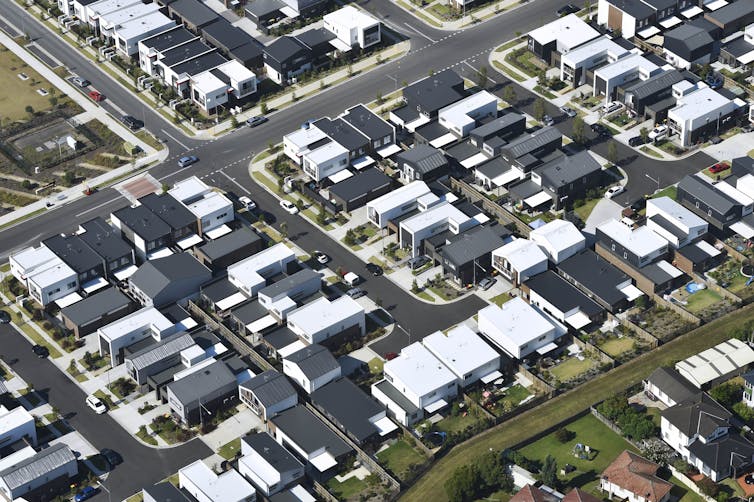
What Does This Mean For The People Of Western Sydney?
Identifying the climate drivers that most influence maximum temperatures is crucial for Sydney’s planning. It matters for infrastructure development, health and socioeconomic wellbeing in Western Sydney in particular.
Two-thirds of Sydney’s population growth by 2036 is projected to be in Western Sydney. By then an estimated 3.5 million residents will be exposed to more extreme summer heat.
The escalating climate crisis is widening Sydney’s health and socioeconomic divide. Western Sydney has higher unemployment and a larger proportion of lower-income families than the rest of the city.
It’s imperative to understand how Western Sydney differs from near-coastal Sydney, and to plan accordingly. Some local councils in the west, such as Blacktown, are already trialling heat refuges to reduce the growing risks for residents.
Longer and more intense summers are driving longer heatwaves and droughts. It’s leading to more bushfires of greater intensity, such as the 2019-20 bushfires.
The economic burden of dealing with these disastrous events is increasing. According to the Climate Council, the costs associated with extreme weather events in Australia have more than doubled since the 1970s. Australians are now five times more likely to be displaced by such events than people living in Europe.
The urban heat island effect already permeates Western Sydney. Recent extreme temperatures have been close to the limits of human endurance. The human body’s ability to cool itself declines above 35℃, especially in humid conditions.
The impacts of more frequent extreme heat, compounded by heat island effects, are greatest for vulnerable populations such as children in classrooms without air conditioning or low-income family households. Their situation is in stark contrast to the experience of residents of cooler coastal areas. ![]()
Milton Speer, Visiting Fellow, School of Mathematical and Physical Sciences, University of Technology Sydney; Anjali Gupta, Lecturer, School of Mathematical and Physical Sciences, and Researcher, Centre for Forensic Science, University of Technology Sydney; Joanna Wang, Senior Lecturer, School of Mathematics and Physical Sciences, University of Technology Sydney; Joshua Hartigan, PhD Candidate, School of Mathematical and Physical Sciences, University of Technology Sydney, and Lance M Leslie, Professor, School of Mathematical And Physical Sciences, University of Technology Sydney
This article is republished from The Conversation under a Creative Commons license. Read the original article.
2022 was a good year for nature in Australia – but three nasty problems remain
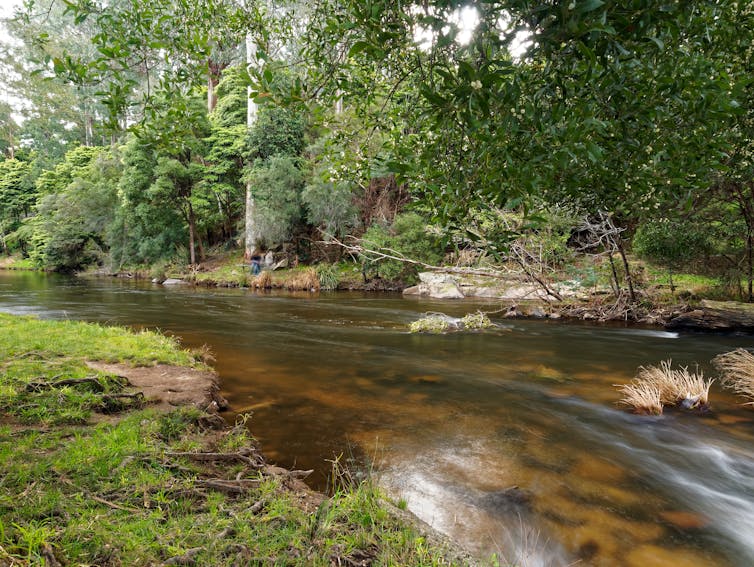
A new report card on Australia’s environment reveals 2022 was a bumper year for our rivers and vegetation – but it wasn’t enough to reverse the long-term decline in plant and animal species.
The analysis was drawn from many millions of measurements of weather, biodiversity, water availability, river flows and the condition of soil and vegetation. The data is gathered from satellites and field stations and processed by a supercomputer.
From the data, we calculate a score between 0 and 10 to determine the overall condition of Australia’s environment.
In 2022, a third and very wet La Niña year brought a strong improvement in several key indicators, leading to a national score of 8.7 out of 10. This is the best score since 2011. But unfortunately, three wicked problems remain.
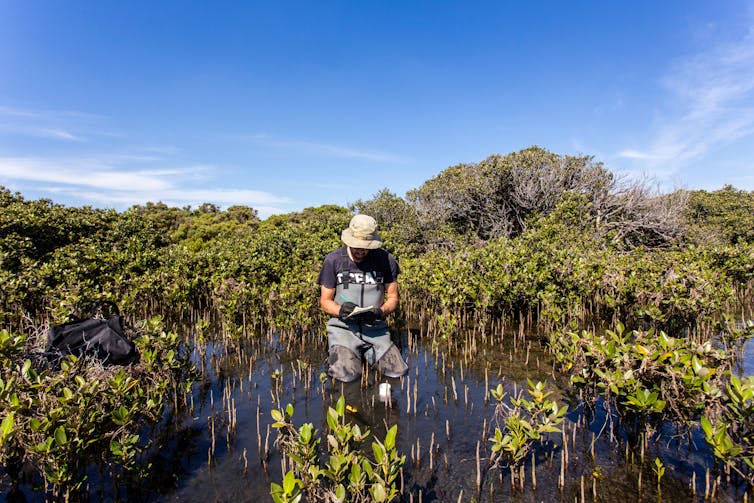
First, The Good News
By some measures, 2022 was the best year for water availability and plant growth since our national score system began 23 years ago.
New South Wales, Victoria and the ACT enjoyed the highest environmental scores since before 2000. South Australia and Queensland also improved.
Scores for rainfall, river flows and the extent of floodplain inundation were the highest since before 2000 in many parts of eastern Australia. The water supplies of all eastern capital cities all rose and several reached capacity.
Wetland area and waterbird breeding were well above the long-term average. Vegetation density, growth rates and tree cover in NSW and Queensland were the best since before 2000.
It was a bumper year for dryland farmers. Average national growth rates in dryland cropping were a massive 49% better than average conditions. The many full or filling reservoirs are also good news for irrigators.
What About The Losers?
Some regions missed out on the rainfall bonanza, and many environmental indicators declined. They include the Top End in the Northern Territory, southern inland Western Australia and western Tasmania.
Across the NT, low rainfall and high temperatures meant environmental scores once more declined to the low values seen before 2021.
And in areas where rainfall was high, not everyone benefited. Many homes and businesses flooded, and some farmers lost crops or stock.
At the end of 2022, reports emerged that floodwaters were causing so-called “blackwater events” and fish kills in the Murray River. Murky floodwaters also ran into the ocean and smothered seagrass meadows, leading dugongs and sea turtles to starve.
The ocean around Australia was the warmest on record in 2022. The Great Barrier Reef suffered the fourth mass bleaching event in seven years – and alarmingly, the first to occur during a La Niña year, which is usually cooler.
Fortunately, conditions for the remainder of the year favoured coral recovery.
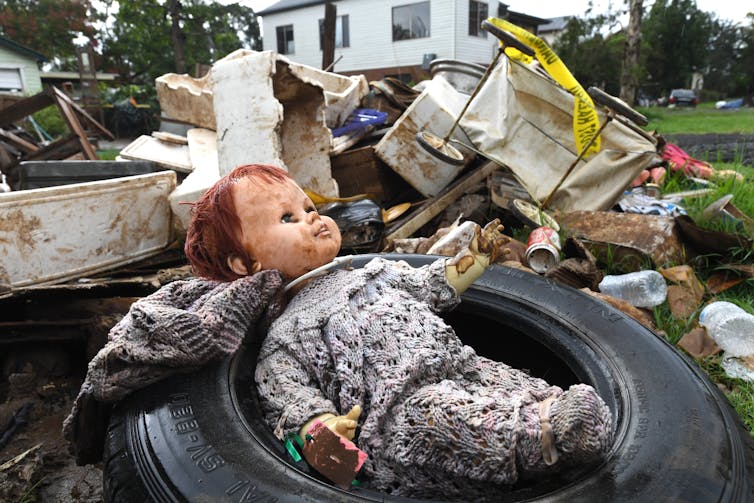
Chronic Ailments
Despite many positive indicators, three severe, chronic and untreated problems continue to weaken our environment: habitat destruction, invasive species and climate change.
The rate of habitat destruction shows little sign of improvement. Much vegetation continues to be removed for new housing, mining and agriculture. Fire activity in 2022 was low, but climate change means bushfires will be back soon, and become more frequent and severe over time.
La Niña is already on the way out, although it will probably take more than one hot and dry year before we experience megafires such as those in the Black Summer of 2019-20.
The scorecard also shows Australia is still struggling to combat pest species. They include fungi, invasive weeds, carp, cane toads, rats, rabbits, goats, pigs, foxes and cats. Every year, about eight million feral cats and foxes kill 1.5 billion native reptiles, birds and mammals.
Climate change remains a huge problem. La Niña normally brings cool conditions and the average temperature last year in Australia was the coolest since 2012. But it was still relatively warm, at 0.5℃ above the long-term average.
The combination of habitat destruction, invasive species and climate change has already decimated many Australian species. In 2022, 30 plants and animals were added to the official list of threatened species.
That’s a 43% increase since 2000, bringing the total number to 1,973. Most species added last year were affected by the Black Summer fires.
Our analysis drew on the Threatened Species Index, which reports with a three-year time lag. In 2019 the index showed a steady decline of about 3% in the abundance of threatened species each year. This is an overall decline of 62% since 2000.
Threatened plants showed the worst decline (72%), followed by birds (62%) and mammals (33%).
We Can Avoid The Worst
Amid the gloom, there are glimmers of hope. Many species feared impacted by the fires proved resilient. Some large new national park areas have been added. Active management is recovering – or at least slowing – the decline of some threatened species, albeit sometimes within the narrow confines of reserves.
Also in 2022, humpback whales were one of the few species in Australian history to be taken off the threatened species list due to a population increase. The species has staged a remarkable recovery since the global moratorium on whaling.
Sadly, there is no fast solution to climate change. Greenhouse gases will linger in the atmosphere for decades to come and further warming is unavoidable. But we can still prevent worse outcomes, by dramatically curbing global emissions.
Australia’s emissions are not falling anywhere near fast enough. They were almost the same in 2022 as in the previous year. And our national emissions remain among the highest in the world per person.
Decisive action is needed. Slowing down habitat destruction, invasive species and climate change is key to preserving our natural resources and species for future generations. ![]()
Albert Van Dijk, Professor, Water and Landscape Dynamics, Fenner School of Environment & Society, Australian National University; Geoff Heard, , The University of Queensland; Mark Grant, Ecosystem Science Programs Lead, Terrestrial Ecosystem Research Network, The University of Queensland, and Shoshana Rapley, Research assistant, Australian National University
This article is republished from The Conversation under a Creative Commons license. Read the original article.
Torrents of Antarctic meltwater are slowing the currents that drive our vital ocean ‘overturning’ – and threaten its collapse
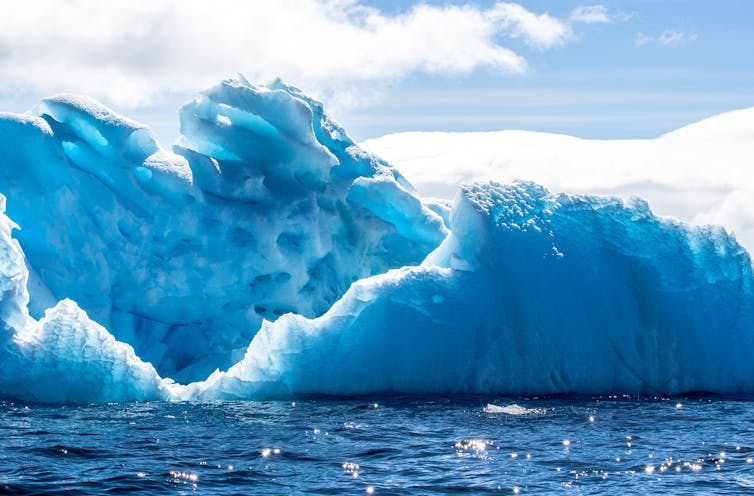
Off the coast of Antarctica, trillions of tonnes of cold salty water sink to great depths. As the water sinks, it drives the deepest flows of the “overturning” circulation – a network of strong currents spanning the world’s oceans. The overturning circulation carries heat, carbon, oxygen and nutrients around the globe, and fundamentally influences climate, sea level and the productivity of marine ecosystems.
But there are worrying signs these currents are slowing down. They may even collapse. If this happens, it would deprive the deep ocean of oxygen, limit the return of nutrients back to the sea surface, and potentially cause further melt back of ice as water near the ice shelves warms in response. There would be major global ramifications for ocean ecosystems, climate, and sea-level rise.
Our new research, published today in the journal Nature, uses new ocean model projections to look at changes in the deep ocean out to the year 2050. Our projections show a slowing of the Antarctic overturning circulation and deep ocean warming over the next few decades. Physical measurements confirm these changes are already well underway.
Climate change is to blame. As Antarctica melts, more freshwater flows into the oceans. This disrupts the sinking of cold, salty, oxygen-rich water to the bottom of the ocean. From there this water normally spreads northwards to ventilate the far reaches of the deep Indian, Pacific and Atlantic Oceans. But that could all come to an end soon. In our lifetimes.
Why Does This Matter?
As part of this overturning, about 250 trillion tonnes of icy cold Antarctic surface water sinks to the ocean abyss each year. The sinking near Antarctica is balanced by upwelling at other latitudes. The resulting overturning circulation carries oxygen to the deep ocean and eventually returns nutrients to the sea surface, where they are available to support marine life.
If the Antarctic overturning slows down, nutrient-rich seawater will build up on the seafloor, five kilometres below the surface. These nutrients will be lost to marine ecosystems at or near the surface, damaging fisheries.
Changes in the overturning circulation could also mean more heat gets to the ice, particularly around West Antarctica, the area with the greatest rate of ice mass loss over the past few decades. This would accelerate global sea-level rise.
An overturning slowdown would also reduce the ocean’s ability to take up carbon dioxide, leaving more greenhouse gas emissions in the atmosphere. And more greenhouse gases means more warming, making matters worse.
Meltwater-induced weakening of the Antarctic overturning circulation could also shift tropical rainfall bands around a thousand kilometres to the north.
Put simply, a slowing or collapse of the overturning circulation would change our climate and marine environment in profound and potentially irreversible ways.
Signs Of Worrying Change
The remote reaches of the oceans that surround Antarctica are some of the toughest regions to plan and undertake field campaigns. Voyages are long, weather can be brutal, and sea ice limits access for much of the year.
This means there are few measurements to track how the Antarctic margin is changing. But where sufficient data exist, we can see clear signs of increased transport of warm waters toward Antarctica, which in turn causes ice melt at key locations.
Indeed, the signs of melting around the edges of Antarctica are very clear, with increasingly large volumes of freshwater flowing into the ocean and making nearby waters less salty and therefore less dense. And that’s all that’s needed to slow the overturning circulation. Denser water sinks, lighter water does not.
How Did We Find This Out?
Apart from sparse measurements, incomplete models have limited our understanding of ocean circulation around Antarctica.
For example, the latest set of global coupled model projections analysed by the Intergovernmental Panel on Climate Change exhibit biases in the region. This limits the ability of these models in projecting the future fate of the Antarctic overturning circulation.
To explore future changes, we took a high resolution global ocean model that realistically represents the formation and sinking of dense water near Antarctica.
We ran three different experiments, one where conditions remained unchanged from the 1990s; a second forced by projected changes in temperature and wind; and a third run also including projected changes in meltwater from Antarctica and Greenland.
In this way we could separate the effects of changes in winds and warming, from changes due to ice melt.
The findings were striking. The model projects the overturning circulation around Antarctica will slow by more than 40% over the next three decades, driven almost entirely by pulses of meltwater.
Over the same period, our modelling also predicts a 20% weakening of the famous North Atlantic overturning circulation which keeps Europe’s climate mild. Both changes would dramatically reduce the renewal and overturning of the ocean interior.
We’ve long known the North Atlantic overturning currents are vulnerable, with observations suggesting a slowdown is already well underway, and projections of a tipping point coming soon. Our results suggest Antarctica looks poised to match its northern hemisphere counterpart – and then some.
What Next?
Much of the abyssal ocean has warmed in recent decades, with the most rapid trends detected near Antarctica, in a pattern very similar to our model simulations.
Our projections extend out only to 2050. Beyond 2050, in the absence of strong emissions reductions, the climate will continue to warm and the ice sheets will continue to melt. If so, we anticipate the Southern Ocean overturning will continue to slow to the end of the century and beyond.
The projected slowdown of Antarctic overturning is a direct response to input of freshwater from melting ice. Meltwater flows are directly linked to how much the planet warms, which in turn depends on the greenhouse gases we emit.
Our study shows continuing ice melt will not only raise sea-levels, but also change the massive overturning circulation currents which can drive further ice melt and hence more sea level rise, and damage climate and ecosystems worldwide. It’s yet another reason to address the climate crisis – and fast.![]()
Matthew England, Scientia Professor and Deputy Director of the ARC Australian Centre for Excellence in Antarctic Science (ACEAS), UNSW Sydney; Adele Morrison, Research Fellow, Australian National University; Andy Hogg, Professor, Australian National University; Qian Li, , Massachusetts Institute of Technology (MIT), and Steve Rintoul, CSIRO Fellow, CSIRO
This article is republished from The Conversation under a Creative Commons license. Read the original article.
Indigenous knowledge offers solutions, but its use must be based on meaningful collaboration with Indigenous communities
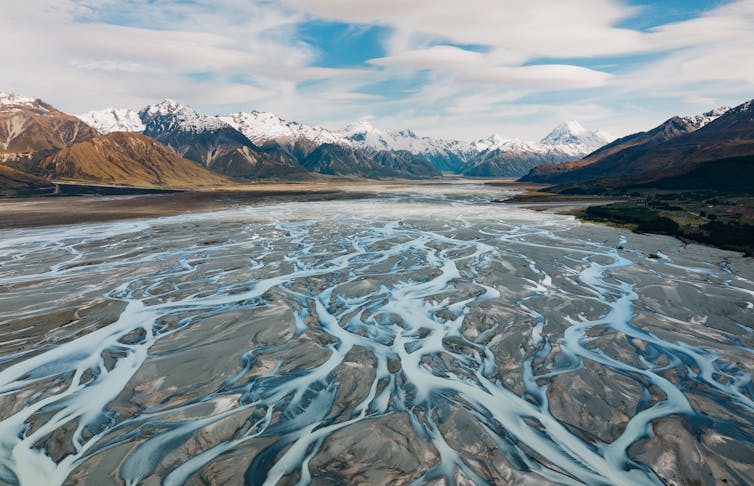
As global environmental challenges grow, people and societies are increasingly looking to Indigenous knowledge for solutions.
Indigenous knowledge is particularly appealing for addressing climate change because it includes long histories and guidance on how to live with, and as part of, nature. It is also based on a holistic understanding of interactions between living and non-living aspects of the environment.
However, without meaningful collaborations with Indigenous communities, the use of Indigenous knowledge can be tokenistic, extractive and harmful.
Our newly published work explores the concept of kaitiakitanga. This is often translated as guardianship, stewardship or the “principle and practices of inter-generational sustainability”.
We want to encourage Western-trained scientists to work in partnership with Māori and meaningfully acknowledge Māori values and knowledge in their work in conservation and resource management.
Kaitiakitanga Is More Than Guardianship
Indigenous knowledge includes innovations, observations, and oral and written histories that have been developed by Indigenous peoples across the world for millennia.
This knowledge is living, dynamic and evolving. In Aotearoa New Zealand, mātauranga Māori is the distinct knowledge developed by Māori. It includes culture, values and world view.
The concept of kaitiakitanga is often (mis)used in the context of conservation and resource management in Aotearoa. In our work, we highlight how kaitiakitanga is inherently linked to other concepts. It is difficult to translate these concepts directly but they include tikanga (Māori customs), whakapapa (genealogy), rangatiratanga (sovereignty) and much more.
One of the key conceptual differences between kaitiakitanga and conservation is that for kaitiakitanga, we consider being part of te taiao (the environment) and manage our relationships accordingly. Conservation is characterised by humans managing the environment as if they were separate from it.
The Honourable Justice Joe Williams describes kaitiakitanga as “the obligation to care for one’s own”, indicating the intrinsic link between people and the environment.
We caution against simplistic definitions of kaitiakitanga. They often divorce it from its cultural context. Simplistic definitions reduce the richness of the concept and also fail to recognise the differences in how kaitiakitanga is conceptualised and practised.
Instead, we encourage Western-trained researchers to gain a deeper understanding of concepts that underpin kaitiakitanga and work with mana whenua to further develop understanding.
Kaitiakitanga And Conservation In Practice
There is a growing number of examples of successful collaborations between mana whenua and researchers. Exploring these projects will allow researchers to gain insights into how to contribute in an effective and respectful way.
For instance, a study of the traditional harvest and management of sooty shearwater in the Marlborough Sounds shows the importance of including cultural harvest in species conservation management.
Similarly, putting Indigenous knowledge at the centre of the translocation of rare species improves conservation outcomes.
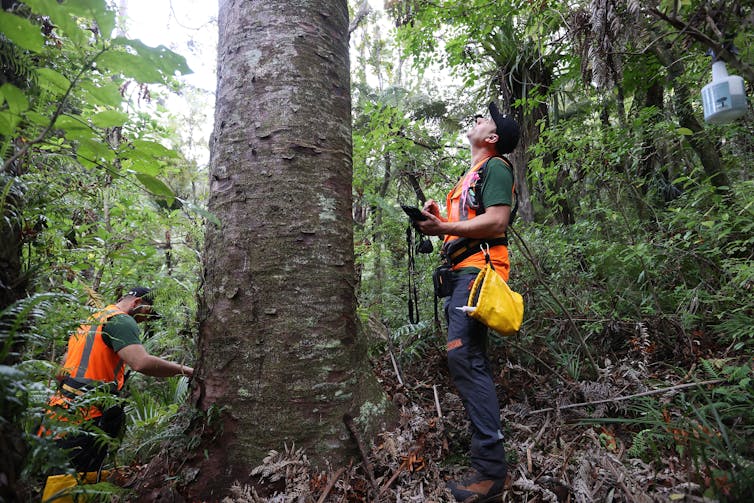
Rāhui In Conservation
Rāhui is a customary process that can be used by mana whenua to restrict access to a certain resource or area of land to allow recovery. It includes an holistic understanding of the environmental problem, and social and political control.
Rāhui has been used to reduce the spread of kauri dieback disease in the Waitakere Ranges. It has also been used to protect kaimoana (including scallops, mussels, crayfish and pāua) on Waiheke Island.
Other examples include rāhui covering forests, lakes, beaches and marine areas for durations from days to decades. Rāhui are widely used but highly specific to local conditions. For iwi to be able to implement rāhui, they need to have rangatiratanga, as kaitiakitanga is both an affirmation and manifestation of rangatiratanga.
An Effective Way Forward
Empowering Māori researchers and communities is central to worthwhile collaborations. We encourage non-Māori researchers to approach partnership with an awareness of the limits of their training and knowledge.
Embracing a mindset of intellectual humility will more likely create conditions for meaningful co-created work. While establishing and maintaining collaborations can be time-consuming, our collective experience is that taking time to develop trust and understanding is essential for successful outcomes.
We hope our work will provide some inspiration and guidance for established practitioners and students alike.
There are a number of other examples of how mātauranga and ecology can work together. The New Zealand Journal of Marine and Freshwater Research has dedicated a special issue to mātauranga Māori and how it is shaping marine conservation. Others have explored how respectful collaborations can support better teaching of science and better research outcomes.![]()
Tara McAllister, Research Fellow, Te Herenga Waka — Victoria University of Wellington; Cate Macinnis-Ng, Associate Professor in Biological Sciences, University of Auckland, and Dan C H Hikuroa, Senior Lecturer in Māori Studies, University of Auckland
This article is republished from The Conversation under a Creative Commons license. Read the original article.
What can’t bees do? Unique study of urban beehives reveals the secrets of several cities around the world
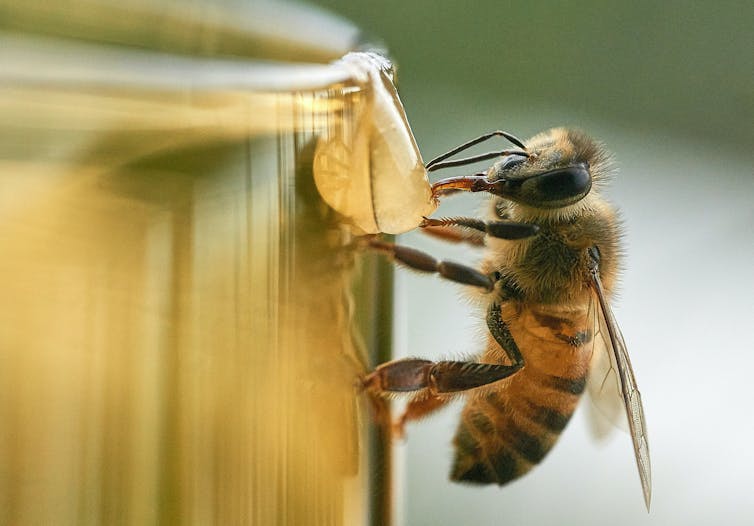
Bees provide myriad benefits to humanity, including pollination services, honey production, food security and crop pollination, artistic inspiration and even career opportunities.
But what if bees could also provide insights into human and city health? A new study published today in Environmental Microbiome shows how honeybee hives reveal information about human health, pathogens, plant life and the environment of different cities.
Our Living Cities
The United Nations predicts nearly 70% of the human population will reside in cities by 2050.
While cities are planned and built with humans in mind, they also act as complex, adaptive ecosystems hosting a diversity of other living organisms. Human health and wellbeing in urban areas can be affected by our interactions with the many invisible things we share our cities with.
It is therefore important to understand what biotic (living organisms such as plants, animals, and bacteria) and abiotic (non-living components such as soil, water and the atmosphere) parts make up our cities. However, to collect such samples from across the city, we need lots of volunteers, time and intensive labour.
Honeybee hives maintained by urban beekeepers could provide a new, more efficient way to sample the urban microbiome – a collection of the local microbes, such as bacteria, fungi, viruses, and their genes.
Honeybees As Collaborators
Honeybees often live in hives of 60,000–80,000 individuals. When a bee reaches a certain age in the hive (roughly 21 days), they become a forager. Foragers leave the hive in search of nectar, pollen and other resources.
Researchers enlisted the help of honeybees as data collectors in five cities: New York in the United States, Tokyo in Japan, Venice in Italy, and Melbourne and Sydney. In urban areas, honeybee foragers typically travel approximately 1.5km from the hive to visit flowers.
During these flights they can interact with many biotic and abiotic components of the environment, carrying traces of these interactions back to the hive. In each city, the team took samples of one or more of the following: hive materials including honey, bee bodies, hive debris (accumulation of material under or at the bottom of the hive) and swabs of the hive itself.
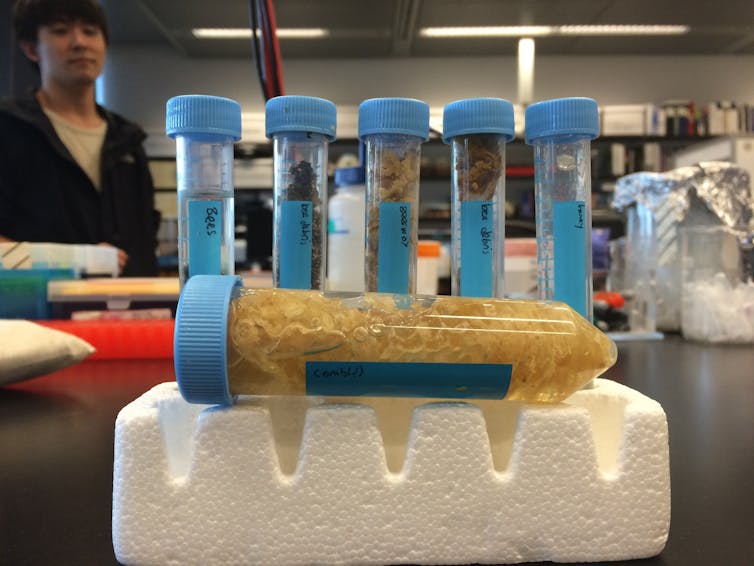
The ‘Genetic Signature’ Of A City
The researchers found some unexpected materials in the hives, alongside less surprising results. Hive materials showed plant DNA that varied between cities. In Melbourne, the sample was dominated by eucalyptus, while samples from Tokyo contained plant DNA from lotus and wild soybean, as well as the soy sauce fermenting yeast Zygosaccharomyces rouxii.
Samples from Venice were dominated by fungi related to wood rot and date palm DNA. The samples also contained bee-related microorganisms, indicating both healthy hives and hives with pathogens or parasites, such as Varroa destructor.
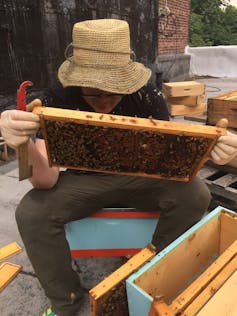
The more surprising discoveries included genetic data in the Sydney sample from a bacterial species that degrades rubber, Gordonia polyisoprenivorans. DNA from a pathogen spread to humans via cat fleas called Rickettsia felis was also found in samples, and showed up in Tokyo hives over time.
How Do We Interpret These Results?
The study offers a new and interesting use of honeybee hives in cities – the potential to monitor human health and urban pollution. However, there were some limitations to the work. The differences in microbiomes across cities were based on small sample sizes – one hive in Venice, three in New York, two in Melbourne, two in Sydney and 12 in Tokyo.
Due to these constraints, differences between cities could potentially be attributed to variation in hives and their genetics. Future work using longer-term studies with more hives would help to uncover whether the unique genetic signatures were due to differences amongst cities or between hives or even time periods.
The authors have suggested that honeybee hive debris could provide a snapshot of the microbial landscape of cities. In the future, they argue such methods could even help to monitor antibiotic resistance and the spread viral diseases, but much more sampling and validation will be needed to achieve these goals.![]()
Scarlett Howard, Lecturer, Monash University
This article is republished from The Conversation under a Creative Commons license. Read the original article.
Attention plant killers: new research shows your plants could be silently screaming at you
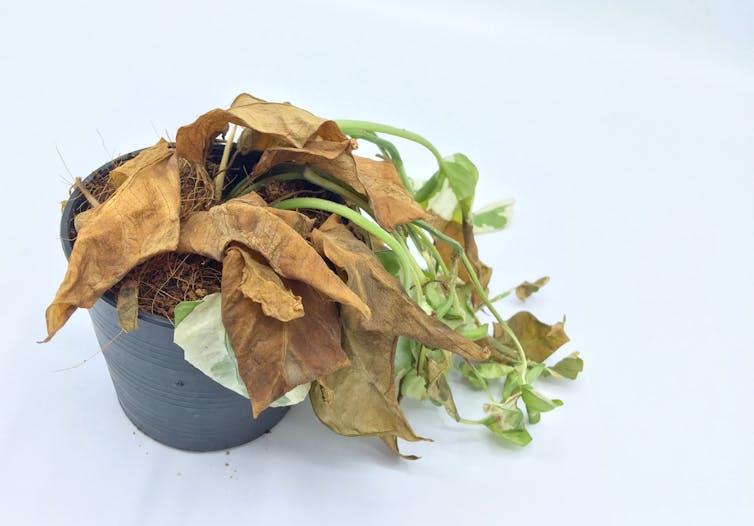
If you’re like me, you’ve managed to kill even the hardiest of indoor plants (yes, despite a doctorate in plant biology). But imagine a world where your plants actually told you exactly when they needed watering. This thought, as it turns out, may not be so silly after all.
You might be familiar with the growing body of work that provides evidence for plants being able to sense sounds around them. Now, new research suggests they can also generate airborne sounds in response to stress (such as from drought, or being cut).
A team led by experts at Tel Aviv University has shown tomato and tobacco plants, among others, not only make sounds, but do so loudly enough for other creatures to hear. Their findings, published today in the journal Cell, are helping us tune into the rich acoustic world of plants – one that plays out all round us, yet never quite within human earshot.
Plants Can Listen, But Now They Can Talk!
Plants are “sessile” organisms. They can’t run away from stressors such as herbivores or drought.
Instead, they’ve evolved complex biochemical responses and the ability to dynamically alter their growth (and regrow body parts) in response to environmental signals including light, gravity, temperature, touch, and volatile chemicals produced by surrounding organisms.
These signals help them maximise their growth and reproductive success, prepare for and resist stress, and form mutually beneficial relationships with other organisms such as fungi and bacteria.
In 2019, researchers showed the buzzing of bees can cause plants to produce sweeter nectar. Others have shown white noise played to Arabidopsis, a flowering plant in the mustard family, can trigger a drought response.
Now, a team led by Lilach Hadany, who also led the aforementioned bee-nectar study, has recorded airborne sounds produced by tomato and tobacco plants, and five other species (grapevine, henbit deadnettle, pincushion cactus, maize and wheat). These sounds were ultrasonic, in the range of 20-100 kilohertz, and therefore can’t be detected by human ears.
Stressed Plants Chatter More
To carry out their research, the team placed microphones 10cm from plant stems that were either exposed to drought (less than 5% soil moisture) or had been severed near the soil. They then compared the recorded sounds to those of unstressed plants, as well as empty pots, and found stressed plants emitted significantly more sounds than unstressed plants.
In a cool addition to their paper, they also included a soundbite of a recording, downsampled to an audible range and sped up. The result is a distinguishable “pop” sound.
The number of pops increased as drought stress increased (before starting to decline as the plant dried up). Moreover, the sounds could be detected from a distance of 3-5 metres – suggesting potential for long-range communication.
But What Actually Causes These Sounds?
While this remains unconfirmed, the team’s findings suggest that “cavitation” may be at least partially responsible for the sounds. Cavitation is the process through which air bubbles expand and burst inside a plant’s water-conducting tissue, or “xylem”. This explanation makes sense if we consider that drought stress and cutting will both alter the water dynamics in a plant stem.
Regardless of the mechanism, it seems the sounds produced by stressed plants were informative. Using machine learning algorithms, the researchers could distinguish not only which species produced the sound, but also what type of stress it was suffering from.

It remains to be seen whether and how these sound signals might be involved in plant-to-plant communication or plant-to-environment communication.
The research has so far failed to detect any sounds from the woody stems of woody species (which includes many tree species), although they could detect sounds from non-woody parts of a grapevine (a woody species).
What Could It Mean For Ecology, And Us?
It’s temping to speculate these airborne sounds could help plants communicate their stress more widely. Could this form of communication help plants, and perhaps wider ecosystems, adapt better to change?
Or perhaps the sounds are used by other organisms to detect a plant’s health status. Moths, for example, hear within the ultrasonic range and lay their eggs on leaves, as the researchers point out.
Then there’s the question of whether such findings could help with future food production. The global demand for food will only rise. Tailoring water use to target individual plants or sections of field making the most “noise” could help us more sustainably intensify production and minimise waste.
For me personally, if someone could give a microphone to my neglected veggie patch and have the notifications sent to my phone, that would be much appreciated! ![]()
Alice Hayward, Molecular Biologist, The University of Queensland
This article is republished from The Conversation under a Creative Commons license. Read the original article.
Is ‘climate anxiety’ a clinical diagnosis? Should it be?

Last week the Intergovernmental Panel on Climate Change, comprised of the world’s most esteemed climate experts, delivered its sixth report and “final warning” about the climate crisis. It outlined several mental health challenges associated with increasing temperatures, trauma from extreme events, and loss of livelihoods and culture.
The report followed news that the jail sentence for a climate protester who blocked the Sydney Harbour Bridge had been quashed by a judge, who noted she’d been diagnosed with climate anxiety.
But what is “climate anxiety”? Is it a normal emotional response to a real and imminent threat? Or is it a condition that could require clinical treatment?
A Sense Of Panic, Worry And Fear
As people become increasingly affected by climate-related events, many may find themselves feeling anxious, angry and sad about the state of the planet.
“Climate anxiety” describes a sense of panic, worry and fear towards the consequences and uncertainty brought by climate change. The term “climate anxiety” is sometimes used interchangeably with “eco-anxiety”, which some health professionals and researchers refer to as anxiety felt about wider ecological issues. Researchers suggest climate anxiety can be shaped by our environments. For example, the type of media we see about climate change, how the people around us feel, or how our communities and governments are responding.
Research shows climate anxiety is felt around the world, especially among young people.
However, climate anxiety is not officially recognised as a condition or a mental health disorder in the diagnostic manuals relied upon by psychologists, psychiatrists and other health professionals. In fact, many researchers and health professionals warn against medicalising this understandable and expected response.
Natural Responses To Danger
We know anxiety is an in-built natural reaction when we feel in danger. Such feelings prompt us to prepare for and reduce threats to our wellbeing and safety.
For example, anxiety might help us when we encounter an animal in the wild, but it can also help us prepare for a difficult exam.
The findings of the latest climate report indicate humans have a lot to prepare for and act on, if we are to reduce the threats of climate change. To some extent, humans need to experience some levels of climate anxiety in order to prompt the changes that we need for a sustainable future.
But anxiety can become overwhelming and appropriately diagnosed as a clinical anxiety disorder. In the Diagnostic and Statistical Manual of Mental Health Disorders (DSM-5), anxiety disorders are marked by anxiety that is persistent, excessive and usually out of proportion to the threat.
Research shows climate anxiety can affect people’s ability to go to work or study, concentrate, sleep, or even enjoy time with their friends and family.
The challenge for health professionals is whether climate anxiety can be deemed persistent or excessive, given the nature of climate change. Whether or not climate anxiety is currently seen as a clinical diagnosis, there is a clear need to support the people that experience it.
Channelling Climate Anxiety For Good
While climate anxiety can have a negative impact on mental wellbeing, research findings from 32 countries have shown that some people may be channelling their climate anxiety in ways to help the environment, such as through pro-environmental behaviours and environmental activism, such as climate protests.
Australian data shows experiencing “eco-anger” – which refers to anger or frustration about ecological issues – leads to better mental health outcomes and is a key adaptive emotional driver of engagement with the climate crisis.
But more intense experiences of frustration and anger in relation to climate change are associated with greater attempts to take personal actions to address the issue. This suggests getting angry may help prompt some people to do something about climate change.

Staying Grounded
In the absence of official diagnoses or recognised treatments, collective action against climate change may therefore be an effective solution to climate anxiety.
And there are other things people can do to manage climate anxiety. While further research is needed to find the most effective strategies for climate anxiety, health professionals suggest:
- spending time in nature
- learning ways to ground yourself during distressing emotions
- seeking support
- taking breaks to prevent burnout
- taking small everyday actions for self-care.
Small actions to help the planet might also help foster feelings of agency and wellbeing.
When climate anxiety veers into overwhelming or unhelpful territory, seeking support from a “climate-aware” health professional can be an important step to take.
If this article has raised issues for you, or if you’re concerned about someone you know, call Lifeline on 13 11 14.![]()
Fiona Charlson, Conjoint NHMRC Early Career Fellow, The University of Queensland and Tara Crandon, Psychologist and PhD Student, QIMR Berghofer Medical Research Institute
This article is republished from The Conversation under a Creative Commons license. Read the original article.
Marsupials and other mammals separately evolved flight many times, and we are finally learning how
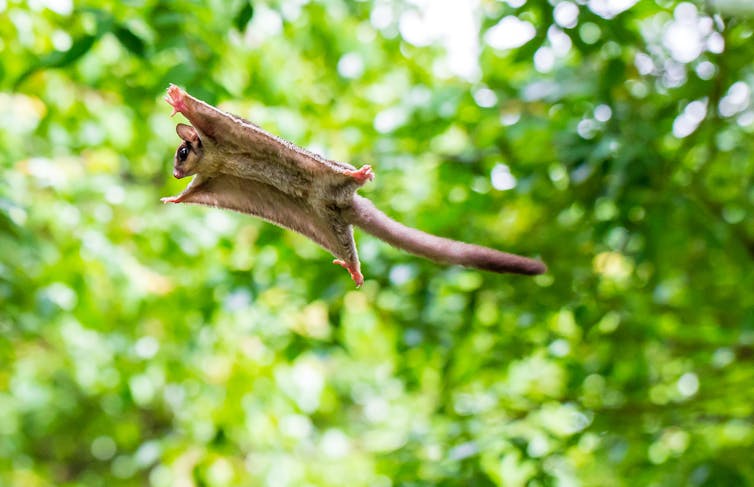
Shoot for the moon. Even if you miss, you’ll land on the next tree. Many groups of mammals seem to have taken this evolutionary advice to heart. According to our newly published paper in Science Advances, unrelated animals may even have used the same blueprints for building their “wings”.
While birds are the undisputed champions of the sky, having mastered flight during the Jurassic, mammals have actually evolved flight more often than birds. In fact, as many as seven different groups of mammals living today have taken to the air independently of each other.
These evolutionary experiments happened in animals scattered all across the mammalian family tree – including flying squirrels, marsupial possums and the colugo (cousin of the primates). But they all have something in common. It’s a special skin structure between their limbs called a patagium, or flight membrane.
The fact these similar structures have arisen so many times (a process called convergent evolution) hints that the genetic underpinnings of patagia might predate flight. Indeed, they could be shared by all mammals, even those living on the ground.
If this is true, studying patagia can help us to better understand the incredible adaptability of mammals. We might also discover previously unknown aspects of human genetics.
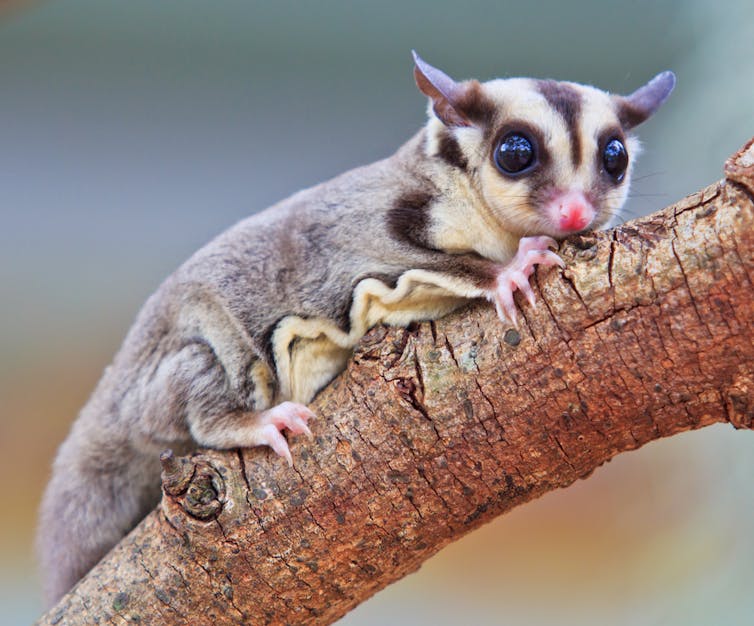
A Deceptively Simple Membrane
Despite being seemingly simple skin structures, patagia contain several tissues, including hair, a rich array of touch-sensitive neurons, connective tissue and even thin sheets of muscle. But in the earliest stages of formation, these membranes are dominated by the two main layers of the skin: the inner dermis and outer epidermis.
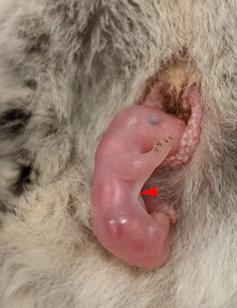
At first, they hardly differ from neighbouring skin. But at some point, the skin on the animal’s sides starts to rapidly change, or differentiate. The dermis undergoes a process called condensation, where cells bunch up and the tissue becomes very dense. Meanwhile, the epidermis thickens in a process called hyperplasia.
In some mammals, this differentiation happens when they are still an embryo in the uterus. Incredibly though, in our main model species – the marsupial sugar glider (Petaurus breviceps) – this process begins after birth, while they are in the mother’s pouch. This provides us with an incredible window into patagium formation.
Starting with the sugar glider, we examined the behaviours of thousands of genes active during the early development of the patagium, to try and figure out how this chain of events is kicked off.
From Gliders To Bats
We discovered that levels of a gene called Wnt5a are strongly correlated with the onset of those early skin changes – condensation and hyperplasia. Through a series of experiments involving cultured skin tissues and genetically engineered laboratory mice, we showed that adding extra Wnt5a was all it took to drive both of these early hallmarks of patagium formation.
Interestingly, when we extended our work to bats, we found extremely similar patterns of Wnt5a activity in their developing lateral patagia to that in sugar gliders. This was surprising, since bats (placental mammals) last shared a common ancestor with the marsupial sugar glider around 160 million years ago.
Perhaps even more remarkably, we found a nearly identical pattern in the outer ear (or pinna) of lab mice. The pinna is a nearly universal trait among mammals, including innumerable species with no flying ancestry.
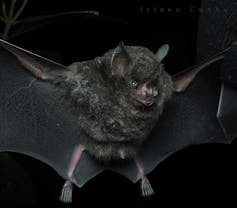
A Molecular Toolkit
Together, these results suggest something profound. Wnt5a’s role in ushering in the skin changes needed for a patagium likely evolved long before the first mammal ever took to the air.
Originally, the gene had nothing to do with flight, instead contributing to the development of seemingly unrelated traits. But because of shared ancestry, most living mammals today inherited this Wnt5a-driven program. When species like gliders and bats started on their separate journeys into the air, they did so with a common “molecular toolkit”.
Not only that, but this same toolkit is likely present in humans and working in ways we don’t fully understand yet.
There are definite limits to our recent work. First, we haven’t made a flying mouse. This may sound like a joke, but demonstrates we still don’t fully understand how a region of dense, thick skin becomes a thin and wide flight membrane. Many more genes with unknown roles are bound to be involved.
Second, while we’ve shown a cause-and-effect relationship between Wnt5a and patagium skin differentiation, we don’t know precisely how Wnt5a does it. Moving forward, we hope to fill in these gaps by broadening the horizons of our cross-species comparisons and by conducting more in-depth molecular studies on patagium formation in sugar gliders.
For now though, our study presents an exciting new view of flight in mammals. We may not be the strongest fliers, but trying is in our DNA.![]()
Charles Feigin, Postdoctoral Fellow in Genomics and Evolution, The University of Melbourne
This article is republished from The Conversation under a Creative Commons license. Read the original article.
A rare video of wombats having sex sideways offers a glimpse into the bizarre realm of animal reproduction
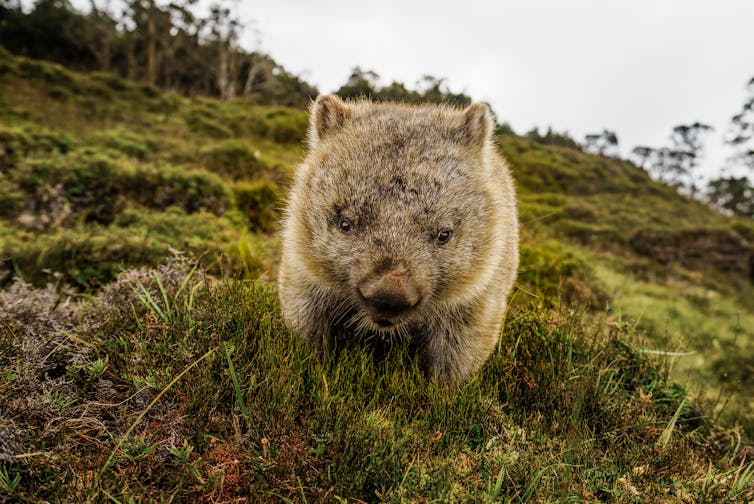
If you look at where wombats deposit their poo, you realise they must be able to perform some surprising acrobatics. It has always amazed me to see wombat scats on top of grass tussocks or logs, because I’ve always wondered how the stocky creatures must have manoeuvred themselves to put it there.
It turns out these sturdy marsupials also engage in a different kind of acrobatics: we recently received a video from Lyndell Giuliano and Andy Carnahan at Tomboye, New South Wales, who had filmed two wombats in the wild “doing the wild thing”!
While we know it happens, because there are baby wombats replenishing the population over time, it is not often humans get to witness such an event.
A Rare Sighting Of Above-Ground Intimacy
Scientists have previously documented wombat sex in some detail. Prior to the observations noted in the review, it was believed to occur underground in the privacy of the burrow, which was presumably the reason why it was rarely observed.
While we still don’t know a lot about what wombats do get up to underground, wombats have been spotted mating above ground in the open!
In this scenario, the male wombat has been described to chase the female wombat, often biting her, and pushing her on to her side, before also laying on his side and mating with her.
In this recorded “rom-com”, it appears only the male is on his side during mating.
Violence And Death
Other marsupials are also quite aggressive during mating. The Tasmanian devil, probably not unsurprisingly given its name, is particularly aggressive. Males drag females into their den and hold them captive, sometimes for days.
Among the tiny, rodent-like antechinus and phascogales, males are so determined to mate with as many females as they can that it results in a huge surge of stress hormones, leading to complete organ failure, and subsequently death.
This reproductive strategy, called “semelparity”, also occurs in salmon, and some frogs and lizards – but it is extremely rare among mammals.
And in the insect kingdom, it’s not unheard of for males to die after mating, though the reasons are often quite different.
Female praying mantises attract males and after the event decapitate their male companion and devour them. This cannibalism strategy enables females to produce more eggs. Males that are consumed are provided with a reproductive advantage through potentially increased numbers of offspring.
Male bees (drones) mate with females (queens) in the air. In some species, during the height of the “process”, the end of the male’s barbed endophallus is ejected from his body, and is retained with his sperm inside the queen. His work done, the male subsequently falls from the sky dead.
Subterfuge And Fusion
Many animals use pheromones, essentially chemical messengers between members of the same species.
Some orchids have taken advantage of these chemicals, mimicking the pheromones of female wasps. Male wasps are tricked into thinking they have found their female, and while mating with the flower, become coated in pollen. These wasps subsequently mate with another orchid, thus transferring the pollen, and subsequently the orchid is fertilised.
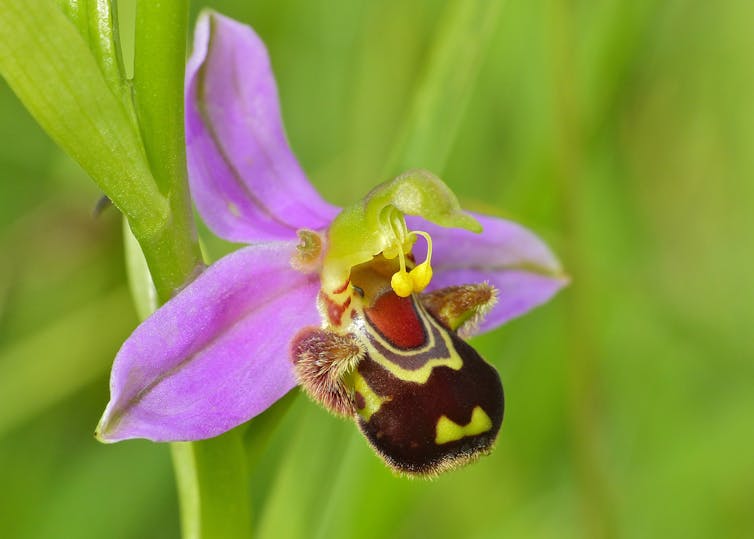
There are some even more bizarre mating encounters in the animal world. The female deep sea angler fish allows the male to fuse with her, and sometimes even more than one male will fuse to the same female.
In return for sperm, the male anglerfish obtains nutrients from the female via their fused circulatory system. A truly “until death do us part” relationship.
Survival Of The Quickest
Among marsupials, some species (polyprotodonts) give birth to many more young than they can support. These so-called “supernumerary” young then race to reach a teat first, in what is essentially survival of the fittest.
The maximum number of young able to survive is therefore determined by the maximum number of teats.
Virginian opossums have 13 teats and can give birth to up to 56 young (although the average is more like 21), thus many newborns die shortly after birth, unable to find and attach to a teat. Tasmanian devils likewise produce an average of 39 young, but only have four teats, thus the maximum surviving litter size for devils is four.
Wombats are not polyprotodonts and only have two teats. However they usually only have one joey at a time.
Surprising Organs
Much can be said for the phalluses of the animal world. None more so than echidna penises with their four heads, of which they only ever use two at a time.
Sharks likewise have two claspers, extensions of the pelvic fins which support internal fertilisation, of which they only utilise one during mating. Whale penises have been said to have been mistaken for deep sea monsters, or perhaps kraken tentacles, observed wrestling with their whale prey.
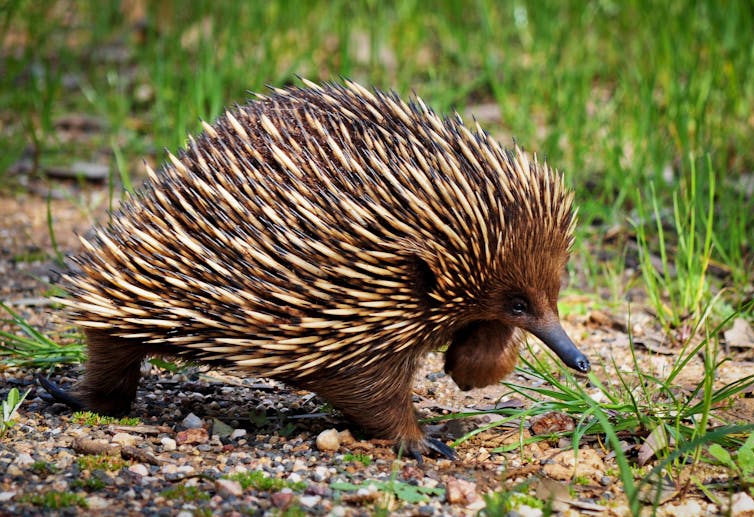
Not to be outdone by the males, female marsupials have three vaginas and two uteruses. Two of the three vaginas are used for reproduction to allow sperm to travel up to fertilise the eggs. The third vagina, located between the other two, is for giving birth.
Female platypuses and echidnas have two uteruses and two ovaries. However, in platypus, only the left ovary is functional, and thus they only use one side of their reproductive tract for producing young.
Back To The Wombats
As we have seen, there are a broad range of strategies animals use to produce young. Some reproductive strategies we are familiar with, others are deadly.
It puts the wombat video in perspective: our correspondents report the creatures walked away unharmed from the scenario, albeit with some love bites. At least everybody survived.![]()
Julie Old, Associate Professor, Biology, Zoology, Animal Science, Western Sydney University and Hayley Stannard, Senior lecturer, Charles Sturt University
This article is republished from The Conversation under a Creative Commons license. Read the original article.
I realised the fat-tailed dunnart was under threat. Here’s how I got the species officially listed
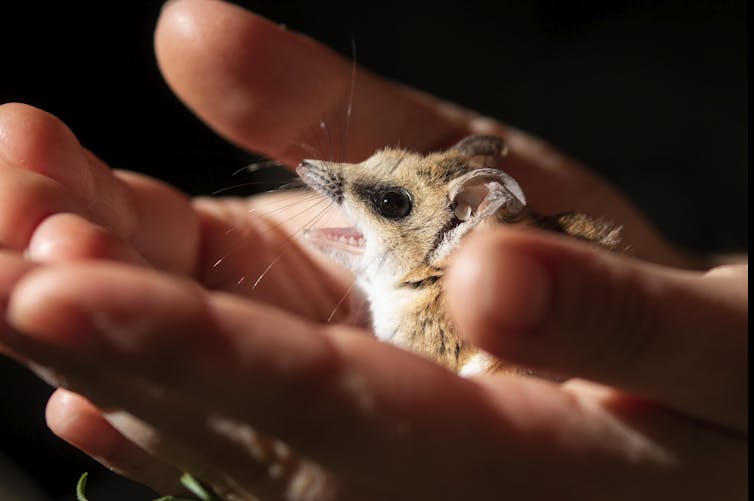
Saving endangered species is an uphill battle in Australia, the mammal extinction capital of the world. But the first step, threatened species listing, can be confusing, tedious and time-consuming.
To demystify the rigorous (yet arduous) process for listing threatened species, we describe the experience of listing fat-tailed dunnarts in Victoria.
This feisty little predator stores fat in its tail, much like a camel’s hump. For too long it was considered common, but evidence shows the species is in decline and needs help to recover.
Threatened species listing affords extra protection, but there are no guarantees. We need to keep the pressure on policy-makers and public servants to ensure our most vulnerable species receive the protection they deserve.
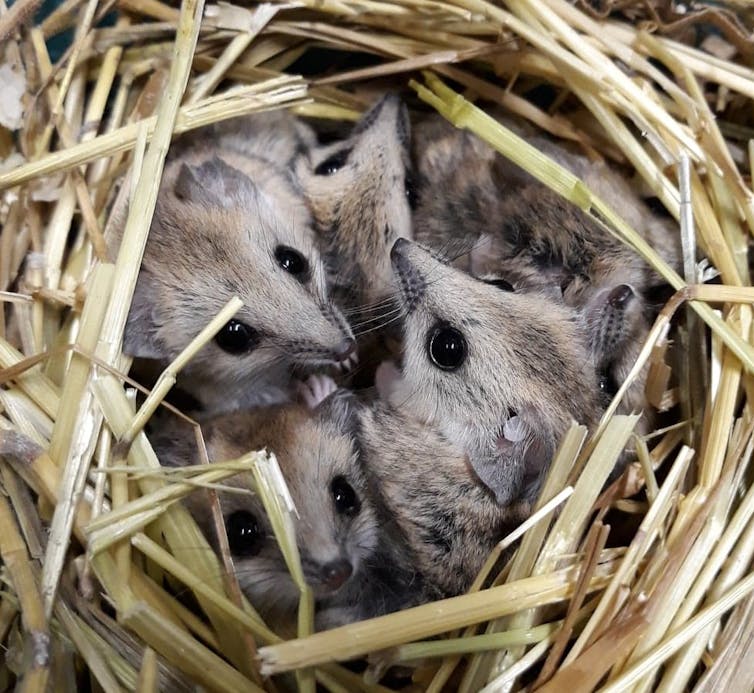
A Shameful Record Of Extinction
Australia has the highest mammal extinction rate in the world. We have lost 39 land mammals since European settlement. That’s a rate of about one to two mammal species per decade since the first post-1788 Australian mammal extinction, probably in the 1840s.
In total, 67 animals and 37 plants are declared extinct under the federal Environment Protection and Biodiversity Conservation Act 1999 (EPBC Act). That includes 39 mammals, 22 birds, four frogs, one reptile and one earthworm.
A further 499 animals and 1,374 plants are listed as threatened with extinction.
Threatened species listing gives the conservation status legal standing and mandates actions to secure species populations, allowing eventual removal from the list. This may include developing a recovery plan that stipulates actions to reduce threats (such as habitat loss, predation, or competition with invasive species) or to increase populations (such as captive breeding and translocations).
Listing also triggers environmental laws. Proposed developments that might harm or otherwise impact threatened species or their habitat should be referred for assessment under the EPBC Act. The development may be stopped entirely (although this rarely happens), modified to reduce potential impacts, or offsets may be required to compensate by helping the species at another location.
Cause For Confusion
A species at risk of extinction may be listed as threatened under either state or federal legislation. However, there are several aspects of the listing process that may cause confusion.
The International Union for Conservation of Nature (IUCN) Red List of Threatened Species has five criteria:
- A: population size reduction
- B: geographic range (declining area or extent)
- C: small population size and decline
- D: very small or restricted population
- E: quantitative analysis (reflecting the population’s viability).
Each criterion has specific thresholds that a species must fall below to be considered threatened. However, a species only needs to meet one of the five criteria to be eligible for listing as threatened.
The catch-all term “threatened” includes different levels of extinction risk, from vulnerable through to endangered, critically endangered, extinct in the wild, and finally, extinct. The risk of extinction increases with each step.
For example, a species is classified as vulnerable if it has suffered a 30% reduction in population size over ten years or three generations. If the decline was 50% or more, it is classified as endangered, and critically endangered if the decline was greater than 80%.
Similarly, a species is vulnerable if its entire population consists of less than 1,000 adults, endangered if it is fewer than 250 adults, and critically endangered if less than 50 adults.
To further complicate matters, every state and territory, and the Commonwealth, has its own threatened species legislation. This means a species can potentially be listed as threatened in one jurisdiction but not in another.
For example, koalas are listed as threatened under the federal EPBC Act (due to drastic declines in NSW, Queensland and the ACT) but not under Victoria’s Flora and Fauna Guarantee Act. So a species can be threatened in one state but not in another, and can be threatened at the state level but not at a national level.
Finally, someone (or usually a group of people) must take the time and effort to formally nominate a species as threatened. While anyone can nominate a species for listing, the nominator must provide compelling evidence that the species satisfies at least one of the IUCN criteria.
This is not a trivial undertaking, so the official lists of threatened species are almost certainly an underestimate of the true number of species that are threatened. But this is exactly what I did.
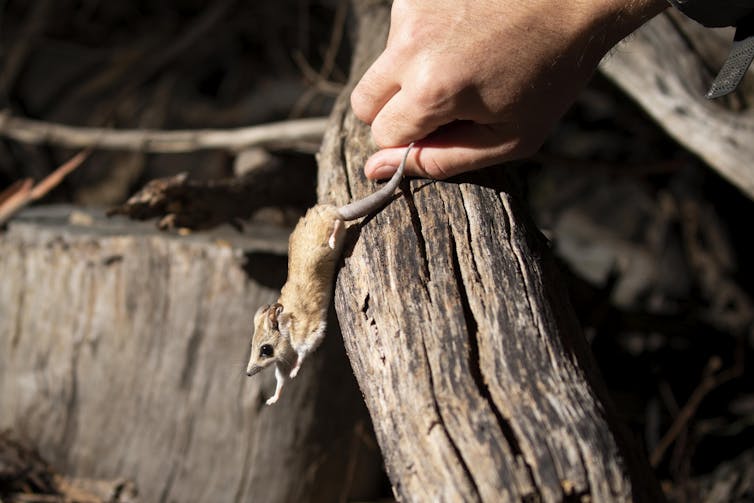
Listing The Fat-Tailed Dunnart
Early in my PhD candidature (in February 2018), my goal was to use fat-tailed dunnarts as a model species for some of their more endangered relatives, such as the Tasmanian devil or eastern quoll.
The fat-tailed dunnart is a small, carnivorous, nocturnal marsupial that weighs around 15 grams (about the size of three grapes). They are incredibly cute, ferocious predators (of insects, that is) who store energy reserves in their tail, much like a camel’s hump.
The species is widely distributed across southern and central Australia in a range of habitats. In Victoria, they are largely confined to grasslands and open woodlands.
When I began my PhD research, fat-tailed dunnarts were assumed to be “common”, based on historical records. But no-one was really looking for them. So when I set out to find them, I couldn’t.
My main study site was at the Werribee Western Treatment Plant. In the early 1970s, 700 fat-tailed dunnart were trapped there over four years. Using the same methods, with double the survey effort, I found none.
In the intervening 43 years, 75% of suitable dunnart habitat at this site had been cleared. When I extended my search further west into Victoria’s grasslands, fat-tailed dunnarts were still present but only in very low numbers. As the last remaining small mammal in Victoria’s grasslands, this was highly concerning.
Over time I realised that this species was a threatened species in its own right.
Gathering The Evidence
In 2019, I began to pursue statutory listing and protection for fat-tailed dunnarts in Victoria under the Flora and Fauna Guarantee Act. So what did that involve?
I needed to provide the following:
Species description, life history, generation length, habitat, and distribution. Basically, everything there is to know about the species. Generation length is crucial: if a species has slow reproductive rates, it will be more difficult to recover from population crashes.
Key threats. I needed to provide evidence that fat-tailed dunnarts were experiencing habitat loss (conversion of grasslands to crops), being heavily preyed upon by invasive species (mostly by rats) and that the remaining populations were becoming geographically isolated, therefore restricting gene flow.
Evidence of decline. This is where it gets really tricky. I needed to provide evidence that fat-tailed dunnarts met at least one of the five IUCN criteria mentioned above. This was challenging because there were no long-term survey datasets available for fat-tailed dunnarts. How do you show a decline when no one knew what the original populations were?
I was able to garner enough data and evidence from my PhD research, the Atlas of Living Australia, and compiling incidental recordings of this species from other surveys to convince the Scientific Advisory Committee to support the nomination of the fat-tailed dunnart.
Specifically, I was able to show that the Victorian population had declined by more than 60% from 2000-09 to 2010-19. This satisfied the threshold for population decline (criterion A) of at least 30% over the past 10 years (vulnerable).
I was also able to demonstrate that fat-tailed dunnarts now only occupied 1,427 square kilometres in Victoria, meeting the threshold for vulnerable under criterion B (geographic range). I satisfied not one, but two IUCN criteria.
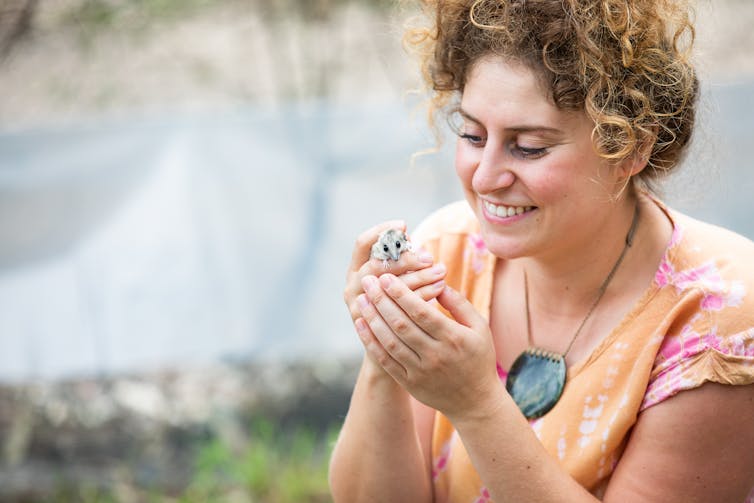
Protecting The Dunnart
Once the vulnerable listing is formally ratified, planning decisions that involve clearing potential fat-tailed dunnart habitat need to consider the species. At least that’s the idea. In practice, legislative protection does not always translate to on-ground protection.
Loopholes, offsets, ministerial discretion and findings of “low to moderate impact” mean projects that clear threatened species habitat go ahead more often than not.
Despite promising signals and intent from the federal government, threatened species habitat continues to be cleared at alarming rates, pushing species towards the brink of extinction. The process for listing threatened species is rigorous - as it should be - but it is a means to an end.
Unless threatened species laws are enforced and strengthened, the effort required to have a species listed as threatened will be in vain. ![]()
Emily Scicluna, Research Associate – Thylacine Integrated Genomic Restoration Research Laboratory, University of Melbourne, The University of Melbourne and Jim Radford, Associate Professor, La Trobe University
This article is republished from The Conversation under a Creative Commons license. Read the original article.
Ghost rodents: get ready to fall in love with Australia’s albino rats and mice
Darcy Watchorn, Deakin UniversityDiscoveries of albino animals have a unique ability to capture the public imagination, often leading to flurries of social media and news coverage. (Think Migaloo, the famous white humpback whale.)
It’s easy to see why albino animals are so fascinating. Their stark white appearance typically sets them apart from the world around them, providing a striking contrast against the green forest, red desert or blue ocean.
But while people are captivated by the likes of white whales, kangaroos and koalas, it’s a different story for poor old rats and mice.
Our new research is the first study of Australia’s native albino rodents. By raising the profile of these adorable little creatures, we hope more people will come to appreciate Australia’s rodents as remarkable animals worth protecting.
The Unfair Stigma Of The Repulsive Rodent
Rodents, especially rats, have long been viewed with disdain - often seen as filthy, disease-ridden pests. The terms “dirty rat” and “vermin” are used as insults in many cultures, and even Hollywood films.
Unfortunately, this negative perception of rodents often extends to our native species, dampening public enthusiasm for conservation.
Public perception plays a crucial role in wildlife conservation, and rodents are one of Australia’s most diverse and ecologically important groups of mammals, with a disproportionately high rate of extinction. So if people don’t care about them, or if they actively dislike them, there’ll be little effort to help them.
What Is Albinism, And How Does It Impact Wildlife?
Albinism is a rare genetic condition that typically occurs once in every few thousand births. It affects an animal’s ability to produce melanin, the pigment that gives colour to the skin, hair and eyes. There are several types of albinism, which vary in their genetic cause and the degree of pigment loss. But animals with the condition typically have white or light-coloured skin, scales or fur, and pink or blue eyes.
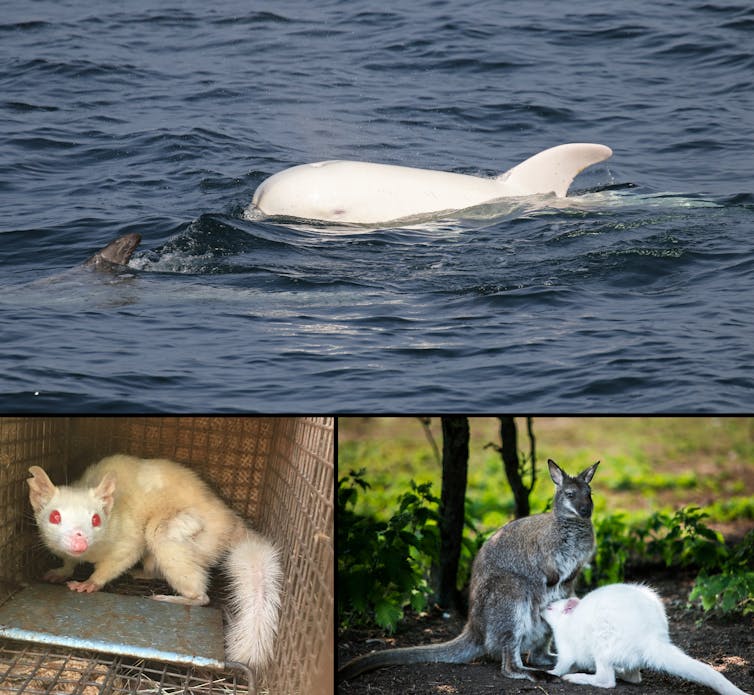
While albinism is common in laboratory rats, these animals have been selectively bred for this trait. In wild rodent populations it has been very rarely observed.
The condition was previously reported in less than 2% of the world’s 2,683 rodent species (including the 48 extinct species). (It’s now 2.8%).
In the wild, albino animals struggle to survive. Albinism can result in poor eyesight, a heightened sensitivity to ultraviolet radiation, and an increased risk of being spotted by predators. Plus, albino animals may be targeted by trophy hunters and poachers.
Australia’s Remarkable Rodents
When most Australians think of rodents, they think of invasive species such as black rats or house mice (stinky pests sneaking around their homes). Many would be surprised to learn that more than 50 species of rodents are native to Australia. They’re wonderful, diverse, and rarely smelly.
Sadly, since Europeans arrived, at least 13 species have become extinct and 25 species are listed as threatened at state or federal levels.
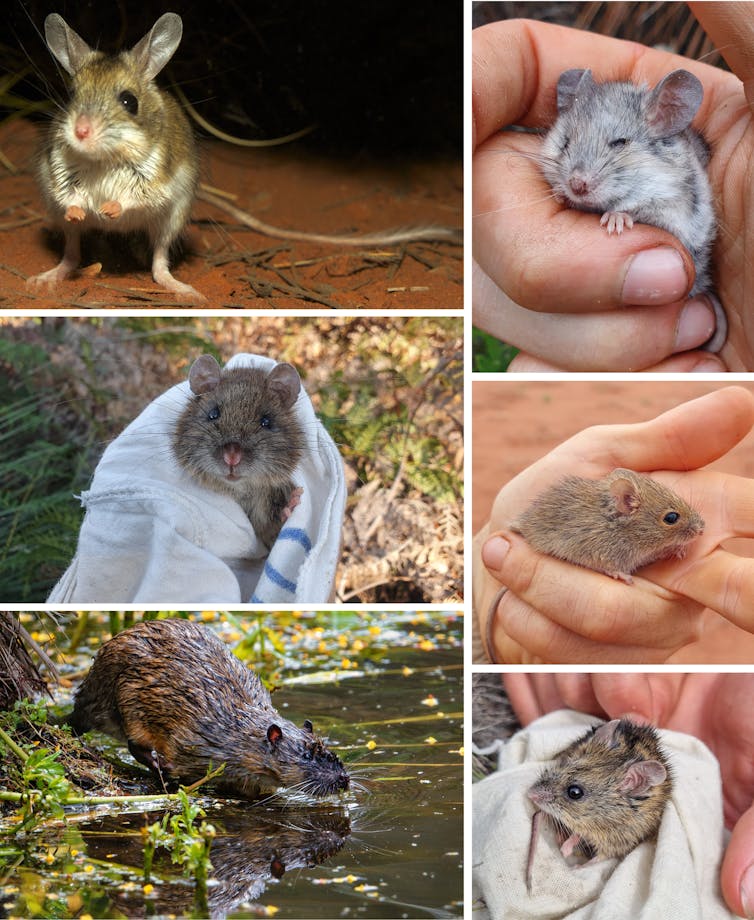
Our native rodents help maintain healthy ecosystems. They contribute to soil turnover and disperse seeds and fungi. We have species adapted to every environment, from the alps to the deserts, forests, rivers and coastlines. Some dig complex burrow systems. Others nest in trees, or make houses out of sticks or pebbles. And some, like the rakali, meticulously dissect the invasive and toxic cane toads to eat their hearts and livers. We have a native rodent for every occasion.
Our Study Of Australia’s Albino Rodents
In 2021, I was lucky to discover an albino bush rat in Victoria’s Otway Ranges. Gazing at this remarkable ginger fuzzball with soul-piercing red eyes, I realised I’d never heard or read about albino Australian rodents.
After that first encounter, I searched the academic literature, and found nothing. There were no published accounts of Australian rodents with albinism. However, given how many rodents there are in Australia, I knew I couldn’t be the first ecologist to see one.
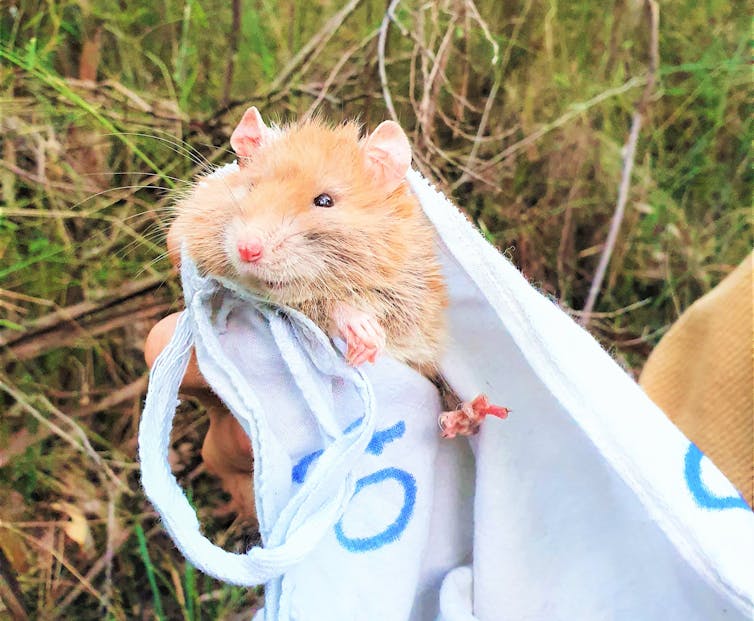
So my colleagues and I conducted a survey of Australian ecologists, museums and historic newspaper articles to find albino rodent records. We found 23 records of albinos (representing eight species) from a sample of more than 50,000 individual rats and mice. While this is but a handful of species, it represents a 12% increase in the recorded number of rodent species with albinism worldwide.

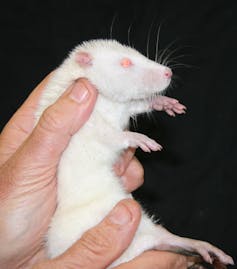
The frequency of albinism can also increase under certain conditions, such as among small, isolated populations or between closely related individuals. We found a population of rakali on Barrow Island (60km off the coast of Western Australia) had a much higher rate of albinism than mainland populations. About 2% of this population were albino at the time of our survey, potentially due to the population’s long isolation and low genetic diversity.
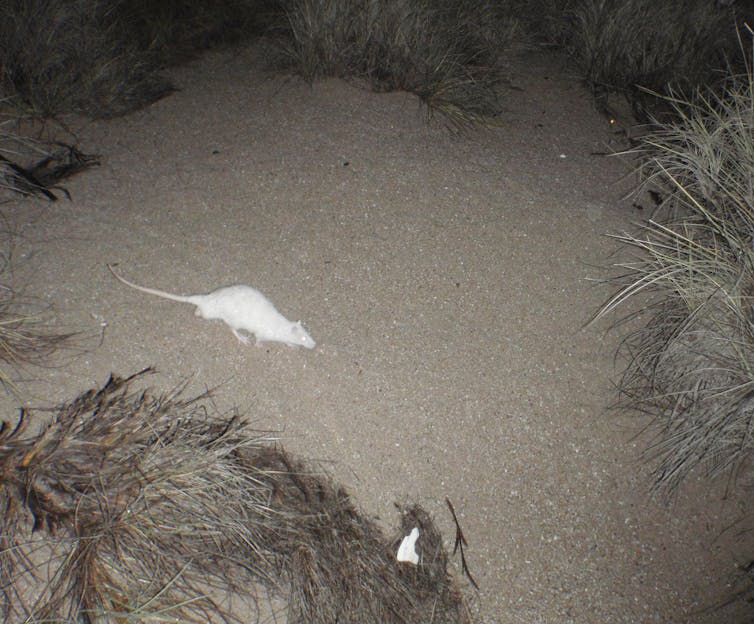
Rare And Precious
Australia has lost more than its fair share of native rodents since Europeans arrived. Now more than ever, it’s important to appreciate and protect all of Australia’s unique and fascinating wildlife.
So, regardless of whether they’re albino or not, let’s all make some room in our hearts for Australia’s fuzzy little rodents. Unless you’re a cane toad, of course, because our rakali are on their way to gobble your heart.
Darcy is grateful to Phoebe Burns, Native Rodent Biologist at Zoos Victoria, for her contribution to this article.![]()
Darcy Watchorn, PhD Candidate, Deakin University
This article is republished from The Conversation under a Creative Commons license. Read the original article.
Pittwater Reserves: Histories + Notes + Pictorial Walks
A History Of The Campaign For Preservation Of The Warriewood Escarpment by David Palmer OAM and Angus Gordon OAM
A Stroll Through Warriewood Wetlands by Joe Mills February 2023
A Walk Around The Cromer Side Of Narrabeen Lake by Joe Mills
America Bay Track Walk - photos by Joe Mills
An Aquatic June: North Narrabeen - Turimetta - Collaroy photos by Joe Mills
Angophora Reserve Angophora Reserve Flowers Grand Old Tree Of Angophora Reserve Falls Back To The Earth - History page
Annie Wyatt Reserve - A Pictorial
Avalon's Village Green: Avalon Park Becomes Dunbar Park - Some History + Toongari Reserve and Catalpa Reserve
Bairne Walking Track Ku-Ring-Gai Chase NP by Kevin Murray
Bangalley Headland Bangalley Mid Winter
Banksias of Pittwater
Barrenjoey Boathouse In Governor Phillip Park Part Of Our Community For 75 Years: Photos From The Collection Of Russell Walton, Son Of Victor Walton
Barrenjoey Headland: Spring flowers
Barrenjoey Headland after fire
Bayview Baths
Bayview Wetlands
Beeby Park
Bilgola Beach
Botham Beach by Barbara Davies
Bungan Beach Bush Care
Careel Bay Saltmarsh plants
Careel Bay Birds
Careel Bay Clean Up day
Careel Bay Playing Fields History and Current
Careel Creek
Careel Creek - If you rebuild it they will come
Centre trail in Ku-ring-gai Chase National Park
Chiltern Track- Ingleside by Marita Macrae
Clareville Beach
Clareville/Long Beach Reserve + some History
Coastal Stability Series: Cabbage Tree Bay To Barrenjoey To Observation Point by John Illingsworth, Pittwater Pathways, and Dr. Peter Mitchell OAM
Cowan Track by Kevin Murray
Curl Curl To Freshwater Walk: October 2021 by Kevin Murray and Joe Mills
Currawong and Palm Beach Views - Winter 2018
Currawong-Mackerel-The Basin A Stroll In Early November 2021 - photos by Selena Griffith
Currawong State Park Currawong Beach + Currawong Creek
Deep Creek To Warriewood Walk photos by Joe Mills
Drone Gives A New View On Coastal Stability; Bungan: Bungan Headland To Newport Beach + Bilgola: North Newport Beach To Avalon + Bangalley: Avalon Headland To Palm Beach
Duck Holes: McCarrs Creek by Joe Mills
Dunbar Park - Some History + Toongari Reserve and Catalpa Reserve
Dundundra Falls Reserve: August 2020 photos by Selena Griffith - Listed in 1935
Elsie Track, Scotland Island
Elvina Track in Late Winter 2019 by Penny Gleen
Elvina Bay Walking Track: Spring 2020 photos by Joe Mills
Elvina Bay-Lovett Bay Loop Spring 2020 by Kevin Murray and Joe Mills
Fern Creek - Ingleside Escarpment To Warriewood Walk + Some History photos by Joe Mills
Iluka Park, Woorak Park, Pittwater Park, Sand Point Reserve, Snapperman Beach Reserve - Palm Beach: Some History
Ingleside
Ingleside Wildflowers August 2013
Irrawong - Ingleside Escarpment Trail Walk Spring 2020 photos by Joe Mills
Irrawong - Mullet Creek Restoration
Katandra Bushland Sanctuary - Ingleside
Lucinda Park, Palm Beach: Some History + 2022 Pictures
McCarrs Creek
McCarr's Creek to Church Point to Bayview Waterfront Path
McKay Reserve
Mona Vale Beach - A Stroll Along, Spring 2021 by Kevin Murray
Mona Vale Headland, Basin and Beach Restoration
Mona Vale Woolworths Front Entrance Gets Garden Upgrade: A Few Notes On The Site's History
Mount Murray Anderson Walking Track by Kevin Murray and Joe Mills
Mullet Creek
Narrabeen Creek
Narrabeen Lagoon Catchment: Past Notes Present Photos by Margaret Woods
Narrabeen Lagoon State Park
Narrabeen Lagoon State Park Expansion
Narrabeen Rockshelf Aquatic Reserve
Nerang Track, Terrey Hills by Bea Pierce
Newport Bushlink - the Crown of the Hill Linked Reserves
Newport Community Garden - Woolcott Reserve
Newport to Bilgola Bushlink 'From The Crown To The Sea' Paths: Founded In 1956 - A Tip and Quarry Becomes Green Space For People and Wildlife
Pittwater Reserves: The Green Ways; Bungan Beach and Bungan Head Reserves: A Headland Garden
Pittwater Reserves, The Green Ways: Clareville Wharf and Taylor's Point Jetty
Pittwater Reserves: The Green Ways; Hordern, Wilshire Parks, McKay Reserve: From Beach to Estuary
Pittwater Reserves - The Green Ways: Mona Vale's Village Greens a Map of the Historic Crown Lands Ethos Realised in The Village, Kitchener and Beeby Parks
Pittwater Reserves: The Green Ways Bilgola Beach - The Cabbage Tree Gardens and Camping Grounds - Includes Bilgola - The Story Of A Politician, A Pilot and An Epicure by Tony Dawson and Anne Spencer
Pittwater spring: waterbirds return to Wetlands
Pittwater's Lone Rangers - 120 Years of Ku-Ring-Gai Chase and the Men of Flowers Inspired by Eccleston Du Faur
Pittwater's Parallel Estuary - The Cowan 'Creek
Resolute Track at West Head by Kevin Murray
Resolute Track Stroll by Joe Mills
Riddle Reserve, Bayview
Salvation Loop Trail, Ku-Ring-Gai Chase National Park- Spring 2020 - by Selena Griffith
Seagull Pair At Turimetta Beach: Spring Is In The Air!
Stapleton Reserve
Stapleton Park Reserve In Spring 2020: An Urban Ark Of Plants Found Nowhere Else
Stony Range Regional Botanical Garden: Some History On How A Reserve Became An Australian Plant Park
The Chiltern Track
The Resolute Beach Loop Track At West Head In Ku-Ring-Gai Chase National Park by Kevin Murray
Topham Track Ku-Ring-Gai Chase NP, August 2022 by Joe Mills and Kevin Murray
Towlers Bay Walking Track by Joe Mills
Trafalgar Square, Newport: A 'Commons' Park Dedicated By Private Landholders - The Green Heart Of This Community
Tranquil Turimetta Beach, April 2022 by Joe Mills
Turimetta Beach Reserve by Joe Mills, Bea Pierce and Lesley
Turimetta Beach Reserve: Old & New Images (by Kevin Murray) + Some History
Turimetta Headland
Warriewood Wetlands - Creeks Deteriorating: How To Report Construction Site Breaches, Weed Infestations + The Long Campaign To Save The Warriewood Wetlands & Ingleside Escarpment March 2023
Warriewood Wetlands and Irrawong Reserve
Whale Beach Ocean Reserve: 'The Strand' - Some History On Another Great Protected Pittwater Reserve
Wilshire Park Palm Beach: Some History + Photos From May 2022
Winji Jimmi - Water Maze

Pittwater's Birds
Australian Predators of the Sky by Penny Olsen - published by National Library of Australia
Australian Raven Australian Wood Duck Family at Newport
A Week In Pittwater Issue 128 A Week In Pittwater - June 2014 Issue 168
Baby Birds Spring 2015 - Rainbow Lorikeets in our Yard - for Children Baby Birds by Lynleigh Greig, Southern Cross Wildlife Care - what do if being chased by a nesting magpie or if you find a baby bird on the ground
Baby Kookaburras in our Backyard: Aussie Bird Count 2016 - October
Balloons Are The Number 1 Marine Debris Risk Of Mortality For Our Seabirds - Feb 2019 Study
Bangalley Mid-Winter Barrenjoey Birds Bird Antics This Week: December 2016
Bird of the Month February 2019 by Michael Mannington
Birdland Above the Estuary - October 2012 Birds At Our Window Birds at our Window - Winter 2014 Birdland June 2016
Birdsong Is a Lovesong at This time of The Year - Brown Falcon, Little Wattle Bird, Australian Pied cormorant, Mangrove or Striated Heron, Great Egret, Grey Butcherbird, White-faced Heron
Bird Songs – poems about our birds by youngsters from yesterdays - for children Bird Week 2015: 19-25 October
Bird Songs For Spring 2016 For Children by Joanne Seve
Birds at Careel Creek this Week - November 2017: includes Bird Count 2017 for Local Birds - BirdLife Australia by postcode
Black Cockatoo photographed in the Narrabeen Catchment Reserves this week by Margaret G Woods - July 2019
Black-Necked Stork, Mycteria Australis, Now Endangered In NSW, Once Visited Pittwater: Breeding Pair shot in 1855
Black Swans on Narrabeen Lagoon - April 2013 Black Swans Pictorial
Endangered Little Tern Fishing at Mona Vale Beach
‘Feather Map of Australia’: Citizen scientists can support the future of Australia's wetland birds: for Birdwatchers, school students and everyone who loves our estuarine and lagoon and wetland birds
Fledgling Common Koel Adopted by Red Wattlebird -Summer Bird fest 2013 Flegdlings of Summer - January 2012
Flocks of Colour by Penny Olsen - beautiful new Bird Book Celebrates the 'Land of the Parrots'
Friendly Goose at Palm Beach Wharf - Pittwater's Own Mother Goose
Front Page Issue 177 Front Page Issue 185 Front Page Issue 193 - Discarded Fishing Tackle killing shorebirds Front Page Issue 203 - Juvenile Brush Turkey Front Page Issue 208 - Lyrebird by Marita Macrae Front Page Issue 219 Superb Fairy Wren Female Front Page Issue 234: National Bird Week October 19-25 and the 2015 the Aussie Back Yard Bird Count: Australia's First Bird Counts - a 115 Year Legacy - with a small insight into our first zoos Front Page Issue 236: Bird Week 2015 Front Page Issue 244: watebirds Front Page Issue 260: White-face Heron at Careel Creek Front Page Issue 283: Pittwater + more birds for Bird Week/Aussie Bird Count Front Page Issue 284: Pittwater + more birds for Bird Week/Aussie Bird Count Front Page Issue 285: Bird Week 2016 Front Page Issue 331: Spring Visitor Birds Return
G . E. Archer Russell (1881-1960) and His Passion For Avifauna From Narrabeen To Newport
Glossy Black-Cockatoo Returns To Pittwater by Paul Wheeler Glossy Cockatoos - 6 spotted at Careel Bay February 2018
Grey Butcher Birds of Pittwater
INGLESIDE LAND RELEASE ON AGAIN BUT MANY CHALLENGES AHEAD by David Palmer
Issue 60 May 2012 Birdland - Smiles- Beamings -Early -Winter - Blooms
Jayden Walsh’s Northern Beaches Big Year - courtesy Pittwater Natural Heritage Association
John Gould's Extinct and Endangered Mammals of Australia by Dr. Fred Ford - Between 1850 and 1950 as many mammals disappeared from the Australian continent as had disappeared from the rest of the world between 1600 and 2000! Zoologist Fred Ford provides fascinating, and often poignant, stories of European attitudes and behaviour towards Australia's native fauna and connects these to the animal's fate today in this beautiful new book - our interview with the author
July 2012 Pittwater Environment Snippets; Birds, Sea and Flowerings
Juvenile Sea Eagle at Church Point - for children
King Parrots in Our Front Yard
Kookaburra Turf Kookaburra Fledglings Summer 2013 Kookaburra Nesting Season by Ray Chappelow Kookaburra Nest – Babies at 1.5 and 2.5 weeks old by Ray Chappelow Kookaburra Nest – Babies at 3 and 4 weeks old by Ray Chappelow Kookaburra Nest – Babies at 5 weeks old by Ray Chappelow Kookaburra and Pittwater Fledglings February 2020 to April 2020
Lion Island's Little Penguins (Fairy Penguins) Get Fireproof Homes - thanks to NSW National Parks and Wildlife Service and the Fix it Sisters Shed
Lyre Bird Sings in Local National Park - Flock of Black Cockatoos spotted - June 2019
Magpie's Melodic Melodies - For Children (includes 'The Magpie's Song' by F S Williamson)
Masked Lapwing (Plover) - Reflected
May 2012 Birdland Smiles Beamings Early Winter Blooms
Musk Lorikeets In Pittwater: Pittwater Spotted Gum Flower Feast - May 2020
Nankeen Kestrel Feasting at Newport: May 2016
National Bird Week 2014 - Get Involved in the Aussie Backyard Bird Count: National Bird Week 2014 will take place between Monday 20 October and Sunday 26 October, 2014. BirdLife Australia and the Birds in Backyards team have come together to launch this year’s national Bird Week event the Aussie Backyard Bird Count! This is one the whole family can do together and become citizen scientists...
National Bird Week October 19-25 and the 2015 the Aussie Back Yard Bird Count: Australia's First Bird Counts - a 115 Year Legacy - with a small insight into our first zoos
Nature 2015 Review Earth Air Water Stone
New Family of Barking Owls Seen in Bayview - Church Point by Pittwater Council
Noisy Visitors by Marita Macrae of PNHA
Odes to Australia's Fairy-wrens by Douglas Brooke Wheelton Sladen and Constance Le Plastrier 1884 and 1926
Oystercatcher and Dollarbird Families - Summer visitors
Painted Button-Quail Rescued By Locals - Elanora-Ingleside escarpment-Warriewood wetlands birds
Palm Beach Protection Group Launch, Supporters Invited: Saturday Feb.16th - Residents Are Saying 'NO' To Off-Leash Dogs In Station Beach Eco-System - reports over 50 dogs a day on Station Beach throughout December-January (a No Dogs Beach) small children being jumped on, Native birds chased, dog faeces being left, families with toddlers leaving beach to get away from uncontrolled dogs and 'Failure of Process' in council 'consultation' open to February 28th
Pardalote, Scrub Wren and a Thornbill of Pittwater
Pecking Order by Robyn McWilliam
Pelican Lamps at Narrabeen Pelican Dreamsong - A Legend of the Great Flood - dreamtime legend for children
Pittwater Becalmed Pittwater Birds in Careel Creek Spring 2018 Pittwater Waterbirds Spring 2011 Pittwater Waterbirds - A Celebration for World Oceans Day 2015
Pittwater's Mother Nature for Mother's Day 2019
Plastic in 99 percent of seabirds by 2050 by CSIRO
Plover Appreciation Day September 16th 2015
Powerful and Precious by Lynleigh Grieg
Red Wattlebird Song - November 2012
Restoring The Diamond: every single drop. A Reason to Keep Dogs and Cats in at Night.
Sea Birds off the Pittwater Coast: Albatross, Gannet, Skau + Australian Poets 1849, 1898 and 1930, 1932
Sea Eagle Juvenile at Church Point
Seen but Not Heard: Lilian Medland's Birds - Christobel Mattingley - one of Australia's premier Ornithological illustrators was a Queenscliff lady - 53 of her previously unpublished works have now been made available through the auspices of the National Library of Australia in a beautiful new book
7 Little Ducklings: Just Keep Paddling - Australian Wood Duck family take over local pool by Peta Wise
Shag on a North Avalon Rock - Seabirds for World Oceans Day 2012
Short-tailed Shearwaters Spring Migration 2013
South-West North-East Issue 176 Pictorial
Spring 2012 - Birds are Splashing - Bees are Buzzing
Spring Becomes Summer 2014- Royal Spoonbill Pair at Careel Creek
Spring Notes 2018 - Royal Spoonbill in Careel Creek
Station Beach Off Leash Dog Area Proposal Ignores Current Uses Of Area, Environment, Long-Term Fauna Residents, Lack Of Safe Parking and Clearly Stated Intentions Of Proponents have your say until February 28, 2019
Summer 2013 BirdFest - Brown Thornbill Summer 2013 BirdFest- Canoodlers and getting Wet to Cool off Summer 2013 Bird Fest - Little Black Cormorant Summer 2013 BirdFest - Magpie Lark
New Shorebirds WingThing For Youngsters Available To Download
A Shorebirds WingThing educational brochure for kids (A5) helps children learn about shorebirds, their life and journey. The 2021 revised brochure version was published in February 2021 and is available now. You can download a file copy here.
If you would like a free print copy of this brochure, please send a self-addressed envelope with A$1.10 postage (or larger if you would like it unfolded) affixed to: BirdLife Australia, Shorebird WingThing Request, 2-05Shorebird WingThing/60 Leicester St, Carlton VIC 3053.

 Shorebird Identification Booklet
Shorebird Identification Booklet
The Migratory Shorebird Program has just released the third edition of its hugely popular Shorebird Identification Booklet. The team has thoroughly revised and updated this pocket-sized companion for all shorebird counters and interested birders, with lots of useful information on our most common shorebirds, key identification features, sighting distribution maps and short articles on some of BirdLife’s shorebird activities.
The booklet can be downloaded here in PDF file format: http://www.birdlife.org.au/documents/Shorebird_ID_Booklet_V3.pdf
Paper copies can be ordered as well, see http://www.birdlife.org.au/projects/shorebirds-2020/counter-resources for details.
Download BirdLife Australia's children’s education kit to help them learn more about our wading birdlife
Shorebirds are a group of wading birds that can be found feeding on swamps, tidal mudflats, estuaries, beaches and open country. For many people, shorebirds are just those brown birds feeding a long way out on the mud but they are actually a remarkably diverse collection of birds including stilts, sandpipers, snipe, curlews, godwits, plovers and oystercatchers. Each species is superbly adapted to suit its preferred habitat. The Red-necked Stint is as small as a sparrow, with relatively short legs and bill that it pecks food from the surface of the mud with, whereas the Eastern Curlew is over two feet long with a exceptionally long legs and a massively curved beak that it thrusts deep down into the mud to pull out crabs, worms and other creatures hidden below the surface.
Some shorebirds are fairly drab in plumage, especially when they are visiting Australia in their non-breeding season, but when they migrate to their Arctic nesting grounds, they develop a vibrant flush of bright colours to attract a mate. We have 37 types of shorebirds that annually migrate to Australia on some of the most lengthy and arduous journeys in the animal kingdom, but there are also 18 shorebirds that call Australia home all year round.
What all our shorebirds have in common—be they large or small, seasoned traveller or homebody, brightly coloured or in muted tones—is that each species needs adequate safe areas where they can successfully feed and breed.
The National Shorebird Monitoring Program is managed and supported by BirdLife Australia.
This project is supported by Glenelg Hopkins Catchment Management Authority and Hunter Local Land Services through funding from the Australian Government’s National Landcare Program. Funding from Helen Macpherson Smith Trust and Port Phillip Bay Fund is acknowledged.
The National Shorebird Monitoring Program is made possible with the help of over 1,600 volunteers working in coastal and inland habitats all over Australia.
The National Shorebird Monitoring program (started as the Shorebirds 2020 project initiated to re-invigorate monitoring around Australia) is raising awareness of how incredible shorebirds are, and actively engaging the community to participate in gathering information needed to conserve shorebirds.
In the short term, the destruction of tidal ecosystems will need to be stopped, and our program is designed to strengthen the case for protecting these important habitats.
In the long term, there will be a need to mitigate against the likely effects of climate change on a species that travels across the entire range of latitudes where impacts are likely.
The identification and protection of critical areas for shorebirds will need to continue in order to guard against the potential threats associated with habitats in close proximity to nearly half the human population.
Here in Australia, the place where these birds grow up and spend most of their lives, continued monitoring is necessary to inform the best management practice to maintain shorebird populations.
BirdLife Australia believe that we can help secure a brighter future for these remarkable birds by educating stakeholders, gathering information on how and why shorebird populations are changing, and working to grow the community of people who care about shorebirds.
To find out more visit: http://www.birdlife.org.au/projects/shorebirds-2020/shorebirds-2020-program
Aussie Bread Tags Collection Points

Youth Week 2023
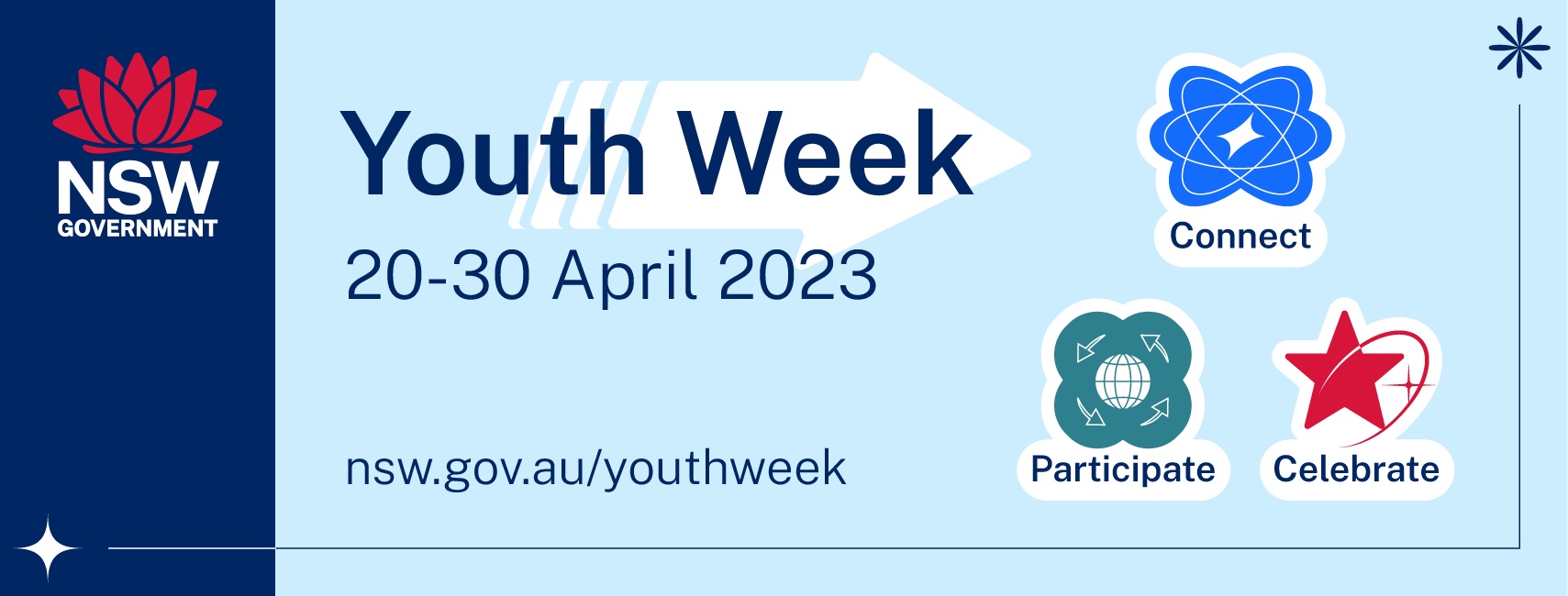
TEXStyle 2023


The 2023 TEA Textile Art Piece (TAP) Challenge
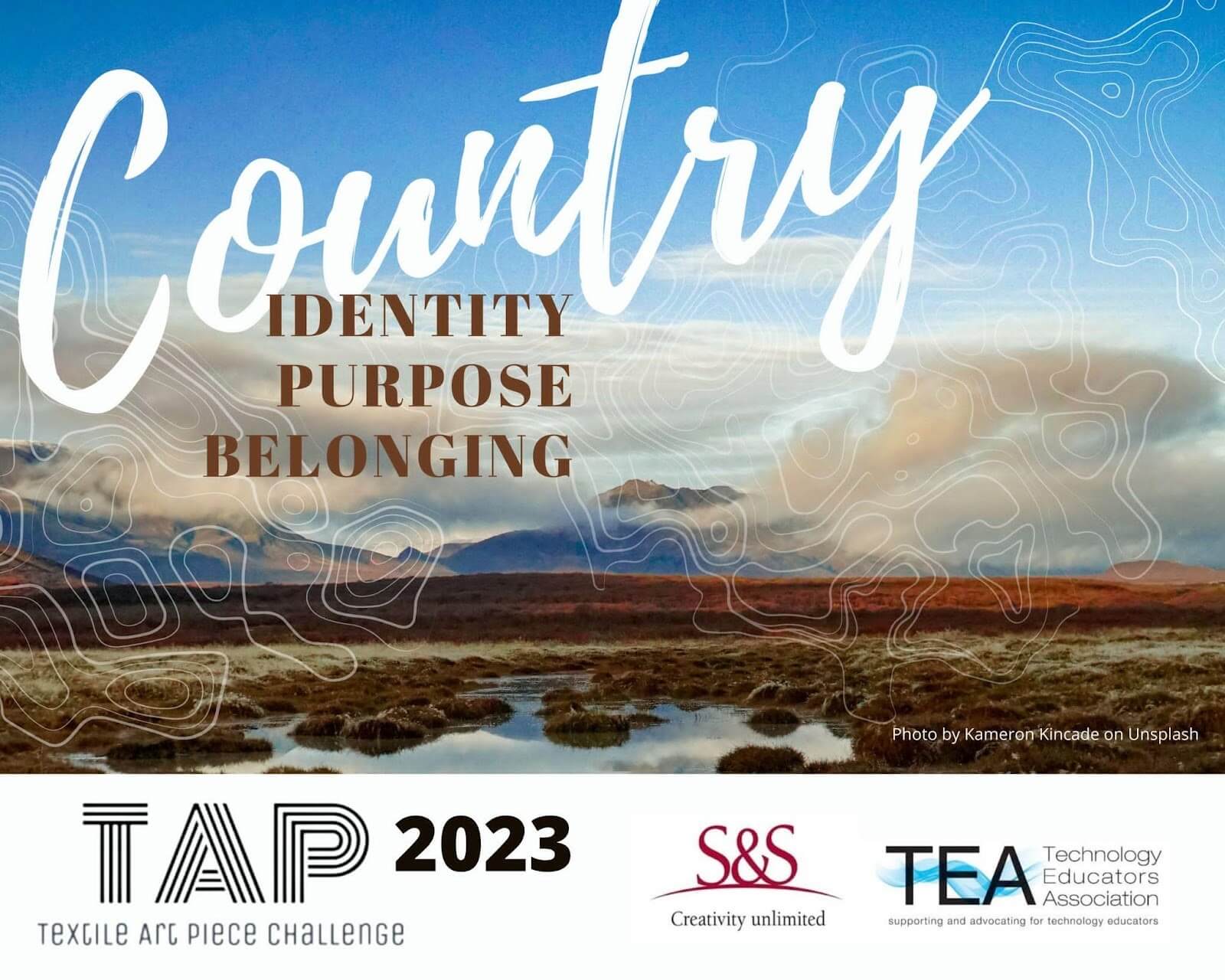
School Holidays Movie: Genius
Scouts Are Out & About
Over the past few months, all age groups in Scouting across Sydney North Region have been doing everything from canoe trips, hikes, and abseiling, to craft and community cleanups.
There's no better time to get into Scouting, with sections for ages 5-25, plus lots of satisfying leadership opportunities for adults.
Young people can have a four-week trial period, and Active Kids vouchers can be used towards membership fees.
Scouts are everywhere! Connect with your local Scout Group via sydneynorthscouts.com
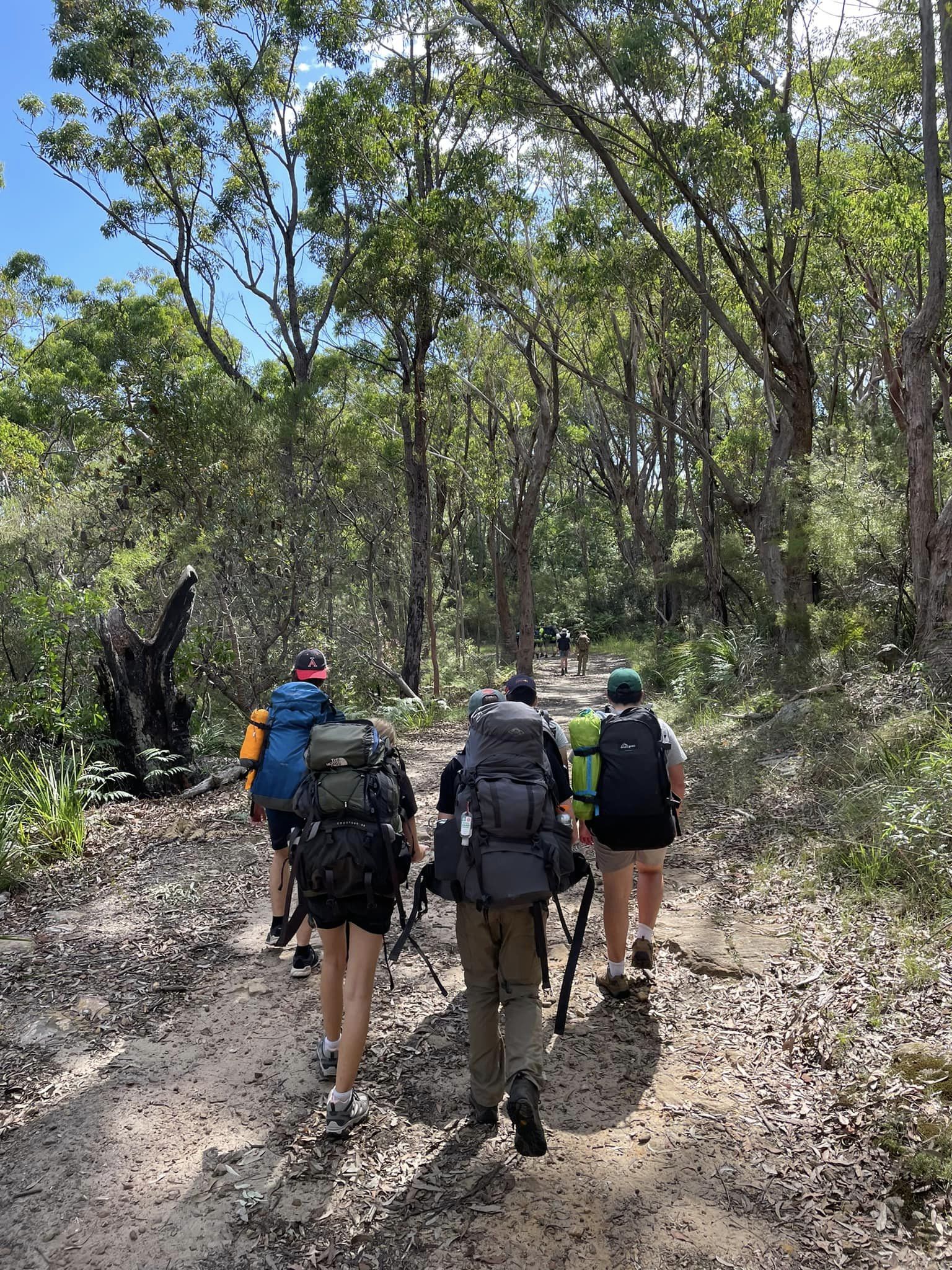
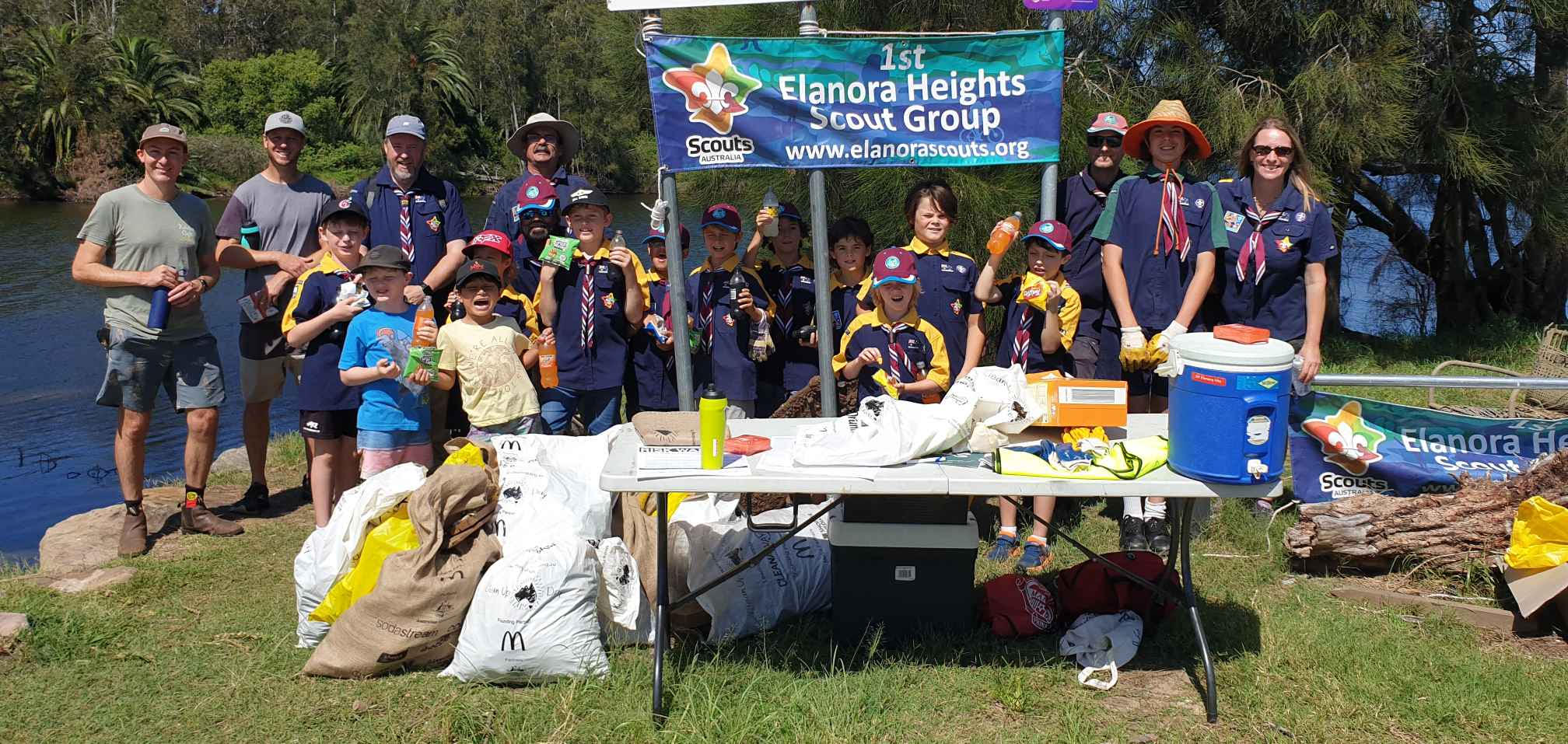
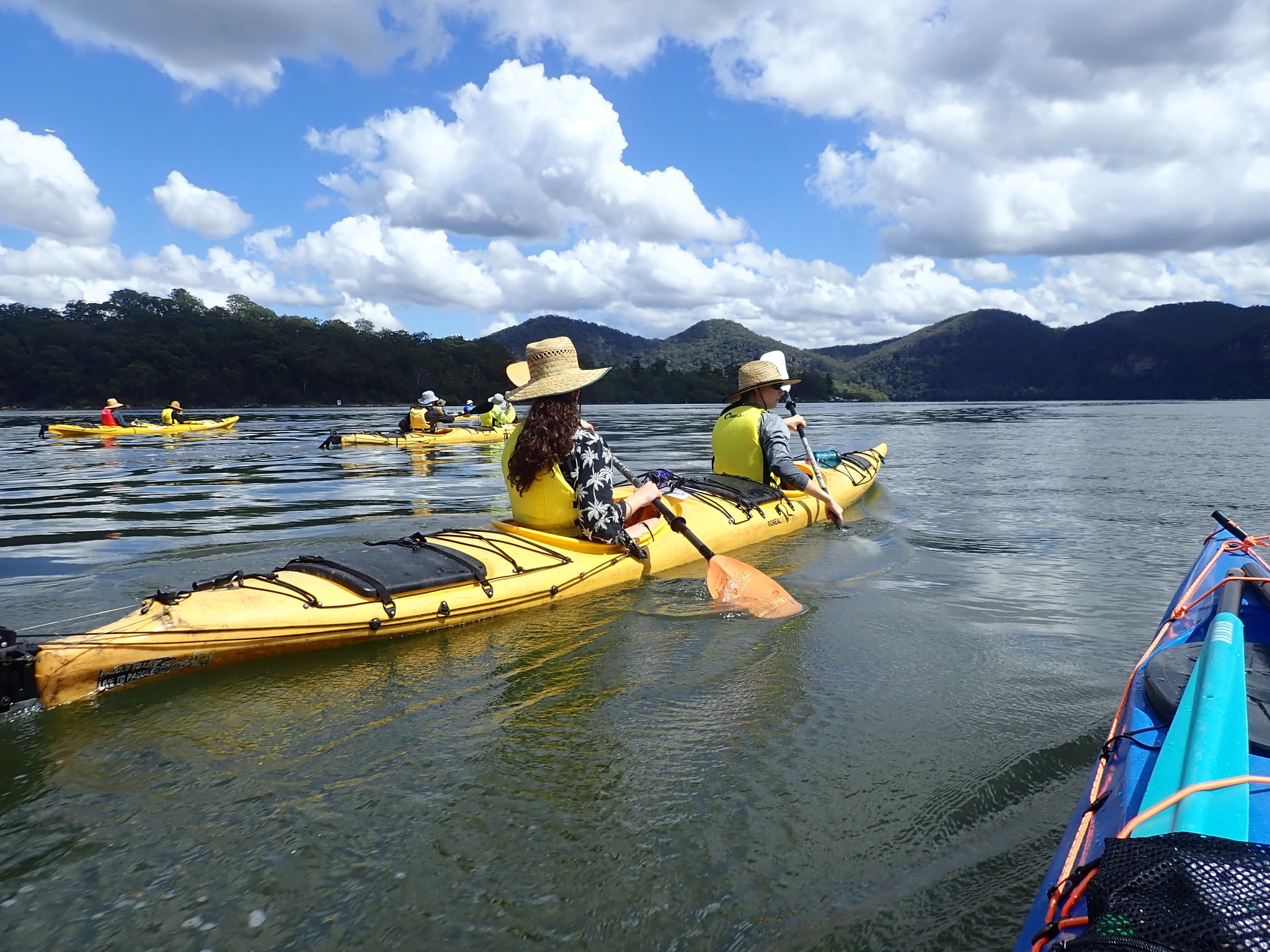

Narrabeen Lakes Sailing Club

Northern Composure Band Competition 2023
Due to the pandemic, Council have had the 20th anniversary on hold but pleased to say that the competition is open and running again.
Northern Composure is the largest and longest-running youth band competition in the area and offers musicians local exposure as well as invaluable stage experience. Bands compete in heats, semi finals and the grand final for a total prize pool of over $15,000.
Over the past 20 years we have had many success stories and now is your chance to join bands such as:
- Ocean Alley
- Lime Cordiale
- Dear Seattle
- What So Not
- The Rions
- Winston Surfshirt
- Crocodylus
And even a Triple J announcer plus a wide range of industry professionals
About the Competition
In 2023, the comp looks a little different.
All bands are invited to enter our heats which will be exclusively run online and voted on by your peers and community by registering below and uploading a video of one song of your choice. (if you are doing a cover, please make sure to credit the original band) We are counting on you to spread the word and get your friends, family, teachers voting for you!
The top 8-12 bands will move on through to our live semi finals with a winner from each moving on to the grand final held during National Youth Week. Not only that but we have raised the age range from 19 to 21 for all those musicians who may have missed out over the past two years.
Key dates
- Voting open for heats: Mon 13 Feb – Sun 26 Feb
- Band Briefing: Mon 6 March, Dee Why PCYC
- Semi 1: Sat 18 March Mona Vale Memorial Hall
- Semi 2: Sat 25 March, YOYOs, Frenchs Forest
- Grand Final: Fri 28 April, Dee Why PCYC
For more information contact Youth Development at youth@northernbeaches.nsw.gov.au or call 8495 5104
Stay in the loop and follow Northern Composure Unplugged on KALOF Facebook.
School Leavers Support
- Download or explore the SLIK here to help guide Your Career.
- School Leavers Information Kit (PDF 5.2MB).
- School Leavers Information Kit (DOCX 0.9MB).
- The SLIK has also been translated into additional languages.
- Download our information booklets if you are rural, regional and remote, Aboriginal or Torres Strait Islander, or living with disability.
- Support for Regional, Rural and Remote School Leavers (PDF 2MB).
- Support for Regional, Rural and Remote School Leavers (DOCX 0.9MB).
- Support for Aboriginal and/or Torres Strait Islander School Leavers (PDF 2MB).
- Support for Aboriginal and/or Torres Strait Islander School Leavers (DOCX 1.1MB).
- Support for School Leavers with Disability (PDF 2MB).
- Support for School Leavers with Disability (DOCX 0.9MB).
- Download the Parents and Guardian’s Guide for School Leavers, which summarises the resources and information available to help you explore all the education, training, and work options available to your young person.
School Leavers Information Service
- navigate the School Leavers Information Kit (SLIK),
- access and use the Your Career website and tools; and
- find relevant support services if needed.
Word Of The Week: Autumn
noun
The word autumn is derived from Latin autumnus, archaic auctumnus, possibly from the ancient Etruscan root autu- and has within it connotations of the passing of the year. Alternative etymologies include Proto-Indo-European h₃ewǵ- ("cold") or h₂sows- ("dry").
After the Greek era, the word continued to be used as the Old French word autompne (automne in modern French) or autumpne in Middle English, and was later normalised to the original Latin. In the Medieval period, there are rare examples of its use as early as the 12th century, but by the 16th century, it was in common use.
Before the 16th century, harvest was the term usually used to refer to the season, as it is common in other West Germanic languages to this day (cf. Dutch herfst, German Herbst, and Scots hairst). However, as more people gradually moved from working the land to living in towns, the word harvest lost its reference to the time of year and came to refer only to the actual activity of reaping, and Autumn began to replace it as a reference to the season.
The Australian Bureau of Metrology has shared some insights into the indigenous terms in our land for this season. Autumn is 'Warnka-mageny' (cold weather time) in the Miriwoong calendar, 'Bjeran', (cool begins) in the Nyoongar calendar and 'Marrai'gang', (wet becoming cooler) in the D'harawal calendar.
To the people of D'harawal Country during Marrai'gang, when the cries of the Marrai'gang (quoll) seeking his mate can be heard, is the time when the lilly-pilly fruit begins to ripen on trees. However, when the lilly-pillys start to fall, it is time to mend the old warm cloaks from the last cold season, or make new ones, and begin the yearly trek to the coastal areas. Marrai'gang commences in April and runs through June.
The D'harawal Country and language area extends from the southern shores of Port Jackson (Sydney Harbour) to the northern shores of the Shoalhaven River.
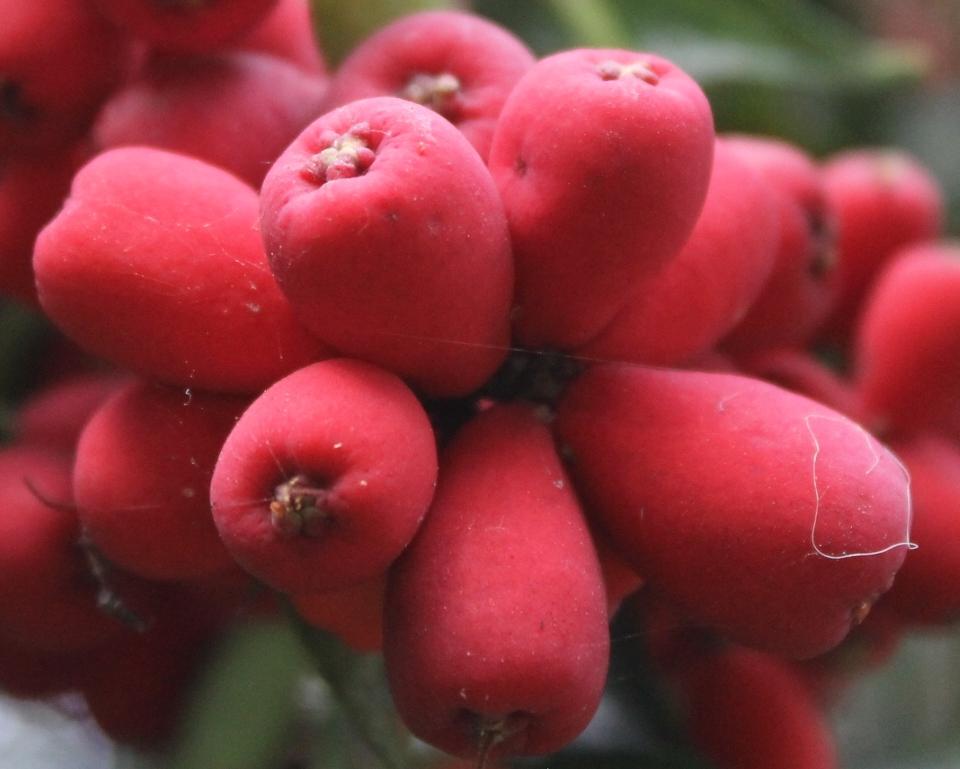
a Pittwater lilli pilli, also spelt Lillypilly
This fruit features widely in traditional Aboriginal medicine, used as a treatment for sore ears, wounds and skin conditions, and generally consumed as an immune system booster as it is very high in Vitamin C. It is very bitter to eat just from the tree - try making some jam or use it in an apple crumble if you'd like to try it. Do not pick fruit from beside a road though as this will be covered in fumes.
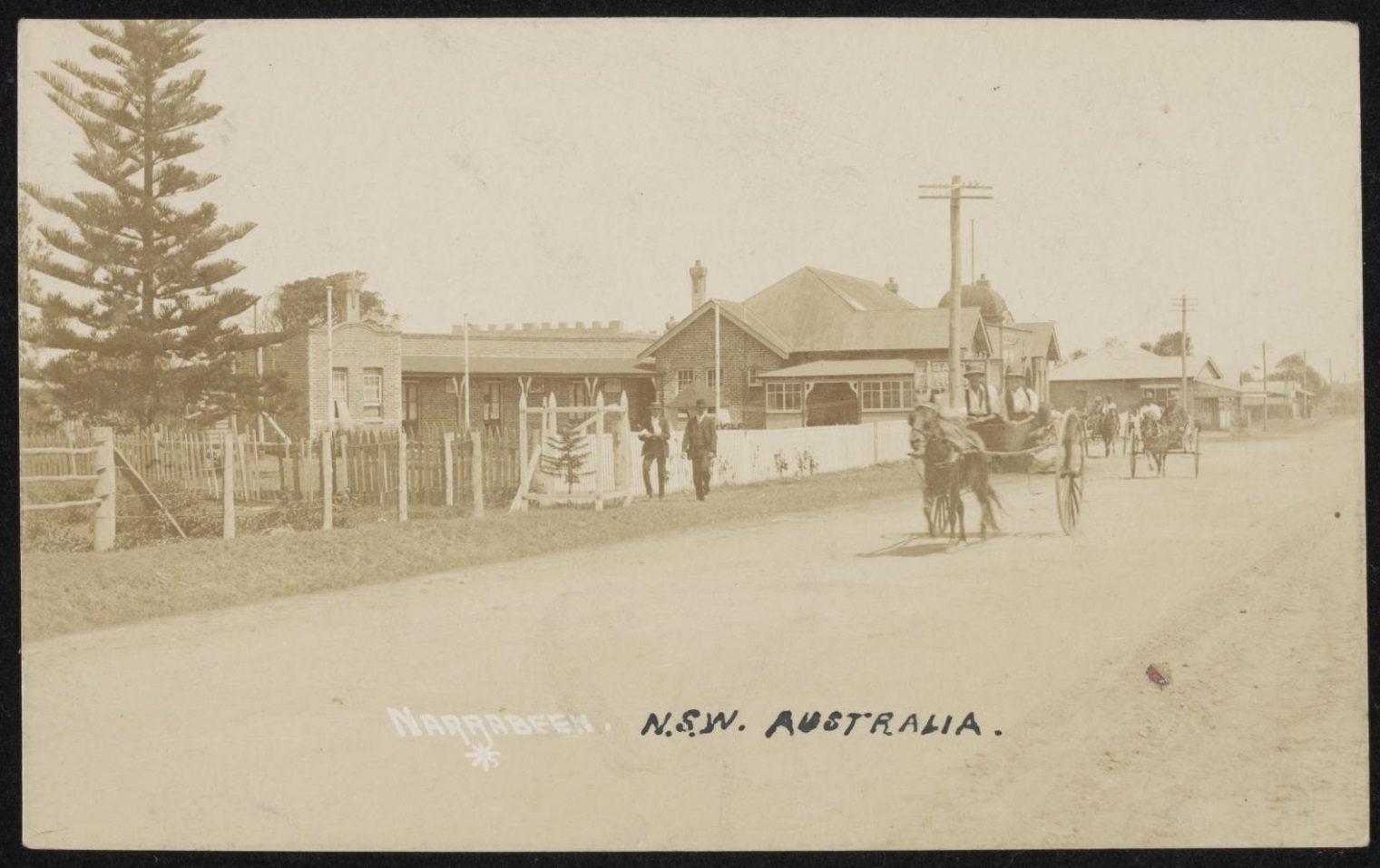
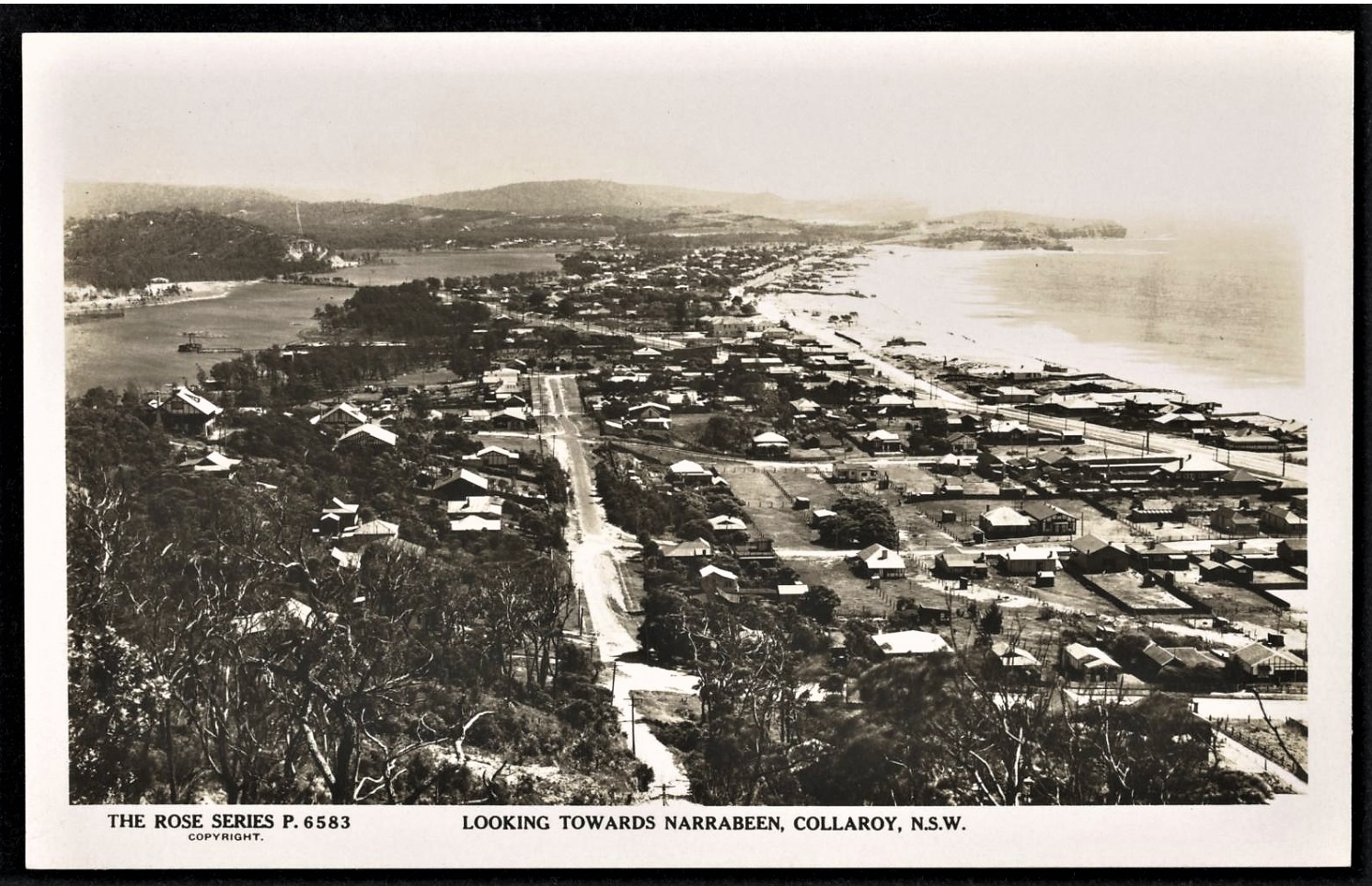
Sepia photographic postcard titled "LOOKING TOWARDS NARABEEN (sic), COLLAROY, N.S.W." circa 1915-1924. The Rose Series. The postcard is unused. Josef Lebovic Gallery collection no. 1 . courtesy National Museum of Australia
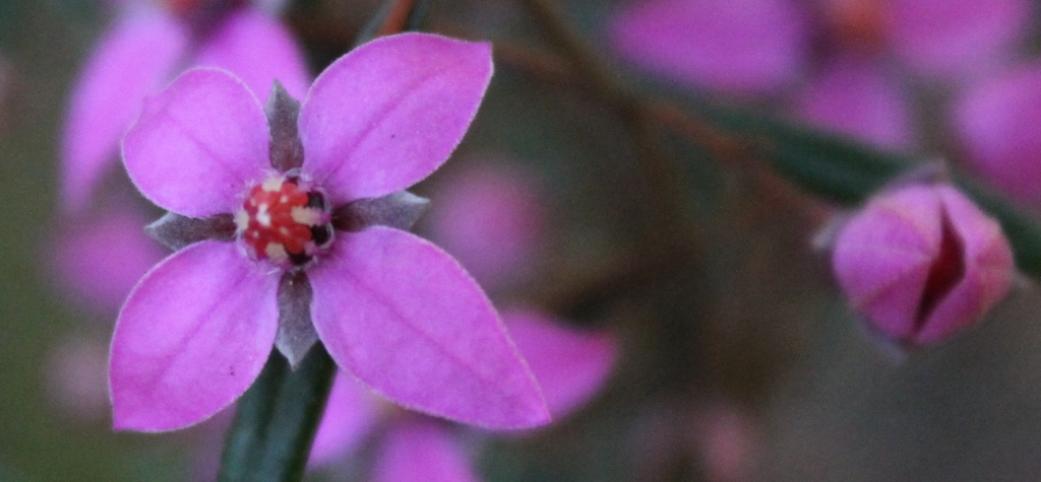
Boronia ledifolia - Sydney Boronia - photographed at Ingleside
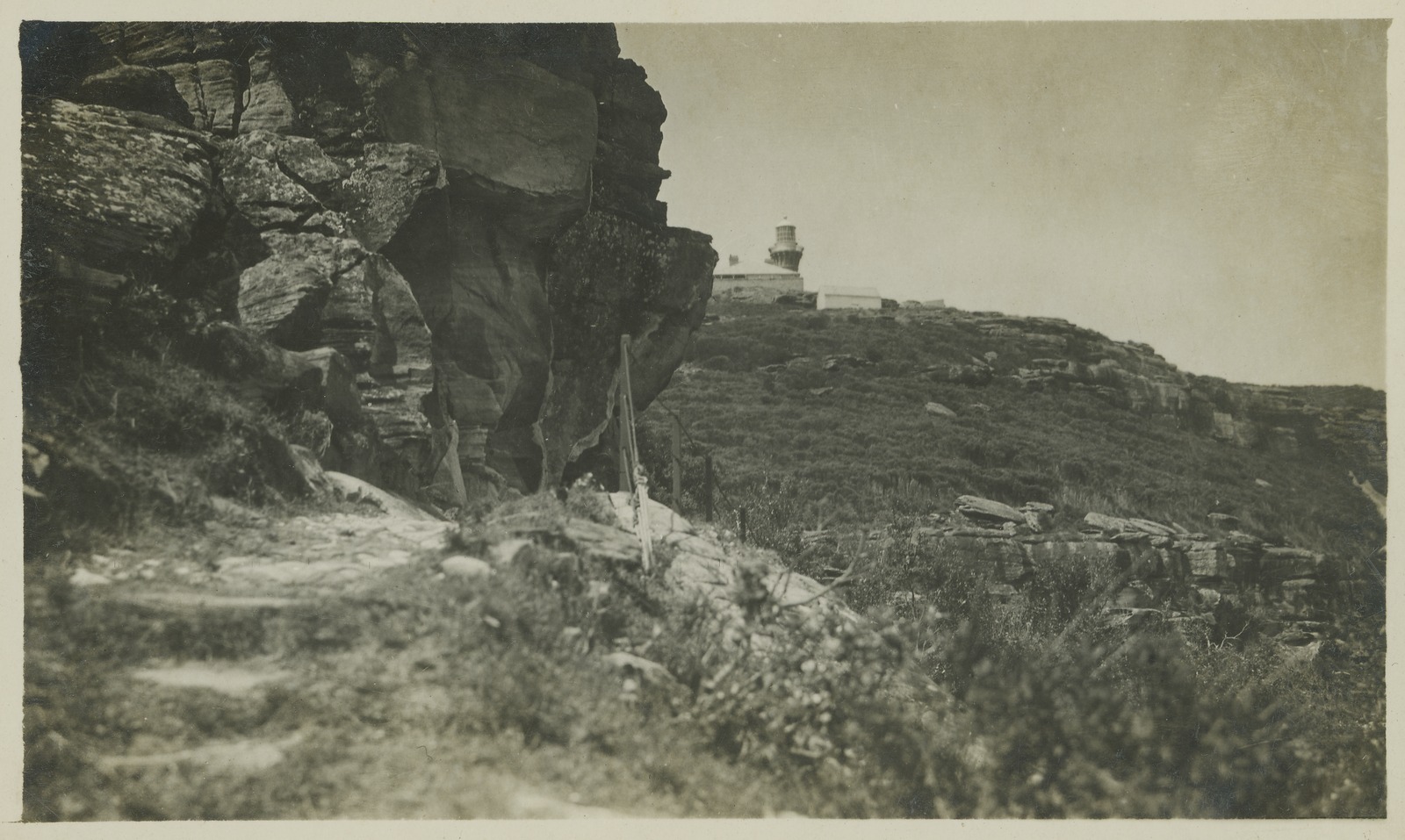
Barren Joey Lighthouse (Burrin Ju) [picture]. A. J. Vogan (Arthur James), 1859-1948,[ca. 1910 - ca. 1915] Image H82.254/8/34, courtesy State Library of Victoria.
What are auroras, and why do they come in different shapes and colours? Two experts explain

Over millennia, humans have observed and been inspired by beautiful displays of light bands dancing across dark night skies. Today, we call these lights the aurora: the aurora borealis in the northern hemisphere, and the aurora australis in the south.
Nowadays, we understand auroras are caused by charged particles from Earth’s magnetosphere and the solar wind colliding with other particles in Earth’s upper atmosphere. Those collisions excite the atmospheric particles, which then release light as they “relax” back to their unexcited state.
The colour of the light corresponds to the release of discrete chunks of energy by the atmospheric particles, and is also an indicator of how much energy was absorbed in the initial collision.
The frequency and intensity of auroral displays is related to activity on the Sun, which follows an 11-year cycle. Currently, we are approaching the next maximum, which is expected in 2025.
Connections To The Sun
Such displays have long been documented by peoples throughout North America, Europe, Asia and Australia.
In the 17th century, scientific explanations for what caused the aurora began to surface. Possible explanations included air from Earth’s atmosphere rising out of Earth’s shadow to become sunlit (Galileo in 1619) and light reflections from high-altitude ice crystals (Rene Descartes and others).
In 1716, English astronomer Edmund Halley was the first to suggest a possible connection with Earth’s magnetic field. In 1731, a French philosopher named Jean-Jacques d'Ortous de Mairan noted a coincidence between the number of sunspots and aurora. He proposed that the aurora was connected with the Sun’s atmosphere.
It was here that the connection between activity on the Sun was linked with auroras here on Earth, giving rise to the areas of science now called “heliophysics” and “space weather”.
Earth’s Magnetic Field As A Particle Trap
The most common source of aurora is particles travelling within Earth’s magnetosphere, the region of space occupied by Earth’s natural magnetic field.
Images of Earth’s magnetosphere typically show how the magnetic field “bubble” protects Earth from space radiation and repels most disturbances in the solar wind. However, what is not normally highlighted is the fact that Earth’s magnetic field contains its own population of electrically charged particles (or “plasma”).
The magnetosphere is composed of charged particles that have escaped from Earth’s upper atmosphere and charged particles that have entered from the solar wind. Both types of particles are trapped in Earth’s magnetic field.
The motions of electrically charged particles are controlled by electric and magnetic fields. Charged particles gyrate around magnetic field lines, so when viewed at large scales magnetic field lines act as “pipelines” for charged particles in a plasma.
The Earth’s magnetic field is similar to a standard “dipole” magnetic field, with field lines bunching together near the poles. This bunching up of field lines actually alters the particle trajectories, effectively turning them around to go back the way they came, in a process called “magnetic mirroring”.
Earth’s Magnetosphere In A Turbulent Solar Wind
During quiet and stable conditions, most particles in the magnetosphere stay trapped, happily bouncing between the south and north magnetic poles out in space. However, if a disturbance in the solar wind (such as a coronal mass ejection) gives the magnetosphere a “whack”, it becomes disturbed.
The trapped particles are accelerated and the magnetic field “pipelines” suddenly change. Particles that were happily bouncing between north and south now have their bouncing location moved to lower altitudes, where Earth’s atmosphere becomes more dense.
As a result, the charged particles are now likely to collide with atmospheric particles as they reach the polar regions. This is called “particle precipitation”. Then, when each collision occurs, energy is transferred to the atmospheric particles, exciting them. Once they relax, they emit the light that forms the beautiful aurora we see.
Curtains, Colours And Cameras
The amazing displays of aurora dancing across the sky are the result of the complex interactions between the solar wind and the magnetosphere.
Aurora appearing, disappearing, brightening and forming structures like curtains, swirls, picket fences and travelling waves are all visual representations of the invisible, ever-changing dynamics in Earth’s magnetosphere as it interacts with the solar wind.
As these videos show, aurora comes in all sorts of colours.
The most common are the greens and reds, which are both emitted by oxygen in the upper atmosphere. Green auroras correspond to altitudes close to 100 km, whereas the red auroras are higher up, above 200 km.
Blue colours are emitted by nitrogen – which can also emit some reds. A range of pinks, purples and even white light are also possible due to a mixture of these emissions.
The aurora is more brilliant in photographs because camera sensors are more sensitive than the human eye. Specifically, our eyes are less sensitive to colour at night. However, if the aurora is bright enough it can be quite a sight for the naked eye.
Where And When?
Even under quiet space weather conditions, aurora can be very prominent at high latitudes, such as in Alaska, Canada, Scandinavia and Antarctica. When a space weather disturbance takes place, auroras can migrate to much lower latitudes to become visible across the continental United States, central Europe and even southern and mainland Australia.
The severity of the space weather event typically controls the range of locations where the aurora is visible. The strongest events are the most rare.
So, if you’re interested in hunting auroras, keep an eye on your local space weather forecasts (US, Australia, UK, South Africa and Europe). There are also numerous space weather experts on social media and even aurora-hunting citizen science projects (such as Aurorasaurus) that you can contribute towards!
Get outside and witness one of nature’s true natural beauties – aurora, Earth’s gateway to the heavens.![]()
Brett Carter, Associate Professor, RMIT University and Elizabeth A. MacDonald, Space Physicist, NASA
This article is republished from The Conversation under a Creative Commons license. Read the original article.
Big-picture thinking: in The Bell of the World, Gregory Day listens to the music of common things
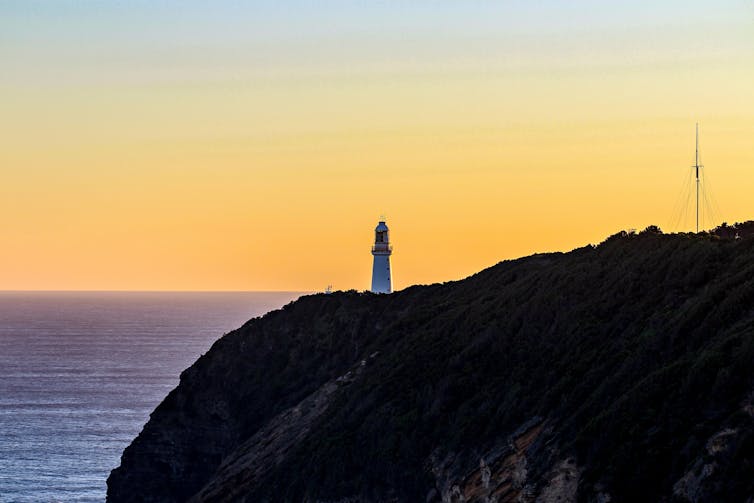
Gregory Day’s The Bell of the World is an ambitious, strange and marvellous novel.
Day has long carried out a determined and idiosyncratic writing practice of paying attention, in writing, to where he lives on Wadawurrung and Gadubanud Country. In the introduction to his excellent collection of nature writing, Words are Eagles, he considers the complexity of
writing in this polyphonous country that is now Australia […] How to describe it without betraying it. How to love it without destroying it. How to learn from it and listen to the lessons it has to impart.
In The Bell of the World, he gives this project full flight.
Review: The Bell of the World – Gregory Day (Transit Lounge)
The vehicle for the novel’s exploration of the loving and fraught entanglements of art and nature, human and non-human, in settler-colonial Australia is Sarah Hutchinson, a very odd girl living some time in the early 20th century.
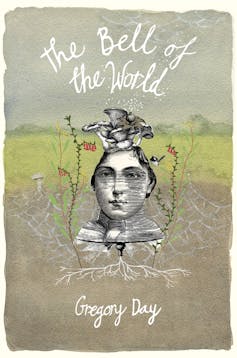
As readers, we are used to developing a sense of character with reference to how someone interacts with the social world. With Sarah Hutchinson, Day attempts something quite different. Sarah is unmoored from her social context or situation for much of the first part of the novel.
To apprehend a character whose main points of reference are in the natural rather than the social world is a difficult task for novelist and reader alike, and I struggled with Sarah for much of this section. She is first flung out of an unloving family into a miserable British boarding school, then into the milieu of her loving uncle Ferny – a cosmopolitan, queer farmer and naturalist, who is residing in Rome with his battered copy of Joseph Furphy’s Such is Life.
Ferny’s posse of artist friends provide Sarah with a thrilling but destabilising education. This rackety way of learning about how to be with others leaves Sarah in a state of deep distress akin to trauma, as she is deposited in a house in the bush with a woman who has much deeper roots in that place than Sarah and her family. She emerges from this trauma by means of being outside and seeing what is there.
The novel proceeds to set out a philosophy for a way of living and writing that Day has practised throughout his career to date. It stresses the importance of attending to a particular place and its ecology with detail, care, respect and humour. Sarah learns to do this on the Ngangahook Run: land farmed by her family for generations, which seems, at first, to promise an arcadia where art, nature and love can coexist.
A Unique Perspective
The Bell of the World forces the reader to slow down and attend. Sarah’s is a unique perspective. Everyday activities become odd and multifaceted when seen through her eyes. Adjectives abound: a journey in a gig becomes “a shawled and shuddery survey of the nearby but seldom-seen ground”. The effect is a little like reading Patrick White: there is so much – sometimes too much – inner consciousness sparking off and interpreting the world in novel ways that the larger sense of what is happening and who is apprehending it recedes.
Day is at his best when he grounds his runaway multidirectional novel. Concrete but resounding moments of social interaction reveal multitudes about the world in which Sarah is jangling around, and about why the novel’s philosophical argument about nature is so important.
One such moment is a conversation about the bell that some locals want to build in the church. Sarah’s uncle Ferny tells them straight: for the Aboriginal people of the region, the bell would sound not of progress but brutality. The bell is an imposition of settler-invader voice across the ecology of the place, and one that resounds with memories of colonial violence for the local First Nations people.

The bell proponent proceeds with an expectation that he will not be brooked; Ferny, with a sentence, brooks him. This sets off a cascade of events that upends Sarah’s sense of her relation to the world.
The novel expresses a profound optimism about the prospect of a settler-invader way of being with nature in Australia that does not seek to dominate but to know and care for it. This optimism is tempered by reminders of how alien this way of being seems to a culture grounded in the domination of others. The reader is immersed in Sarah’s first-person perspective for such a long stretch that we could forget that she doesn’t know a lot about the community of people in the town. Her shock, when their distrust of difference explodes into violence, is ours too.
Infra-Ordinary
At one point, Sarah’s meandering internal monologue settles on the term “endotic”, which she says is “the opposite of exotic”. The word just sits there, confusing. It is not listed in the OED. It sent me down a rabbit hole that led to the musings of the French experimental writer Georges Perec about an anthropology of the “infra-ordinary”. In 1973, Perec asked:
How are we to speak of these “common things”, how to track them down rather, flush them out, wrest them out from the dross in which they remain mired, how to give them a meaning, a tongue, to let them, finally, speak of what is, of what we are. What’s needed, perhaps is finally to found our own anthropology, one that will speak about us, will look in ourselves for what for so long we’ve been pillaging from others. Not the exotic any more, but the endotic.
Gregory Day’s writing has long been interested in the “infra-ordinary”. It draws together the everyday detail of both human and non-human lives. Day’s curiosity about language is annoyingly infectious, and has me thinking about the complexity of the idea of the “endotic” in a settler-colonial context, entangled in the fraught nature of terms like invasive, introduced, native species. What he is trying to do here is imagine what the endotic might mean in this place. It is big-picture thinking.
The means by which Day carries out this experiment is primarily aural: moments of numinous experience for Sarah are tethered to “sound-made matter”. This is absolutely quotidian: creaking harnesses, swearing men, rustling grass. Sarah is trying to find a way to allow the sounds of the natural world, “the wild and ferny worlds upstream, to intervene”.
The Bell of the World is also full of tender, understated interpersonal relationships, which take place against the backdrop of receptive natural worlds and dysfunctional social ones. These relationships are observed in their dailiness, placed on an equal footing with observations of the non-human life on the Ngangahook Run.
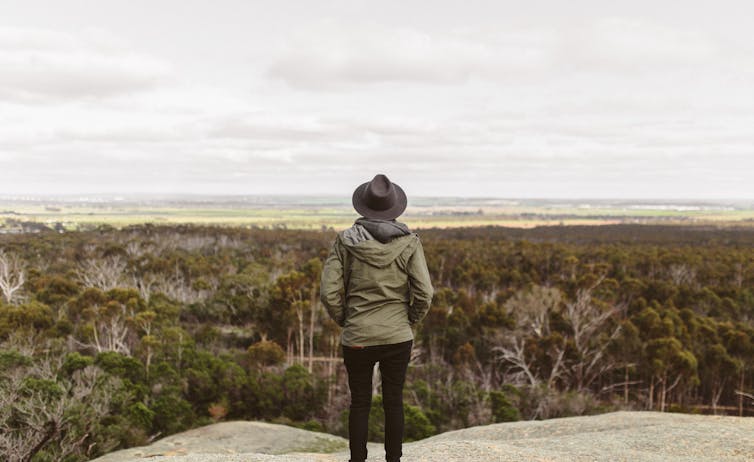
The Music Of Place
The closing chapters of The Bell of the World are breathtaking. They involve two contrasted set-pieces of communal listening: one in a city concert-hall (a collision of real and fictive worlds), the other as dusk falls on the Ngangahook Run. Literature points us to music as an art that enables its audiences to listen to the world around them. It encourages them to hear the oldest stories of this place, and new ones too.
In this sense, Day is echoing what First Nations writers in Australia have been saying with their work for decades now: listen to this place and the people who belong here. Pay attention! The Bell of the World models a ceding of authority that is grounded in the belief that forms of connection – underground, across air and ocean – are possible.
The notion of artistic production that emerges from the pages of The Bell of the World is not one of solitary genius, but rather of an artist in deep conversation with the plants, animals and soil around him, as well as with the works of other artists near and far. Day’s novel is clearly in conversation with Joseph Furphy, Herman Melville and Patrick White, but it also seems to me to be carrying on a more profound conversation with other big (in all senses of the term) novels of recent decades: those of Alexis Wright and Kim Scott.
The tragic-comic presentation of parochial yet homicidal townsfolk, the attempts to centre attachment to place and have the living ecology of that place fill the page, the use of disorienting narrative modes, the scenes of failed and hopeful listening – all of these things suggest to me that Day is a novelist who has been doing some good listening of his own.
There is a joyful and laudable ambition to this novel, which seeks to tell a big and true story about being in this place, while pointing to how it might be possible to make and attend to art in it. In the course of one of its many reported conversations about fiction itself, its characters speak about writing which might at once hold “much humorous companionship” and be “a lively and enigmatic seedbank” for ideas and ways of seeing. The Bell of the World finds an unruly way of being both.![]()
Julieanne Lamond, Senior Lecturer in English, Australian National University
This article is republished from The Conversation under a Creative Commons license. Read the original article.
The yolk’s on you: a brief history of throwing food and drink on people as protest

Last weekend, anti-trans campaigner Kellie-Jay Keen-Minshull, better known as Posie Parker, arrived to speak at a rally in Auckland, which was surrounded by supporters of trans rights. During this rally and counter-protest, Keen-Minshull was doused in tomato juice, while other reports claim eggs were also thrown at her.
Many people made connections with other incidents where controversial (often racist or homophobic) figures were hit with food in public. This included when American anti-gay campaigner Anita Bryant was hit in the face with a cream pie on television in 1977, Australian far right politician Fraser Anning was egged in 2019 and the Brexit Party’s Nigel Farage was “milkshaked” while campaigning in the UK during the 2019 European Union Parliament elections.
The juice tipped over Keen-Minshull is part of a long legacy of politicians and controversial public figures being hit with food stuffs during protests against them.
A Delicious Symbol Of Protest
As Ekaterina Gladkova has written, food has long been a potent symbol for protest. Writing about food riots in the 18th century, social historian E.P. Thompson suggested that food formed part of the “moral economy” and food prices were central to lower class protest in England.
Food is also used in protest as a symbol of moral rejection, with eggs, tomatoes and other soft and sticky food stuffs thrown at public figures. Often soaking or staining the figure in question, the purpose of throwing food is not to hurt them, but to humiliate them. To make disagreeable figures into those of ridicule and to demonstrate people’s moral objection to their presence in public.

Throughout the 20th century, many different groups flung food at people in protest, particularly at politicians. In 1910, the British suffragette Ethel Moorhead threw an egg at Winston Churchill when he was home secretary. This was in response to the treatment of suffragettes in prison, including the force-feeding of hunger strikers.
In 1960, then-US Vice President Richard Nixon was pelted with eggs and tomatoes while campaigning in Chicago. In Britain during the 1970s and 1980s, visits by right-wing politicians on university campuses saw several incidents of food stuffs hurled. Sir Keith Joseph, one of Margaret Thatcher’s earliest supporters, had flour bombs and eggs thrown at him at Essex University in 1977. Home Office minister David Waddington was covered in beer in December 1985 when he visited Manchester University. The following year, Enoch Powell was hit with a ham sandwich during a speech at Bristol University.

A Nice Egg In This Trying Time
Australian politicians have also fallen victim to eggings over the decades. One of the most infamous eggings was of Prime Minister Billy Hughes in 1917 in Queensland. Hughes, campaigning to introduce conscription during the first world war, responded by calling for the launch of the Commonwealth Police Force (the predecessor to the Australian Federal Police).
In the late 1970s and early 1980s, then-Prime Minister Malcolm Fraser was egged on several occasions. In 1979, activists protesting against unemployment threw eggs at Fraser, reportedly shouting, “Feed the rich!” In 1981, students protesting against fees launched tomatoes and eggs at him when he arrived at Macquarie University.
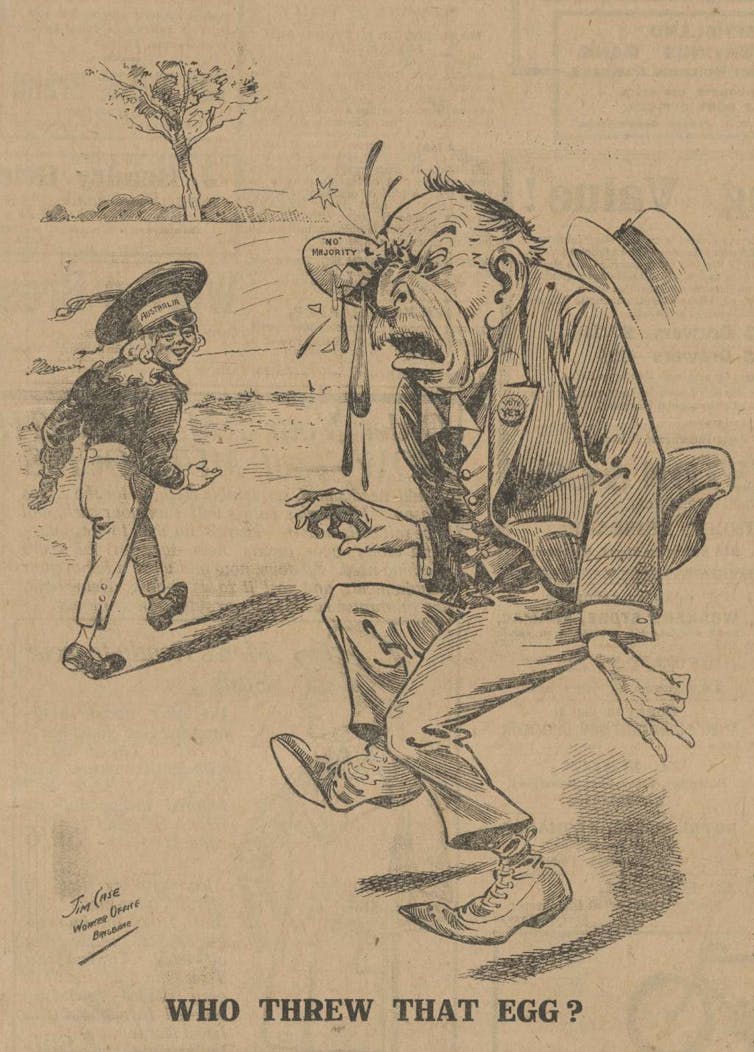
Throwing food stuffs has been a particular means of protesting the far right over the years, too. In Britain during the 1930s, anti-fascists threw various foods at Oswald Mosley’s British Union of Fascists at different meetings. At the legendary Battle of Cable Street in London in 1936, there are various accounts of eggs, flour and rotten food being chucked at fascists and the police.
After the war, Mosley still attracted protests involving food. When speaking at the Cambridge Union in 1958, he was hit in the face with a custard pie. Speaking to the same union two years later, Mosley was slapped with a jelly across the face. The Cambridge student newspaper, Varsity, reported the protester shouted, “have a jelly my friend”, as he thrust the green jelly towards the fascist leader.

The Milkshake: The Anti-Fascist Cultural Symbol
In more recent times, the British National Party’s Nick Griffin was egged as he tried to hold a press conference in 2009. In France, the Front National’s Marine Le Pen, once a close ally of Griffin, has been egged several times on the campaign trail, including in 2017 and 2022. In 2019, former English Defence League leader Tommy Robinson, UKIP candidate (and YouTuber) Carl Benjamin and Nigel Farage all become casualties of milkshaking, with the milkshake briefly becoming an anti-fascist cultural symbol. \
Australia’s far right has also been of the receiving end of food being thrown by anti-fascists. When National Action attempted a public action in the Melbourne suburb of Brunswick in 1994, protesters heaved eggs, tomatoes and horse manure at them. It was reported that their leader, Michael Brander, was hit in the mouth with an egg, leading to Channel Nine to replay footage under the caption “hole in one”.
And, of course, former far right Senator Fraser Anning had an egg cracked over the back of his head by a teenage boy in 2019.
Humiliation, Not Violence
Some in the past have complained that eggings and milkshakings are a form of political violence. However, defenders of those who have thrown food at public figures have argued that these are non-violent forms of protest.
As numerous incidents demonstrate, the flinging of food is designed the humiliate, not injure. Compared with the prospect of violence from the far right, immersing political opponents in sticky and smelly food is relatively minor. The tossing of food at politicians and other controversial figures is symbolic of a moral objection to their politics and presence in public spaces.
After the egging of Nick Griffin, Gerry Gable, the long-time editor of the UK anti-fascist magazine Searchlight, wrote that while seeing foodstuffs being dumped over Griffin’s head “certainly brought a smile to many people’s face,” it was “going to take more than a few well-aimed eggs and worthy placards to finish the BNP for good”.
This is certainly the case, but the throwing of food is an act of protest that demonstrates disgust at the target. In the age of social media, where protest actions can be shared by millions, lobbing an egg, tomato or milkshake can be a feat of defiance against politicians, bigots and other objectionable characters.![]()
Evan Smith, Lecturer in History, Flinders University
This article is republished from The Conversation under a Creative Commons license. Read the original article.
Kenzaburō Ōe: a writer of real humanity and the real Japan
Filippo Cervelli, SOAS, University of LondonThe death at 88 of Japanese writer and Nobel prize winner Kenzaburō Ōe on March 3 leaves a deep wound in his readers. But also in the Japanese community, which has lost one of its most powerful voices and critics.
Ōe was a literary giant. In Japan open political discussion and participation is discouraged and the media is often influenced by the government. Ōe was the last politically engaged Japanese postwar writer.
In his sharp, often merciless, commentaries of his country, he criticised factors damaging democracy and human rights, including nationalistic governmental policies, the presence of dangerous atomic power plants and the imperial system.
He even refused the award of the national Order of Culture, an honour bestowed by the emperor. Due to his open democratic commitment, he faced violent threats from right-wing organisations and was even brought to trial.
On and off the page, he combined an attentive focus on Japan with a profound knowledge of Western thought and expression, ranging from French philosophy (he graduated with a thesis on Sartre) to modern and classical authors such as TS Eliot and Dante Alighieri. This made him one of the few Japanese intellectuals whose work resonated with global questions of identity, injustice, and the search for home.
Bravely Depicting Postwar Japan
Born in 1935, Ōe started publishing in his twenties. His early work explored the relationship between disenfranchised individuals and authoritarian power.
In his first short story An Odd Job (1957) students are hired to help slaughter 150 dogs used by the faculty of medicine for experiments. The students’ predicament, ominously resembling that of the animals, speaks to his own postwar youth.
Japan in the 1950s was bereft of strong ethical and political models after the defeat of its nationalistic collective ideology in the Pacific war and the subsequent American occupation. Left without a definite identity and purpose, like Ōe’s generation, the youths in the story are at the mercy of an absurd system where they do not feel represented.
Ōe’s story Seventeen (1961) can be read as an extreme consequence of his first. The disenfranchised youngster here finds solace in abandoning his individuality to the intoxicating violent practices of a burgeoning imperialist nationalistic group.
Ōe’s career was shaped by his reflections on Japan’s incapacity (and unwillingness) to confront itself, acknowledge its war crimes and identify its position in Asia.
Upon being awarded the Nobel Prize in 1994, he spoke of “ambiguity” in Japan as a “chronic disease that has been prevalent throughout the modern age”. In his lecture, he referenced another Nobel speech by Yasunari Kawabata, the only Japanese writer to win the prize before him in 1968, entitled Japan, the Beautiful and Myself. Ōe’s was titled: Japan, The Ambiguous, and Myself.
By using the term “ambiguous” in response to the “beautiful” in Kawabata’s speech, Ōe placed himself in the history of global Japanese literature by distancing his work from the aesthetic representation of Japan that had dominated its cultural image abroad. This representation was of a country made of Zen Buddhism, tea ceremonies and a placid appreciation of transient beauty (among others).
The Multiplicity Of Humanity
As well as presenting the country as he honestly saw it, he also foregrounds ambiguous and silenced Japanese identities.
Prize Stock (1958), which earned him the coveted Akutagawa Prize, launched him into literary prominence. This story depicts the encounter between a Japanese boy and a black prisoner of war in his island village.
In Japan, urban dwellers could discriminate against those from a rural background – a background that Ōe possessed growing up in Shikoku, the southern and smallest peripheral island in the main archipelago. In this story, the townspeople treat the villagers “like dirty animals” and in turn, the villagers refer to the black prisoner in the same way. Prize Stock is a discomfiting story about abuses of power and how everyone is capable of it.
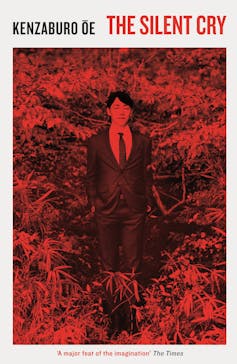
Such exploration of the multiplicity of Japanese identity continued intersecting with reflections on space in his work.
The Silent Cry (1967) and Death by Water (2009) intertwine the stories of marginalised communities with folklore and tales of their ancestors’ uprising against local authorities. These novels highlight peripheral Japanese heritage and memories. They are also indicative of how the rural is never a simplistic idyll countering the suffocating corruption of the city in Ōe’s work. Instead, the rural is an organic alternative still replete with violence and discrimination, so nonetheless vibrant and real.
In Ōe’s work, the rigorous descriptions of all sides of human nature – light and dark, grotesque and cruel – offer possible reconciliation between seemingly opposing factors. Ōe saw his literature as a humanistic endeavour to represent human suffering and explore possibilities of healing.
In his commitment to writing honestly, he never shied away from his personal crises. He wrote often about the birth of his mentally disabled son Hikari, which generated the novel A Personal Matter (1964) and many others.
The acceptance of the coexistence of life with fatality inspired his subsequent essay collection Hiroshima Notes (1965), where he reflects on the political instrumentalisation of atomic bomb victims and underscores the need to respect their right to silence. His condition as a struggling father intersects with the meditation on those affected by man-made disasters in the atomic age, where annihilation can come suddenly. For Ōe, notwithstanding the scale, it was always a personal matter.
Now Ōe has probably “gone up” to the trees of his beloved native forest, to which, legends say, souls return after leaving the bodies. For us that remain, his memory will hopefully motivate a (re)discovery of his imaginative yet real portrayals of Japan and life, so powerful because they were so unapologetically human.![]()
Filippo Cervelli, Lecturer in Modern and Contemporary Japanese Literature, SOAS, University of London
This article is republished from The Conversation under a Creative Commons license. Read the original article.
This Buddhist sculpture probably won’t ‘rewrite history’ – Western Australia already has a rich Chinese past

Does the discovery of a Ming Dynasty Buddha sculpture found near Shark Bay in remote Western Australia “rewrite history” and suggest the Chinese first visited Australia 600 years ago?
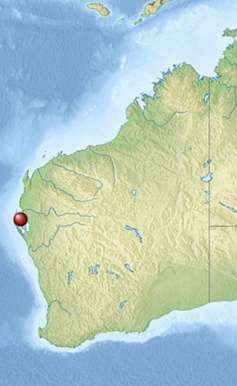
Probably not. The fleets of Ming admiral Zheng He are said to have had the engineering strength to navigate treacherous seas, but no solid archaeological evidence can confirm they ever visited Australia.
But even without this evidence, there is a long history of Chinese people in WA that may explain the presence of the Buddha.
Ian MacLeod of the Western Australian Museum identified that the Buddha was buried between 100 and 150 years ago.
Indeed, there was a large Chinese community living in Shark Bay in the late 1800s.
Asians In Australia
Asian boats visited Australia’s north and northwest coasts long before the first European settlements popped up in WA in the late 1820s.
From as early as the 1500s to 1906, hundreds of fisherpeople from Makassar on Sulawesi and other islands in today’s Indonesia made annual voyages to northern Australia, especially the Kimberley region and Arnhem Land. Some Makassans married Aboriginal Australians.
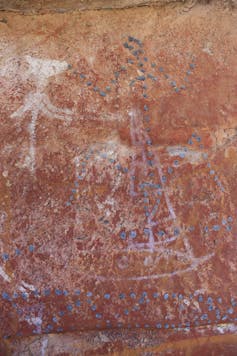
These fisherpeople were professional collectors and traders of trepangs, or sea cucumbers, highly prized in China.
Makassans bridged trade between Australia and China, and they may have brought Chinese traders – in Makassar at least since 1656 – to Australia in the 17th century or earlier.
However, no current archaeological evidence can support this.
Chinese Western Australians Before 1901
The first documented Chinese Western Australian, Moon Chow (周满), arrived in 1830. A skilful carpenter in the newly established Swan River Colony, Moon Chow married, had kids and lived in Fremantle until he passed away in 1877.
In the early 1870s, a bustling pearling camp emerged at Notch Point on Dirk Hartog Island, Shark Bay, featuring a Chinese settlement called the “Canton”.
Historian Anne Atkinson gathered the stories of some of these migrants in her book Asian Immigrants to Western Australia. We have recently digitised the Atkinson Collection and have analysed the information on people of Chinese heritage present in Shark Bay before 1900.
Most of these individuals were involved in the pearling industry, owning boats and gear or working for local pearlers. One local, Ah Wee, owned two pearling boats, pearling gear, two dinghies, two iron houses and livestock worth a total of £117 in 1886.
His family, and a number of others, were more than affluent enough to have owned the Buddha sculpture.
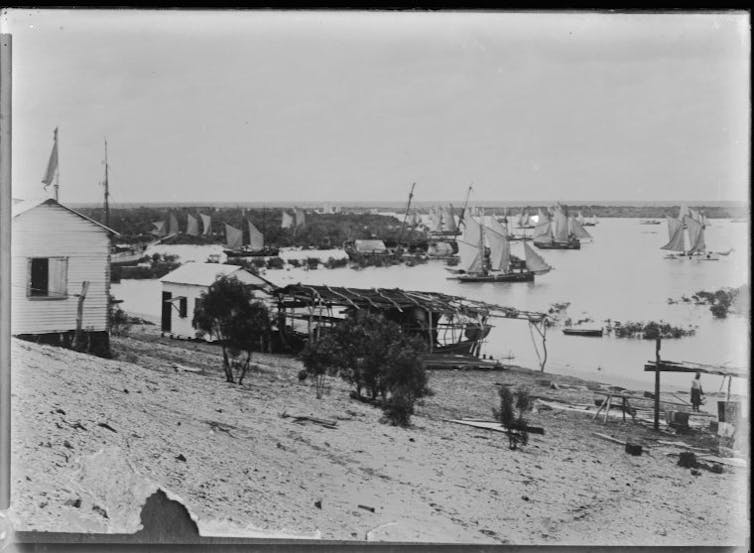
Other members of the community were employed in diverse roles such as cooks, sandalwood workers, station hands and general servants. Many are recorded as owning houses made from canvas or hessian. A few who were more affluent owned corrugated iron houses.
Life in Shark Bay was challenging for many Chinese Western Australians in the 1800s. The Atkinson records reveal the prevalence of violence, including murders, suicides and suspicious deaths.
Chou Jum (Jim) Chu, Lo Yu Kwong and U.A. Tong were sandalwood workers employed by Leopold von Bibra at Wooramel, Shark Bay in the early 1880s. Jim Chu died in 1884 while working. His two Chinese friends testified he had been murdered by von Bibra.
The court case provides glimpses into the complexities of Chinese life in Shark Bay: unequal pay, difficult work conditions, systemic racism and regular disputes with employers over working conditions.
As with so many similar cases where abuse of Chinese labourers was alleged, von Bibra was found not guilty.
The Canton continued to be home to a large number of Chinese pearlers until the local European pearlers in Shark Bay established the “European Association” in 1886 and pressured the government to exclude Chinese and Malays from the local pearling industry.

Their lobbying paid off, leading to a violent and brutal closure of the Canton, home to 102 Chinese and 68 Malays at the time. Some left Australia; many moved down to Perth and became market gardeners; others went to work on cattle stations as labourers or cooks.
Hae Sam was a fisherman in Shark Bay from 1873 to 1876. He then became a market gardener in Cannington and then Maylands in the 1880s, before owning a fruit and vegetable shop in Fremantle in 1890.
His descendants still live in WA.
Continuing Connections
The White Australia policy, enshrined in law shortly after the Commonwealth of Australia’s inauguration in 1901, overshadowed the diverse interactions between Australia and Asia in previous centuries.
At the time of federation, 1,459 male and 16 female WA residents were identified as born in China.
During the initial period of the White Australia policy, due to a desire to alleviate labour shortages, WA offered a relatively welcoming atmosphere for Chinese workers, compared with the eastern states.
As a result, the first commonwealth census in 1911 revealed a small but growing China-born population in the state, with 1,601 males and 20 females.
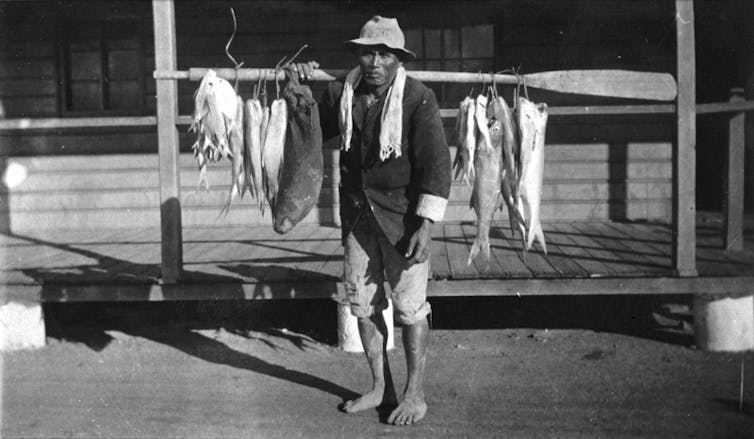
As the White Australia policy persisted, the China-born population in WA experienced a sharp decline from the 1920s onwards, dropping to just 227 males and 86 females in 1961, when the population reached its lowest point.
Although the White Australia policy ended in 1966, it was not until the 1991 census that the number of China-born WA residents surpassed the figure reported in the 1911 census.
In the 2021 census there were 28,415 China-born WA residents, among whom 36.7% were Australian citizens.
Regardless of when and how the Buddha sculpture arrived in Shark Bay, it reminds us of the long and changing history of Australia-Asia connections.![]()
Yu Tao, Senior Lecturer in Chinese Studies, The University of Western Australia and Benjamin Smith, Professor of Archaeology (World Rock Art), School of Social Sciences, The University of Western Australia
This article is republished from The Conversation under a Creative Commons license. Read the original article.
Pip Williams shows how World War I transformed women’s lives, in a new novel that captures the ‘poetic materiality’ of books

Pip Williams describes her new novel, The Bookbinder of Jericho, as both follow-up and companion to her 2020 debut, The Dictionary of Lost Words.
There is an overlap of place and profession, and some shared characters, between the novels. The Dictionary of Lost Words began in the late 19th century and covered several decades. The Bookbinder of Jericho illuminates a key period of history experienced by the characters in the previous book: it spans 1914 and the start of the World War I, finishing in the new world that had begun emerging by 1920.
Review: The Bookbinder of Jericho – Pip Williams (Affirm Press)

Both novels are located in Oxford; both are set within the publishing industry – on the creation and editorship side for Dictionary of Lost Words, and on the production side for The Bookbinder of Jericho. Both are told through the experiences of young women who participate in the book world: the former as daughter of one of the editors of the Oxford English Dictionary, the latter as a bookbinder for Oxford University Press, which printed the dictionary.
Both novels, therefore, inhabit a world of language, meaning-making and storytelling. And both women are keen social critics, captivated by the nature and the effects of written language.
Bindery Girls
Peggy, the eponymous “bookbinder”, lives with her identical twin sister Maude in Jericho, a fringe suburb built on the banks of the canal on the edge of Oxford, prone to flooding and disease. As an industrial area, it was also the location for Oxford University Press, and hence a convenient home for its staff.
Peggy and Maude live on the canal, in a houseboat their mother named “Calliope” after the muse of poetry: appropriate enough, since the boat is crammed with books, manuscripts and sections, all of them products of the literary impulse.
The orphaned daughters of an Oxford scholar (their otherwise unidentified father) and a former bindery girl, they work side by side in the Clarendon Press, doing “women’s work”: folding the printed sheets into sections, gathering sections into text blocks, and stitching the blocks before they are bound and sent into the world.
Peggy feels bound herself – to her sister Maude, for whom she has adopted the role of carer. Williams describes Maude, who communicates through echolalia, the repetition of heard fragments, as autistic. As Peggy insists, Maude “wasn’t simple, despite what people thought”. Rather, she possesses the ability to focus entirely on what fascinates her. She can fold pages and napkins and birds with a skill approaching art – and though occasionally she forgets what she’s folding, and transforms a folio into a fan, Peggy is always ready to fix the problem.
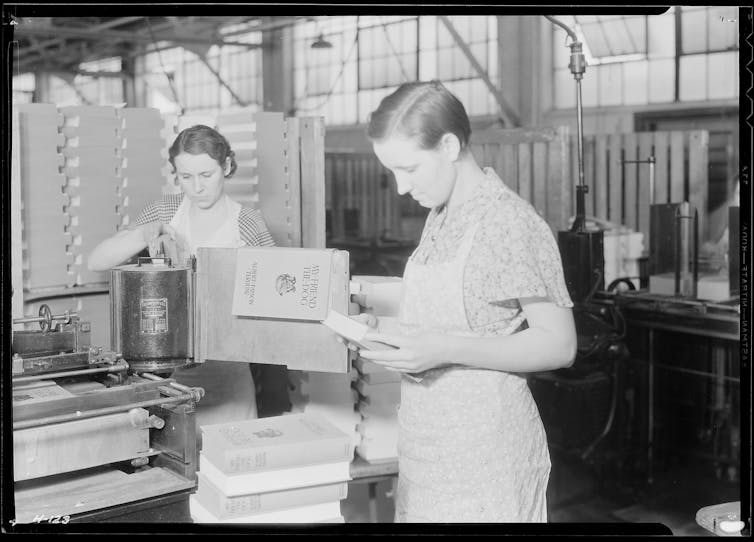
Peggy is also bound by the limitations of her class and gender. Though she’s possessed of a fine intellect, her education was very limited, and she can’t imagine even being approved to enter the nearby women’s college, let alone become a student. She is definitively Town; they are Gown. And as a mere bindery girl, she is considered good enough only to fold printed sheets into what will become a book.
This she finds immensely frustrating, as we see on the first page of the preface. “Scraps”, she says. “That’s all I got. Fragments that made no sense without the words before or the words after.” And that is indeed all she gets because, as the forewoman scolds, “Your job is to bind the books, not read them”.
But as a bindery girl, Peggy is skilled at reading “upside down and sideways”, a skill that is both truth and metaphor, since it signals her ability to see from a different point of view. Which she does: her perspective is different from her peers in the Press, from her managers, and from the refugees and wounded soldiers she will support.
Women And World War I
A rich cast of characters inhabit the novel. One is Lotte, a Belgian refugee from Louvain, where she was university librarian; she has seen what no one should see. Another is Gwen, an Oxford student who wears her privilege lightly and, with Peggy, works as a volunteer to support the wounded.
Among those is Peggy’s love interest Bastiaan, introduced as “the Invisible Man”, who gradually returns, broken and scarred, to himself. And actor and activist suffragette Tilda, who first appeared in the Dictionary of Lost Words, emerges now as the twins’ “aunt”, probably their mother’s lover. Here she serves as a nurse on the front.

Through the eyes and accounts of each character, a different perspective is offered on the seemingly endless narrative of that war; a perspective that is upside down and sideways, perhaps; a perspective Williams brings to the role of women in this war.
Her women don’t remain in the traditional roles of nurse or grieving mother, but are full participants. They have faced the guns, they are on the frontlines trying to keep soldiers alive. On the home front, they are running the factories, rehabilitating the wounded and the traumatised.
But her account can’t avoid what we know so well about that catastrophic war: all its pointlessness, all the loss. Toward the end, when Spanish flu had added to the misery, and deaths were multiplying at home as well as on the war front, and Peggy’s aspirations to enter university seem to have been quashed, she reflects on the limits of language in the face of such experiences:
Loss. The Concise Dictionary simply defined it as: Detriment, disadvantage. See lose, the entry said. I turned back a few pages. Lose: Be deprived of, cease by negligence, misadventure, separation, death. It didn’t quite explain the feeling I had.
That “feeling” runs like a thread from the very first line of the novel to (almost) its end, because her sharp intelligence combined with her illegitimate birth and her poverty add up to a life of thwarted expectations.
Still, she says, “I want more”, but then adds, “Who doesn’t?” And sometimes we do get a little more. Peggy’s empathy and reflexivity, her capacity to observe closely and to make sense of literature and argument, highlights the “more” that is rapidly approaching for her and other women. The right to vote. Changing social mores and hierarchies. A gradual decolonising of the world and of individuals’ minds.
The Poetic Materiality Of Books
This is a hopeful story. But for me, despite the excellent crafting of this narrative of social history, what makes it stand out is its unwavering attention to books, and the making of books. Williams beautifully describes the practices and traditions and rituals associated with what was a trade, then a craft, and is now an increasingly arcane art.
Her focus is on the women’s side of the business, but it recognises the work of writers, readers, editors, compositors, foundry men, mechanics, press specialists: all the army of experts required in the process of moving from idea to material object.
The materiality of books and of the tools used in their construction is also beautifully depicted. She notes the density of rag paper; the swirl of a typeface; the heft and texture of a bone folder; the feel and aroma of leather binding; the luscious sheen of gold lettering. She notes the sensuality of the work. The gathering of books and sections is done as a kind of dance; and as her posh friend Gwen says, “You smell like a new book, it’s positively intoxicating.”
In the author’s note at the end of the book, Williams writes of the books that appear in the novel:
They were not sought or chosen with any great care. Rather, they presented themselves in the course of my work.
And, therefore, “The books play themselves”: they are real-life characters, who work alongside the fictional characters, to craft this story.
If I had to say what I think the novel is about, I could say the first world war, or the struggle for women’s rights, or sisterhood. But for me this novel is mostly a paean to the poetic materiality of books. It makes visible the long, slow, skilful labour involved in building a book; it traces the life that book might lead through decades or more of use: of instructing and distracting, entertaining and creating empathy.
Books might be the canvas on which their readers draft their own dreams, their own thoughts, and their own decisions. But, viewed through the eyes of a bookbinder, they become material beings, with their own life cycles, their own physicality – and their own relationships with us, their readers.![]()
Jen Webb, Dean, Graduate Research, University of Canberra
This article is republished from The Conversation under a Creative Commons license. Read the original article.
A new study on Australian volcanoes has changed what we know about explosive ‘hotspot’ volcanism
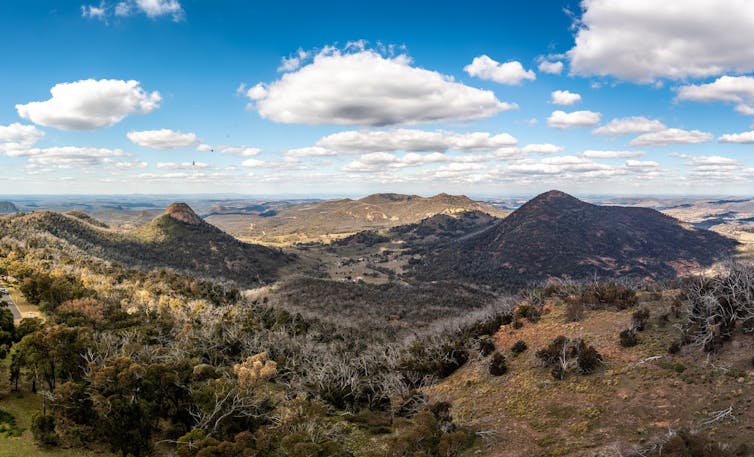
Our new study published in Nature Geoscience on an ancient chain of Australian volcanoes is helping to change our understanding of “hotspot” volcanism.
You may be surprised to learn eastern Australia hosts the longest chain of continental hotspot volcanoes on Earth. These volcanoes erupted during the last 35 million years (for 1 to 7 million years each), as the Australian continent moved over an area of heat (a hotspot) inside the planet, also known as a fixed heat anomaly or mantle plume.
But it appears the Australian hotspot waned with time. And we have found the volcanoes’ inner structure and eruptions changed as a result. Our new findings show hotspot strength has key impacts on the evolution of volcanoes’ inner structure, along with their location and lifespan.
Hotspots Change Earth’s Surface
Hotspot volcanoes can produce very large volumes of lava and have an important role in Earth’s evolution and atmosphere. Today, famously active hotspot volcanoes include the Hawaiian volcanoes in the Pacific Ocean and the Canary Islands in the Atlantic Ocean. These are known as ocean island volcanoes.
The Australian hotspot chain provides a continental perspective and covers the life cycle of a hotspot – a unique opportunity to better understand how hotspot volcanoes work, why they erupt, and how they evolve with time.
We found the strength of the hotspot and magma supply controls the duration, make-up and explosiveness of volcanoes at the surface. Around 35 to 27 million years ago, the early Australian hotspot was strong and generated enormous, long-lasting volcanoes across Queensland where magma (molten rock) took a direct route to the surface.
In contrast, the more recent (20 to 6 million years ago) New South Wales volcanoes are smaller and had shorter lifetimes, suggesting the hotspot lost strength with time. Interestingly, reduced supply made the magma’s journey to the surface more complicated, with many stops (magma chambers) and more explosive eruptions.
The tipping point occurred at the stunning Tweed-Wollumbin (Mount Warning) volcanic landscape, which formed 21–24 million years ago at today’s border between Queensland and New South Wales.
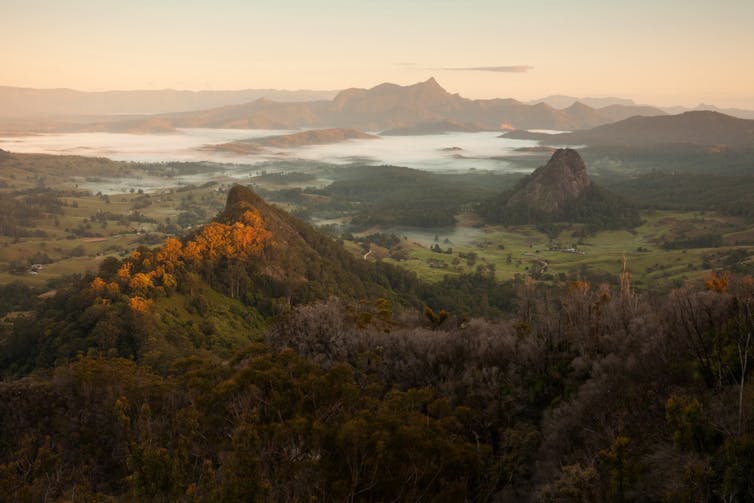
The Secret Journey Of Magma
To discover the journey of magma inside the volcano, and the stops it made on its way to eruption, we analysed volcanic crystals. These are the little heroes that make it all the way to the surface. Mainly composed of silicate minerals like olivine, pyroxene and plagioclase, the crystals grow in the guts of the volcano at high temperature, and register what happens before eruptions start.
These crystals are quite simple in northern volcanoes like Buckland in Queensland, which means they travel through few, simple magma chambers. In contrast, the crystals become very complex in southern volcanoes like Nandewar and Warrumbungle in New South Wales, which means they had a complicated journey through lots of busy magma chambers – lots of stops.
Importantly, when magma stops in a chamber, it cools down and becomes more viscous and difficult to erupt – a bit like cold toothpaste, instead of hot coffee. This thick, lazy magma may need new, hotter magma (caffeinated!) to come and push it to erupt.
If that happens, the gases trapped in the colder magma may not be able to escape, since the magma is so thick. This results in a pressure buildup, eventually exploding like a shaken bottle of fizzy drink – an explosive volcanic eruption.
A Special Clock
The cold and hardened lava flows we see in the form of volcanic rocks contain a special clock – radioactive chemical elements have slowly broken down into stable daughter products that accumulate and increase in concentration as time passes.
The beauty of this process is that we know how fast it occurs. By measuring the ratio of the radioactive element and its stable daughter product we can calculate the age of a volcanic rock. By measuring the age of each lava flow from the bottom to the top of the volcano, we can measure its lifetime.
Our study shows the relevance of Australian volcanoes, even if mostly extinct, in better understanding eruptions that have shaped the evolution of our planet. We demonstrate the fundamental role of hotspot strength and magma supply on Earth’s landscape, as well as the eruption styles and lifetimes of volcanoes.
This breakthrough makes it possible to visualise the inner structure of hotspot volcanoes, and their evolution, uniquely easily accessible in the ancient, exposed Australian landscape.![]()
Al-Tamini Tapu, Geoscientist, The University of Queensland; Paulo Vasconcelos, Professor, The University of Queensland, and Teresa Ubide, Associate Professor - Igneous Petrology/Volcanology, The University of Queensland
This article is republished from The Conversation under a Creative Commons license. Read the original article.
For the first time, astronomers have linked a mysterious fast radio burst with gravitational waves
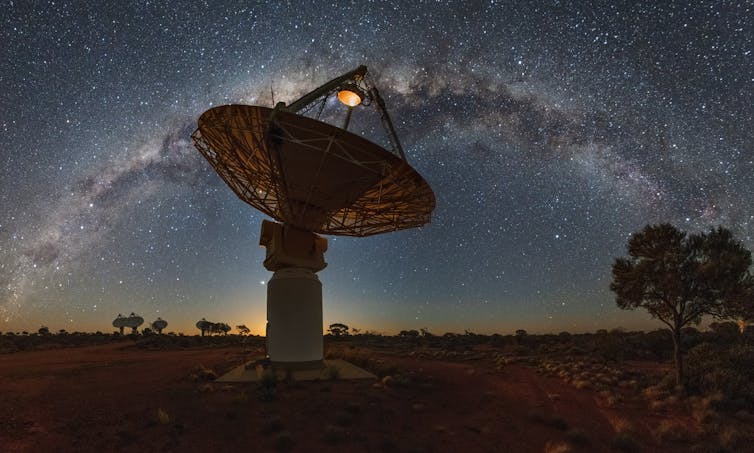
We have just published evidence in Nature Astronomy for what might be producing mysterious bursts of radio waves coming from distant galaxies, known as fast radio bursts or FRBs.
Two colliding neutron stars – each the super-dense core of an exploded star – produced a burst of gravitational waves when they merged into a “supramassive” neutron star. We found that two and a half hours later they produced an FRB when the neutron star collapsed into a black hole.
Or so we think. The key piece of evidence that would confirm or refute our theory – an optical or gamma-ray flash coming from the direction of the fast radio burst – vanished almost four years ago. In a few months, we might get another chance to find out if we are correct.
Brief And Powerful
FRBs are incredibly powerful pulses of radio waves from space lasting about a thousandth of a second. Using data from a radio telescope in Australia, the Australian Square Kilometre Array Pathfinder (ASKAP), astronomers have found that most FRBs come from galaxies so distant, light takes billions of years to reach us. But what produces these radio wave bursts has been puzzling astronomers since an initial detection in 2007.
The best clue comes from an object in our galaxy known as SGR 1935+2154. It’s a magnetar, which is a neutron star with magnetic fields about a trillion times stronger than a fridge magnet. On April 28 2020, it produced a violent burst of radio waves – similar to an FRB, although less powerful.
Astronomers have long predicted that two neutron stars – a binary – merging to produce a black hole should also produce a burst of radio waves. The two neutron stars will be highly magnetic, and black holes cannot have magnetic fields. The idea is the sudden vanishing of magnetic fields when the neutron stars merge and collapse to a black hole produces a fast radio burst. Changing magnetic fields produce electric fields – it’s how most power stations produce electricity. And the huge change in magnetic fields at the time of collapse could produce the intense electromagnetic fields of an FRB.
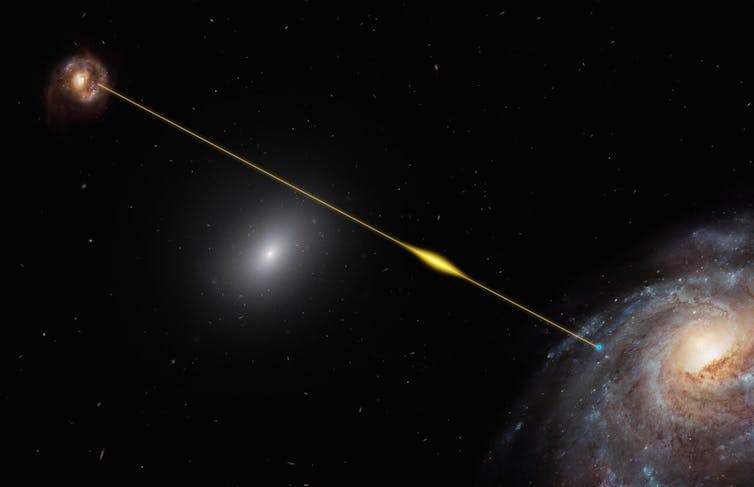
The Search For The Smoking Gun
To test this idea, Alexandra Moroianu, a masters student at the University of Western Australia, looked for merging neutron stars detected by the Laser Interferometer Gravitational-Wave Observatory (LIGO) in the US. The gravitational waves LIGO searches for are ripples in spacetime, produced by the collisions of two massive objects, such as neutron stars.
LIGO has found two binary neutron star mergers. Crucially, the second, known as GW190425, occurred when a new FRB-hunting telescope called CHIME was also operational. However, being new, it took CHIME two years to release its first batch of data. When it did so, Moroianu quickly identified a fast radio burst called FRB 20190425A which occurred only two and a half hours after GW190425.
Exciting as this was, there was a problem – only one of LIGO’s two detectors was working at the time, making it very uncertain where exactly GW190425 had come from. In fact, there was a 5% chance this could just be a coincidence.
Worse, the Fermi satellite, which could have detected gamma rays from the merger – the “smoking gun” confirming the origin of GW190425 – was blocked by Earth at the time.
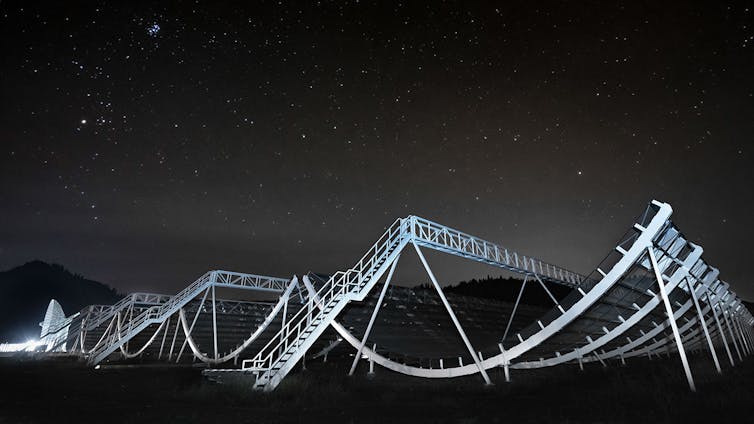
Unlikely To Be A Coincidence
However, the critical clue was that FRBs trace the total amount of gas they have passed through. We know this because high-frequency radio waves travel faster through the gas than low-frequency waves, so the time difference between them tells us the amount of gas.
Because we know the average gas density of the universe, we can relate this gas content to distance, which is known as the Macquart relation. And the distance travelled by FRB 20190425A was a near-perfect match for the distance to GW190425. Bingo!
So have we discovered the source of all FRBs? No. There are not enough merging neutron stars in the Universe to explain the number of FRBs – some must still come from magnetars, like SGR 1935+2154 did.
And even with all the evidence, there’s still a one in 200 chance this could all be a giant coincidence. However, LIGO and two other gravitational wave detectors, Virgo and KAGRA, will turn back on in May this year, and be more sensitive than ever, while CHIME and other radio telescopes are ready to immediately detect any FRBs from neutron star mergers.
In a few months, we may find out if we’ve made a key breakthrough – or if it was just a flash in the pan.
Clancy W. James would like to acknowledge Alexandra Moroianu, the lead author of the study; his co-authors, Linqing Wen, Fiona Panther, Manoj Kovalem (University of Western Australia), Bing Zhang and Shunke Ai (University of Nevada); and his late mentor, Jean-Pierre Macquart, who experimentally verified the gas-distance relation, which is now named after him.![]()
Clancy William James, Senior Lecturer (astronomy and astroparticle physics), Curtin University
This article is republished from The Conversation under a Creative Commons license. Read the original article.
Book Of The Month - April 2023: Poor Man's Orange by Ruth Park
Poor Man's Orange is a novel by New Zealand born Australian author Ruth Park. Published in 1949, the book is the sequel to The Harp in the South (1948) and continues the story of the Darcy family, living in the Surry Hills area of Sydney.
The title Poor Man's Orange refers to having to make do with second best.
The story has its beginnings in the awkward courtship of dreamily innocent Margaret Kilker and unwilling hero Hugh Darcy in the dusty country towns of rural Australia. After their marriage, the couple moves to Sydney and raises a family amid the brothels, grog shops and run-down boarding houses of inner-city Surry Hills, where money is scarce and life is not easy. Here their daughter Roie grows up all too quickly, while younger daughter Dolour tries to make sense of a world in which loss and love go hand in hand. Filled with beautifully drawn characters that will make you laugh as much as cry, Ruth Park's Australian classics take you from the barren landscapes of the outback to the colourful slums of Sydney with convincing depth, careful detail and great heart.
Continuing the history of the Irish Darcys begun in Missus and continued in The Harp in the South, this third instalment of a trilogy reacquaints readers with the vicissitudes of slum life in a Sydney suburb. An unforgettable family and a cast of unforgettable characters enliven a story that is sometimes tragic but often humorous in a time of poverty and destitution, hope and promise.
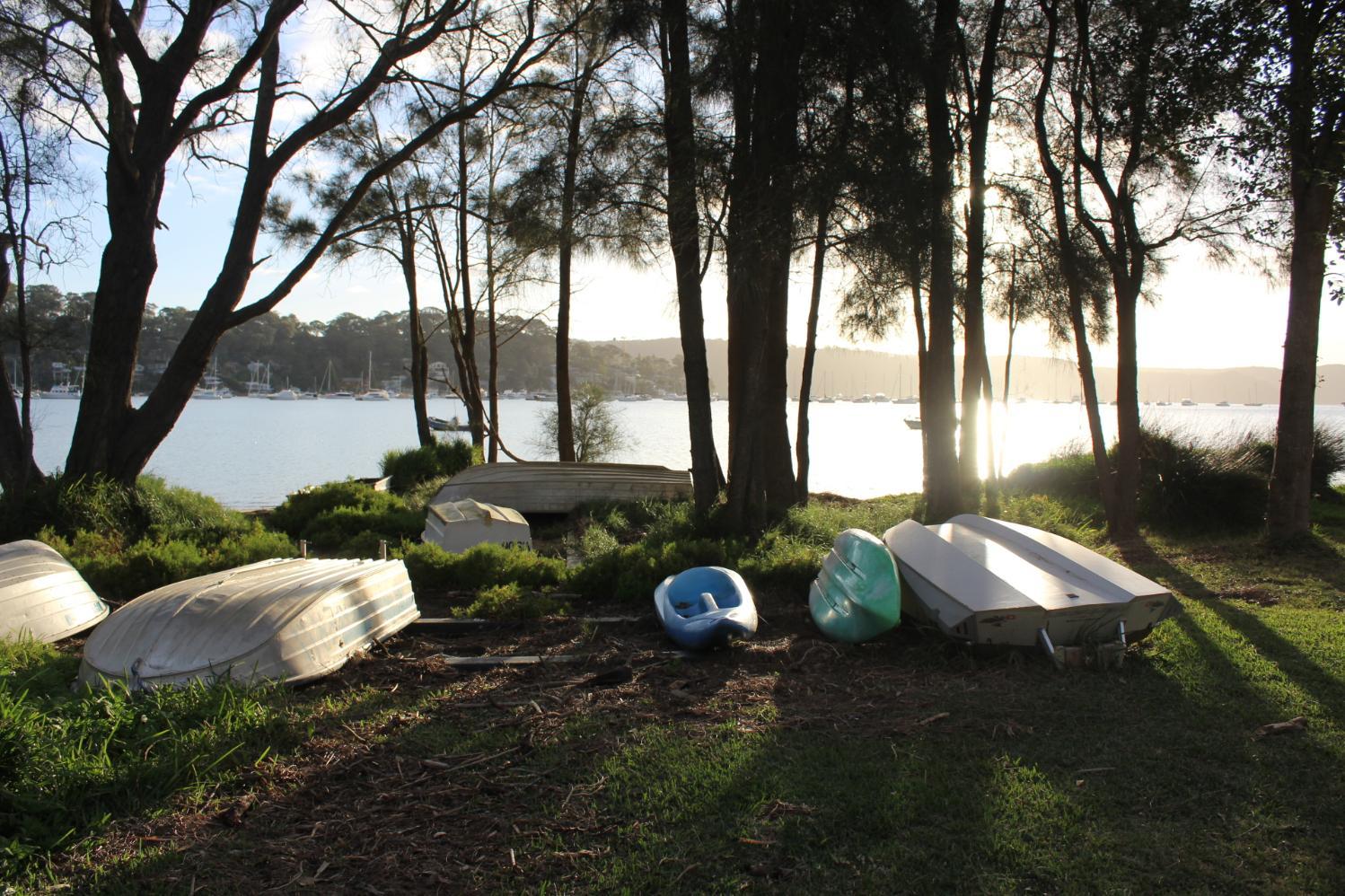
Expanded Access To Subsidised Oral Antiviral Paxlovid And Other COVID-19 Supports

80% Of Over 50s Hit By Cost-Of-Living
- renters
- low-income households
- people in their 50s
- larger households (3+ people)
- people in rural and remote areas

How To Apply For The Age Pension
- Be an Australian resident (that is, living in Australia on a permanent basis).
- Be in Australia on the day the claim is lodged.
- Satisfy government requirements on the length of time spent in Australia over your lifetime. In general, you will only qualify if you have spent 10 years or more in this country, five of them in a row.
Woolworths is getting into telehealth – but patients need to be treated as more than customers
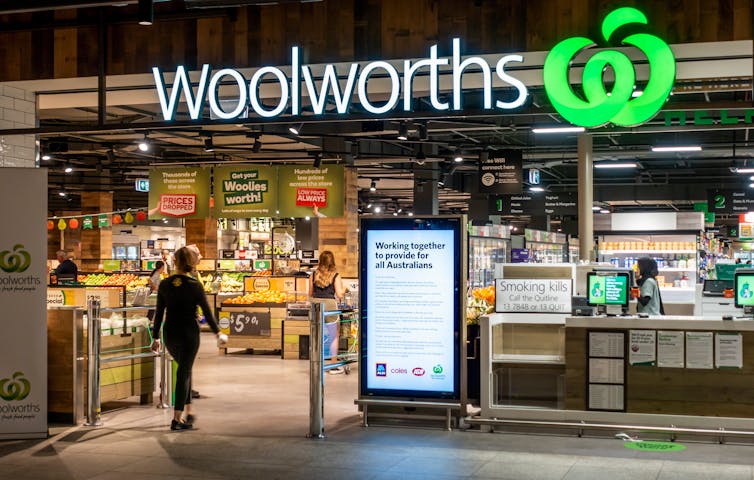
Earlier this week, Australian retail giant Woolworths announced a move into health-care delivery via development of its subsidiary HealthyLife’s online portal.
Through this portal, Australians can book a same-day 15-minute virtual GP appointment for A$45 and have any resulting prescription filled and delivered to their home. They can access other services such as a 30-minute virtual appointment with a dietitian or nutritionist for $115. They can also access free 15-minute virtual consultations with naturopaths.
Accessibility has long been an issue in Australian primary health care. With wait times for GPs growing, same-day appointments are becoming almost impossible.
But when a business provides both health advice and therapeutic products for sale, it raises ethical and regulatory questions.
Modern Life And Medical Appointments
Lots of people have difficulties with the logistics and time constraints of having to get to a physical location for an appointment. While the rapid move to telehealth appointments has given many Australians a taste for it, health policy and implementation has largely lagged behind.
“One-stop-shops” that offer health services, advice and information can serve as valuable tools to boost self-care. Yet there are some issues when these services are led by or become dominated by corporate players such as Woolworths.
Both Prescriber And Dispenser
Through Woolworths’ proposed model, the same company will be both prescriber and provider of pharmaceutical medications, food products and over-the-counter medicines and supplements. Woolworths’ subsidiary HealthyLife extended its partnership with SuperPharmacy late last year and rebranded it.
The direct-to-consumer and vertically integrated nature of this arrangement creates significant potential for commercial conflicts of interest.
It is also interesting to note that, unlike the other appointments available through the Woolworths’ clinical partners, naturopathic appointments will be offered for free. These will be provided by in-house naturopaths employed by Woolworths.
As naturopathic and public health researchers, we recognise why the company may have done this. Naturopaths have been actively included into corporate health promotion initiatives and health systems overseas. These programs and initiatives suggest potential benefits from naturopathic care.
While Australia has one of the world’s highest rates of consultations with a naturopath, health systems here have been slow to embrace their inclusion. Out-of-pocket costs also remain a barrier to access for people on lower incomes.
But Woolworths isn’t launching this initiative out of altruism – it has identified a clear market gap it thinks it can fill and is meeting a growing and unmet public demand for these services.

‘Medical Merchants’
Under Woolworths’ plans, GPs, dietitians and nutritionists will be engaged through partner networks rather than as direct employees. But naturopathic appointments will be delivered by in-house practitioners, employed by the same arm of Woolworths that sells natural health products.
These will also be the only appointments available to consumers for free. This may make them the most attractive option for many consumers. But it could also make these the appointments with the fewest safeguards if not handled correctly.
For example, will products accessible via Woolworths be prioritised over products from elsewhere that may be the best for the patient?
We’ve written about “medical merchants” and how in-house selling of therapeutic products presents ethical concerns previously. The proposed model could take this problem from individual clinicians to an institutional issue operating on a much grander scale.
Supplements are not in the five most commonly recommended treatments in Australian naturopathic appointments. Rather, naturopaths have been shown to most commonly (and effectively) prescribe non-pharmacological dietary, lifestyle, exercise and self-care advice to their patients.
But there is a valid concern that the shorter than usual naturopathic appointments to be offered by Woolworths could prioritise supplement recommendation over these options.
Working For Woolworths
It remains unclear as to whether the naturopaths employed by Woolworths will have the necessary autonomy to provide this comprehensive form of care.
Will they be encouraged to “de-prescribe” unnecessary supplements as well as prescribe necessary ones? Will they be supported if they recommend a non-product dietary intervention as a more effective option than specific nutrient supplementation?
Collaborative arrangements between employed practitioners and Woolworths’ clinical partner networks also remain unclear. Will an employed naturopath be able to refer to other practitioners if needed? Will these referrals be limited to Woolworths’ clinical partners? Fragmentation and under-treatment of potentially serious conditions could result if such issues aren’t transparently addressed.
The employment situation itself also raises potential legal and regulatory issues. If an employer sets product sales targets for a practitioner (and it should be noted there is no indication Woolworths is doing this), who is responsible if this results in inappropriate over-servicing or over-prescribing?
And of course, efforts need to be made to ensure any practitioners delivering the naturopathic appointments for Woolworths are appropriately qualified. For a profession such as naturopathic medicine – which remains an unregistered profession despite every government review of the past two decades recommending registration – the onus will be on Woolworths to ensure proper standards of qualification and practice among their practitioners.
Filling The Gaps
The Australian health system has been traditionally slow to innovate and reform to meet the needs and demands of modern consumers. In this context, the private sector will increasingly view these gaps as commercial opportunities.
In some cases the innovation in delivery and improved accessibility could bring health benefits. But we need to ensure the private sectors’ increasing interest in health service delivery is matched by increased accountability and safeguards, including targeted regulation if appropriate.
As corporations increasingly become involved in delivering health care innovation, we need to make sure the private sector views the people using health services as patients, not just pay cheques.![]()
Jon Wardle, Professor of Public Health, Southern Cross University and Amie Steel, Senior Research Fellow, University of Technology Sydney
This article is republished from The Conversation under a Creative Commons license. Read the original article.
Tasmanian Tapestry (1953)
MEN’S TABLE FOR PITTWATER, MONA VALE AND SURROUNDING AREAS
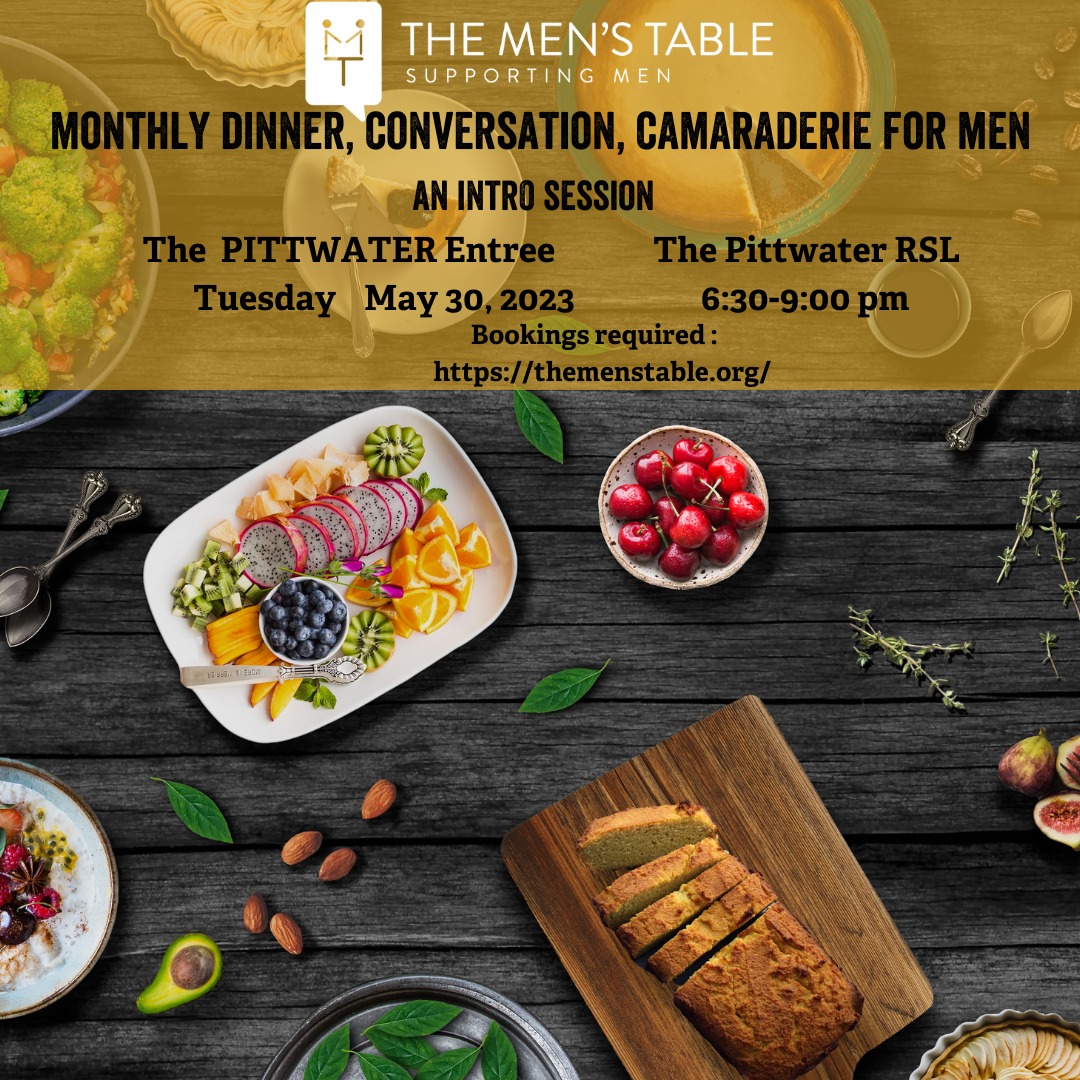
A Higher Dose Of Magnesium Each Day Keeps Dementia At Bay
Applications Now Open For Inaugural $10,000 Military History Prize
How to get more women on bikes? Better biking infrastructure, designed by women
Lauren Pearson, Monash University and Ben Beck, Monash UniversityThe number of women riding bikes has increased dramatically in cities globally, including a 50% rise in London during the COVID lockdown, and near-equal gender participation in Paris after pop-up bike lanes were put in place.
In Australia, however, cycling remains a male dominated and male-designed activity, where men outnumber women by two to one.
Despite low numbers, our research has found three in four women in one state (Victoria) are interested in riding their bikes, which raises the question, what is stopping them?
Our new study, published over the weekend, found that women experience gendered barriers to riding a bike compared with men. This includes a lack of supportive infrastructure, such as bike paths or protected lanes, to make them feel safer in traffic.
We found involving women in decisions about implementing new bike infrastructure, as well as expanding the use of e-bikes through financial incentives, are key to getting more women on the road.
Women Face Substantial Barriers To Bike Riding
Our study involved a survey and in-depth interviews with over 700 people across Melbourne. Women in the study described a lack of confidence about bikes, from buying and maintaining them to riding them.
When trying to buy one, for instance, women described being treated as “just a girlie with a bike”, often leaving shops with a bike insufficient for their needs.
We found that inclusive community groups such as Wheel Women and Chicks Who Ride Bikes can play a key role in tackling this by empowering women to ride.
Many women in the study also expressed a desire to ride more, but said lighting on bike paths was non-existent, inadequate or turned off after hours, leading them to fear for their personal safety. This limited how much they were willing to ride their bikes in winter, or for other trips outside of daylight hours.
To compound this, women reported bike paths often detouring into dark underpasses. While underpasses protect bike riders and walkers from overhead traffic, they often feel hidden from public view and have inadequate lighting and limited escape routes.
There are ways to address this, too, such as reflective surfaces, gentle turns to improve visibility and encouraging greater community use of the spaces.
Including Women In Planning Decisions
Women take different kinds of trips and ride different bikes from men. Women also have different preferences for biking infrastructure that makes them feel safe and comfortable.
And yet, when it comes to creating spaces for people to bikes in cities, women do not have a clear seat at the table.
In Australia, the majority of biking infrastructure is implemented by transport engineers, of which only 15% are women.
Our study highlights the critical importance of protected bike lanes to encourage more women to ride a bike. Protected bike lanes limit interactions between bikers and car drivers, minimising risk of injury and potential harassment from motorists. Despite these benefits, a 2018 study found that 99% of all bike lanes on Melbourne roads remain unprotected.
Women with children described wanting to make trips by bike in their local areas, but had concerns about “missing links” between bike paths, leaving them vulnerable to motor vehicle traffic.
Building protected bike lanes across cities is a difficult task, but there are other options. For instance, Australian cities could design networks of protected bike lanes that stitch together 30km/h speed zones and low-traffic neighbourhoods.
E-Bikes Are Out Of Reach For Many
Over half of the women in our study were concerned about collisions with motor vehicles. And significantly more women reported concerns about their physical ability to ride a bike. They described feeling like they could not “keep up” with traffic or worried about their physical fitness to escape tricky situations.
E-bikes allow women to transport children without worrying about their physical ability and can allay concerns about keeping up with cars. Despite the benefits, however, the cost of e-bikes remains out of reach for many.
E-bike financial incentives, such as tax rebates and car trade-in schemes are common all over the world, but do not yet exist anywhere in Australia. Such incentives are critical to enabling a greater number and diversity of women to ride a bike.
As we move toward net-zero-emission cities, the shift to sustainable and active modes of transport is essential. Empowering women to drive the conversation about what they need to be able to ride a bike – and increasing the number of women designing and planning biking infrastructure – is crucial to ensure women aren’t left behind.![]()
Lauren Pearson, Postdoctoral Research Fellow, Monash University and Ben Beck, Associate Professor and Head of Sustainable Mobility and Safety Research, Monash University
This article is republished from The Conversation under a Creative Commons license. Read the original article.
Older people have eating disorders too – but they’re a largely ignored group
Louisa Shirley, University of Manchester and Suzanne Heywood-Everett, Leeds Beckett UniversityJosie (not her real name) has bulimia. She is prescribed steroids to manage a lung condition and heart failure and has gained a significant amount of weight as a result of using the drugs. Her body mass index (BMI) is over 35, which is in the obesity range. She was referred to the Community Mental Health Team because she had returned to her GP, concerned about her low mood, anxiety and difficulty walking.
Josie saw the team physiotherapist because she was at risk of having a fall and was avoiding leaving the house. She was also assessed by a clinical psychologist – a specialist in eating disorders. The psychologist asked Josie about her weight, shape and eating concerns. This was the first time her eating disorder has been diagnosed despite years of fasting, binge eating, and using diet pills and laxatives.
Josie is 69 years old. She is a member of the invisible population of older adults with an eating disorder.
She was sexually and physically abused in her early life and hated how big she felt when around others – particularly men.
Josie had been taking laxatives since she was 19 and kept her BMI between 23 and 27, that is, between a healthy weight and overweight. She had sought help from her GP many times but was told that the local eating disorder service only accepted people with a BMI below 17. Josie was told that she was “too big” to get help.
Now she is desperate about the lack of control she has in regulating her weight and has resorted to eating just one meal a day. She perceives her symptoms of water retention and stomach bloating as fat and so she has started restricting her eating again, which then triggers binge eating.
Josie told the psychologist that she is now avoiding taking steroids because she is worried about putting on weight. She also worries about being judged and won’t leave the house for fear that the neighbours will see how “big” she has become.
Not Recognised
When Josie’s symptoms began in the early 1970s, eating disorders were not commonly recognised and treatment was in its infancy. Talk therapy for common mental health problems and trauma was also rarely available in the NHS.
Bulimia nervosa was not recognised as a mental health disorder until 1980 when it gained an entry in the third edition of the “psychiatrists’ bible”: the Diagnostic and Statistical Manual III (DSM-III).
In the 1950s and 60s, during Josie’s formative years, people’s views of mental health were very different to now, and so were the ways of dealing with psychological distress.
This, paired with our tendency to make assumptions about people over a certain age, that they won’t experience eating disorders and that the focus of discussions and consultations with doctors will be on physical health rather than mental health, means older people with eating disorders are not noticed, diagnosed or treated.
Since Josie’s early experience, and even in the years since eating disorders were taken seriously, the diagnostic criteria for eating disorders have improved, but progress has been slow. For example, the need for the absence of menstruation to fulfil the diagnostic criteria for anorexia remained in place as late as 2013 (DSM-V).

Ageism
New diagnostic criteria have broadened since DSM-V, but we still don’t hear about eating disorders in older people. Ageism may be at the centre of this.
Research into eating disorders tends to exclude older people. Researchers looking to study interventions for people with eating disorders tend to recruit participants from social media or from eating disorder clinics – meaning older adults are largely ignored. Consequently, guidelines for interventions are based on evidence for what works in a younger cohort.
The most common eating disorders are binge-eating disorder, bulimia and anorexia. There is very little research on eating disorders in people over 50. These disorders are not routinely screened in general practice and therefore not reported in NHS data.
Older people with eating disorders are likely to fall into one of three groups. One, people like Josie with a long-standing eating disorder (one that has probably never been treated). Two, people who have had a relapse of a prior eating disorder. And three, people who have developed a problem later in life.
Eating disorders are linked to cardiovascular disease and osteoporosis, among other health problems. Screening and treating these disorders can prevent these long-term effects and ultimately save the NHS significant time and money. Surely, as a minimum, people like Josie should not be discriminated against because they were born in the wrong era or because their BMI is “not low enough”.
Josie is Suzanne’s patient![]()
Louisa Shirley, Clinical Lecturer, University of Manchester and Suzanne Heywood-Everett, Visiting Lecturer, Clinical Psychology, Leeds Beckett University
This article is republished from The Conversation under a Creative Commons license. Read the original article.
Preserving The Stars: Light Pollution And What You Can Do About It
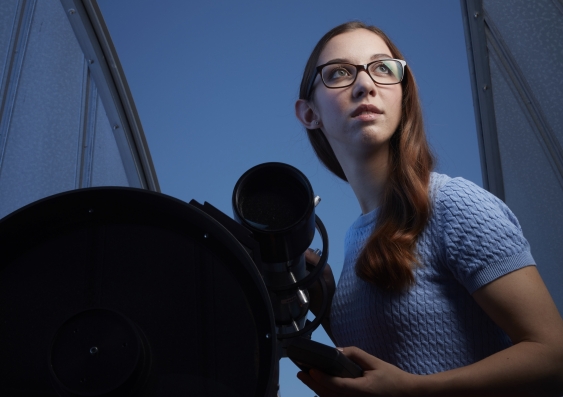
Severe Respiratory Infections Linked To Some Congenital Cardiovascular Defects: UNSW Study
Our new study provides a potential breakthrough on school bullying

Your child comes home from school and tells you three classmates are teasing her constantly. One even put chewed gum in her hair as she was listening to the teacher. The other two smiled, laughed and whooped.
Hearing this, you understand your child is being bullied and their physical and mental wellbeing are under attack.
We know bullying is widespread: 30% of adolescents experience bullying, and almost all see it happening. It can devastate victims and lead to depression, anxiety and self-harm.
We are educational psychologists researching how to prevent bullying. And how, in a different scenario, these children could even be friends.
Our new study, published in American Psychology, trialled a new way of tackling bullying among students in South Korea. Instead of trying to change individuals’ behaviour, it puts the focus on how teachers can create an “anti-bullying climate” in their classes.
We believe this could be applied more broadly and provides a potential breakthough in approaches to this crisis.
Previous Bullying Research
For 50 years, educators have tried and failed to develop successful bullying-reduction programs.
In a recent journal article we reviewed existing school anti-bullying research. The results were disappointing. In particular, we found a focus on changing individual students’ behaviour has been largely ineffective.
We know bystanders can play an important role in standing up to bullies. But this is a risky thing to do. If you stand up to a bully, you put yourself at risk of retaliation and peer rejection. So bystanders are reluctant to support victims and discourage bullies. This is why individual approaches have not worked well.
This suggests we need to think more broadly about bullying and look at the social environment of the classroom to encourage more students to defend victims and defuse bullies.
Our Research
To develop a new approach to tackle bullying, in a separate study we looked at 24 experienced, full-time physical education teachers in Seoul. The group included both male and female teachers, teaching adolescent students.
For each teacher, we looked at two different classes, so there were 48 classes in total and 1,178 students.
The teachers were randomly assigned into two groups over an 18-week semester. One group was given a new approach to bullying to try, called “autonomy-supportive teaching”, while the other had no intervention.
What Is Autonomy-Supportive Teaching?
The idea behind autonomy-supportive teaching is to prevent bullying by cultivating a caring, egalitarian classroom that minimises hierarchy, conflict and “me-vs-you” competition.
The teacher sets the tone in the classroom and they can foster an anti-bullying climate when they:
take the students’ perspective
use an understanding tone when interacting with students
provide an explanatory rationale for each request, and
acknowledge and accept students’ negative feelings if they occur.
Research has shown when teachers do these things, students view teachers as “on their side”. This sense of being listened to and supported by the teacher then spills over to more supportive peer-to-peer relationships. Students then tend to support each other, and interpersonal conflict is low.

What Happened In Our Study?
The teachers in our first group were asked to participate in an eight-hour autonomy-supportive teaching workshop at the start of semester. The teachers in the second group had no intervention from us, and approached their classes as they normally would.
Students in both groups were then surveyed at three points in the semester, asking them questions about the classroom climate.
Students were asked both how their teacher behaved and how they felt about their classmates. For example, they were asked to agree or disagree with statements including: “My teacher listens to how I would like to do things” and “My classmates try to understand how I see things”.
They were also asked about bystander behaviour and bullying, with questions such as: “I do something to help if I see a kid being called nasty names or threatened” and “In this class I was called names I didn’t like”.
Our Findings
Using statistical analysis, we first tested whether teachers in group one followed the autonomy-supportive model as they were taught in the workshop. We found that they did.
We then tested whether students reported their classmates were supportive (as you would expect if the teacher was following the workshop’s advice), and also found they did.
We then tested whether students in this group were more likely to stand up for other students and less likely to experience bullying than those in group two (who did not follow the autonomy-supportive model).
Again, we found they were more likely to stand up to bullying and less likely to experience it.
Next Steps
Our study showed how programs that change classroom climates can minimise bullying.
We are now hoping to extend our research in Australian school settings. We plan to scale up our program through online delivery.
This way, we can reach a larger, more diverse sample of schools, including those in remote locations.![]()
Herb Marsh, Distinguished Professor of educational psychology, Australian Catholic University and Johnmarshall Reeve, Professor, Australian Catholic University
This article is republished from The Conversation under a Creative Commons license. Read the original article.
NSW Labor unlikely to win majority after flopping on pre-poll votes
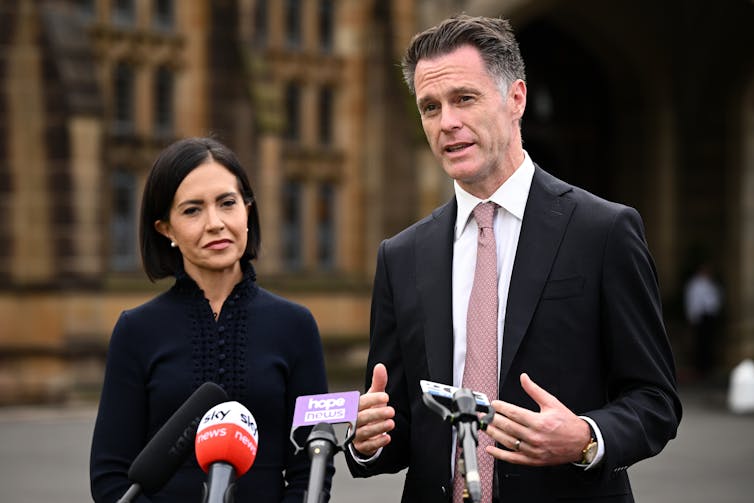
Labor is unlikely to win more than 46 of the 93 lower house seats at Saturday’s New South Wales state election, which would be short of the 47 required for a majority. The Coalition is likely to win 35 seats, the Greens three and independents nine. Depending on the outcome in Ryde, where Labor currently leads narrowly, Labor is likely to win 45 or 46 seats.
In Saturday night’s article on the election that was updated Sunday morning, I said that The Poll Bludger’s results estimated Labor led in 51 of the 93 seats, based mostly on election day booth swings. I said that unless there was a systematic issue with the remaining votes, Labor would win a majority.
People who voted at pre-poll booths before election day made up 28% of enrolled voters. On Monday and Tuesday, pre-poll booths in the close seats were counted, and the swings on pre-poll booths have been much worse for Labor than the swings on election day booths.
An example of Labor’s poor performance on pre-poll votes is Goulburn, which the Liberals held by a 3.1% margin going into the election. On election day booths, The Poll Bludger’s results give Labor a 4.4% swing, enough to overturn the Liberal margin. But the Liberals gained a 0.8% swing to them on pre-poll booths.
Owing to the pre-poll votes, Labor has fallen behind in five seats that they appeared to lead on election night. The closest current Liberal leads are Terrigal (Liberals lead by 50.3-49.7), Goulburn (50.5-49.5) and Holsworthy (50.7-49.3).
Remaining votes in these seats will mostly be postals (which help the Liberals), and absents (which help Labor). But it’s unlikely that Labor can overturn any of the current Coalition leads.
The marked difference in swings between the pre-poll and election day booths is evidence there was a late swing to Labor that showed up on election day, but not in the votes cast before election day.
If Labor is short of a majority, they will still have at least a 45-36 seat lead over the Coalition. With three Greens and some left-leaning independents, it’s clear Labor would govern. This is not the hung parliament of the Victorian 1999 or federal 2010 elections, where there was a one-seat gap between the major parties and the next government was decided by independents.
In Kiama, Liberal Gareth Ward was forced out of the party over charges of sexual assault (which he denies). He ran as an independent, and defeated Labor and an endorsed Liberal, although there was an 11% two party swing to Labor when comparing Ward to what he polled in 2019 as a Liberal.
The Poll Bludger’s results estimate Ward will defeat Labor by 51.2-48.8 when all votes are counted, from primary votes of 39.7% Ward, 34.7% Labor, 11.5% Liberals and 10.7% Greens. I wrote in 2021 that sexual misbehaviour does not appear to have an electoral cost.
Labor’s issues with pre-poll voting have also affected their statewide vote. On election night, the ABC was estimating a Labor two party vote of around 55-45, but that has dropped back to 53.8-46.2 with 68% of enrolled voters counted, a 5.8% swing to Labor from the 2019 election.
Current lower house primary votes are 37.1% Labor (up 3.8%), 35.5% Coalition (down 6.1%), 9.5% Greens (down 0.1%), 1.7% One Nation (up 0.6%), 1.5% Shooters (down 1.9%) and 14.7% for all Others (up 3.7%). Others includes 9.0% for independents (up 4.3%).
Coalition Also Improves In The Upper House
The upper house is elected by statewide proportional representation with preferences, and a quota is 1/22 of the vote or 4.5%. With 54% of the statewide upper house vote counted, Labor has 8.14 quotas, the Coalition 6.67, the Greens 2.05, One Nation 1.26, Legalise Cannabis 0.80, the Liberal Democrats 0.72, the Shooters 0.68 and Animal Justice 0.46.
Current results do not include below the line (BTL) votes. Once these votes are included, the Coalition will drop a little. The Coalition is also likely to fall back when absentee votes are counted, but could continue to increase until then. They have gained 0.24 quotas since Saturday.
A seventh seat for the Coalition instead of one for Animal Justice would deny the left-wing parties (Labor, the Greens, Legalise Cannabis and Animal Justice) the 12-9 split at this election they need to take control of the upper house. An 11-10 left split would mean the overall upper house would be tied 21-21 between left and right.![]()
Adrian Beaumont, Election Analyst (Psephologist) at The Conversation; and Honorary Associate, School of Mathematics and Statistics, The University of Melbourne
This article is republished from The Conversation under a Creative Commons license. Read the original article.
What is a paraben and why are so many products advertised as ‘paraben-free’?

You might have noticed many skin and haircare products are advertised as “paraben-free”, or come across online influencers warning parabens are terrible for your health.
But what is a paraben? And could a minor ingredient in products that many of us use daily really be that bad for us?
Let’s take a closer look.
What Are Parabens?
Chemically speaking, paraben is the collective name for a group of closely related compounds – the parahydroxybenzoates. The “para” refers to the positions of certain parts of the molecule (it’s also where the “para” in “paracetamol” comes from).
There are several different types of paraben, so you might see methylparaben, ethylparaben propylparaben, or butylparaben, in a product’s ingredient list. They may also be listed as a more formal chemical name. Methylparaben can be listed as 4-hydroxy methyl ester benzoic acid or methyl 4-hydroxybenzoate for example.
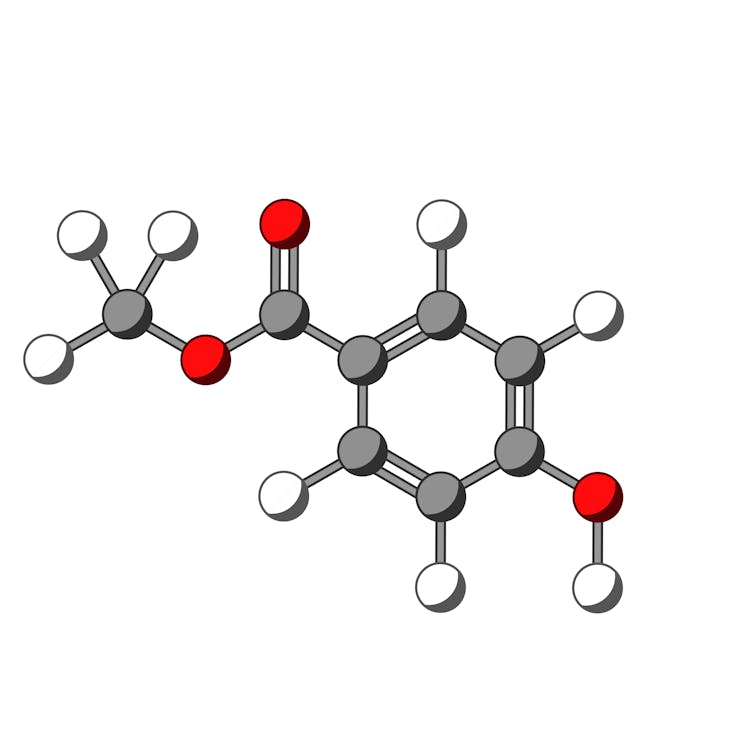
The shorter version is that parabens are a group of related molecules added in small amounts (less than 1%, usually lower) to food, drugs and cosmetics as preservatives.
They work by preventing the growth of harmful bacteria and fungi to improve product shelf life and safety. More than one paraben may be used, and they may be combined with other preservatives to protect against a broad range of microorganisms.
Parabens can be absorbed through the skin or ingested but are generally excreted quickly, usually via urine. They have been in use for decades and no parabens have been banned in Australia.
Some studies on cell cultures or animals have suggested parabens can affect the endocrine system (which controls our hormones) but it’s not clear how or even if this is relevant to humans.
The amounts used in some of those animal studies are much, much higher than you would find in make-up, for example. A lot of these studies also involved feeding the chemicals to the animals or injecting them, rather than putting them on the skin (which results in much lower absorption into the body).
You might also have heard parabens are “oestrogenic” (meaning they can mimic or affect oestrogen in the body). In fact, parabens are far less oestrogenic than natural oestrogen (that both males and females produce). They are also less oestrogenic than phytoestrogens, compounds produced naturally by many plants.
So, even though there have been studies raising concern, the overall risk in humans using parabens in normal doses is low. As the Australian Industrial Chemicals Introduction Scheme puts it:
The available data do not indicate any risks associated with exposure to the chemicals in this group. The chemicals have been shown to have weak oestrogenic activity, but there are no established adverse outcome pathways for this effect.
The US Food and Drug Administration reached a similar conclusion, noting
Studies have shown, however, that parabens have significantly less oestrogenic activity than the body’s naturally occurring oestrogen. Parabens have not been shown to be harmful as used in cosmetics, where they are present only in very small amounts.
Isn’t Natural Better? Aren’t Human-Made Chemicals Bad For You?
Whether something is natural or not tells you nothing about its safety.
Snake venom is natural, as is uranium, lead and mercury. I wouldn’t buy personal care products with these “natural” ingredients in them.
Many things we use every day without a second thought – like aspirin, nylon, and silicone cookware – are synthetic.
The name of a chemical also tells you nothing about risk. If I told you a substance contained ethyl butanoate, pentyl acetate, ethene and capric acid, would you eat it? Well, you probably already have; these are all found in bananas and many other fruits.

So Why Are People Worried About Parabens, Then?
This goes back to an often misinterpreted 2004 study that found parabens in breast tissue and breast cancers. But this doesn’t mean much by itself and doesn’t justify claims parabens cause cancer.
Correlation is not causation. The presence of parabens in a tumour does not mean parabens caused the tumour.
In fact, the researchers in the 2004 study only looked at breast cancer tissue (and didn’t compare it with healthy tissue). They even found parabens in their blank samples (with no tissue in them at all). So, as others have noted, it’s hard to draw any real conclusion from it about the role parabens may or may not play in cancer risk.
A lot of the endocrine disruptor stuff you hear on social media about parabens is usually from someone trying to spruik a “natural” or “clean” alternative, so you might not be seeing the full picture.
And remember: the presence of something does not automatically mean it is harmful. Toxicology 101 is “the dose makes the poison”. Everything is toxic in the right amount, even water. We should not ask whether a chemical causes cancer or acts as an endocrine disruptor, but whether it does so at the levels to which we are exposed.
The scientific consensus from the US Food and Drug Administration, the Australian Industrial Chemicals Introduction Scheme and the European Medicines Agency and others is that for parabens at normal dosages, the health risk is very low.
So Why Are So Many Products Marketed As ‘Paraben-Free’?
Going “paraben-free” has become a very effective marketing tool. If people want paraben-free products and will pay more for them, why not give them paraben-free products?
But paraben-free does not mean preservative-free, nor does it mean the products are safer (even if that’s what is implied).
If you remove parabens from a product, you need to add other preservatives, which may be less effective. This increases the risk of the product going off (some users of “clean” make-up brands have reported finding mould in products) and could even cause harm.
So What’s The Verdict?
Ultimately, the choice to use products containing parabens is a personal one.
As a chemist I think parabens are well-researched, safe and and necessary, but if you are worried, you can opt for paraben-free products. Just be aware they will probably have a shorter shelf life, contain other (less effective) preservatives, and could well have other problems. I’d take a small amount of a well studied, and well-regulated, chemical in my skincare products over mould any day.![]()
Oliver A.H. Jones, Professor, RMIT University
This article is republished from The Conversation under a Creative Commons license. Read the original article.
TGA review strengthens case for much tighter vape restrictions at the border

On Friday, the Therapeutic Goods Administration (TGA) updated its review of proposed reforms to the regulation of nicotine vaping products. It reported the federal government is now “actively considering” the TGA’s advice.
The TGA’s advice has not been released at this time, but a top-level summary of the review consultation submissions was. It restated the review’s scope, focused on changes to border controls for nicotine vaping products, minimum quality and safety standards – including the idea of categorising nicotine vaping products as therapeutic goods.
The update’s emphasis on enforcement and safety supports the goal to ensure nicotine vaping products are available only to people using them to try to quit smoking.
Nothing Is Off The Table
Three weeks ago, all the Australian health ministers agreed to set up a working group to consider options to address the availability of all e-cigarettes, including nicotine and non-nicotine containing devices.
Since then, Federal Health Minister Mark Butler has been increasingly vocal about improving border controls to enforce Australian laws that say nicotine vapes should only be available via prescription.
Butler says “nothing is off the table” – except allowing the sale of nicotine e-cigarettes without a doctor’s prescription in retailers such as convenience stores. Currently, illicit sales of nicotine vaping products are occurring on a growing scale, with hundreds of retail outlets selling nicotine e-cigarettes in blatant breach of public health laws.
What Do The Consultation Responses Tell Us?
The TGA published almost 4,000 submissions.
They came primarily from two viewpoints. On the one hand, the majority of public health stakeholders (including non-government organisations and state and territory government health and education agencies) who called for stronger border controls. On the other, those aligned with commercial interests calling for nicotine e-cigarettes to be sold legally over the counter.
The TGA noted a large number of submissions from “the general public” appeared to be “campaign responses” calling for vaporiser nicotine to be removed from the poisons standard so it can be sold by any retailer.
This is a well-worn tactic used by the tobacco industry and its retailer allies – orchestrate responses to public consultations purporting to be the voice of the community. In reality, these represent the interests of commercial entities. And anyway, repealing the scheduling of vaporiser nicotine as a prescription-only substance is not within the scope of the review.

Unresolved Issues
Although state and territory government health and education agencies called unanimously for tighter border controls, there were varied views on how this could be achieved.
Some proposed the introduction of an import permit. Others suggested amending customs regulations administered by the Department of Home Affairs, which would require Australian Border Force to seize nicotine vaping products imported without medical authority. Many submissions proposed extending this to non-nicotine vaping products as well.
Independent health groups – particularly the Cancer Council, the National Heart Foundation and the Australian Council on Smoking and Health, who were previously involved in landmark policy achievements such as plain packaging of tobacco – all supported customs seizures.
Based on all the evidence, including the harms of vaping, patterns of use and current policies, this option would turn the tap off at the border. State and territory governments must also end illegal retail sales in their respective jurisdictions. This would end current exemptions for non-nicotine vaping product sales, and ensure all vaping products, regardless of claimed nicotine content, are only accessed through the prescription pathway.
The proliferation of so-called non-nicotine vaping products, many of which contain nicotine when tested, is disrupting enforcement efforts to make nicotine vaping products prescription-only.
What Happens Next?
It’s time for greater enforcement and regulatory reform action – not just deferral to “working groups”, “consultations” and “inquiries”. Queensland’s parliament just moved to conduct another inquiry of e-cigarettes, at least the fourth in Australia since 2017.
Soon we’ll hear what the government plans to prioritise. If the federal response to the TGA review turns out to be an import permit instead of prohibiting imports, then it must be backed with effective enforcement. Retailers are already flouting federal laws (both the poisons standard and the Therapeutic Goods Order) and state/territory public health acts by importing and selling nicotine vaping products. Without enforcement, an import permit will be just another policy instrument to be ignored.
Nothing turns a profit like commercialised addiction. Vaping manufacturers and retailers know this and appear determined to addict as many users as possible through increasing lawbreaking, while Australian governments “consider their options”. Not since the debut of mass-marketing of cigarettes in the 19th century has a whole population been at such risk of nicotine addiction and health harms on an industrial scale.
The evidence is clear. E-cigarettes are harmful to health, non-smoking users have a three-fold risk of smoking uptake, the largest user groups are young adults aged under 25, and teenagers and few people are successfully using e-cigarettes to quit smoking.
Australian governments are clear about their shared commitment to restricting nicotine vaping products to a prescription pathway. Now they need to commit to action – by seizing all imported vaping products not destined for a pharmacy, and extending the current restrictions and enforcement to all vaping products.![]()
Becky Freeman, Associate Professor, School of Public Health, University of Sydney and Paul Grogan, Senior Adviser, The Daffodil Centre, University of Sydney
This article is republished from The Conversation under a Creative Commons license. Read the original article.
Diet And Exercise Programs Alone Won't Tackle Childhood Obesity
- Childhood obesity is largely a by-product of socio-economic status
- Parental high school levels (both paternal and maternal) serve as on-ramps to childhood obesity
- When children are aged 2 to 4 years the causal pathway is: socio-economic status/parental high school level -> parental BMI -> child BMI
- When children are aged 8 to 10 years an additional pathway emerged focused on how children spend their leisure time: parental high school level /socio economic status -> electronic games ->free time activity-> child BMC
- The upstream influences on free time activity were different in boys compared with girls.
- The strong and independent link between parent's BMIs and childhood BMI suggests a biological link -- high weight runs in families, and this is in part because of shared genes.
Dieting: Brain Amplifies Signal Of Hunger Synapses
Phthalate Alternative May Harm Brain Development And Health
Disclaimer: These articles are not intended to provide medical advice, diagnosis or treatment. Views expressed here do not necessarily reflect those of Pittwater Online News or its staff.